|
Made With |
|
|
|
|
Dr. Hoffer's Travel WebSite This site was last updated 10/01/16 |
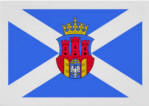
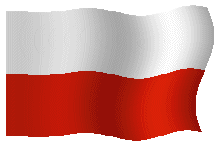
![]() POLAND13 #8
Auschwitz-Birkenau
POLAND13 #8
Auschwitz-Birkenau
![]()
![]()
Flag of KRAK�W

Thursday, September 12, 2013
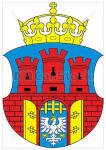
KRAK�W
[We have now finished the first two weeks of our trip.]
I woke at 3:45 AM, 8:00 AM and finally at 11:20 AM. I got my running clothes on and headed out to do my run. I went downstairs using their modern elevator (below left.) Here is our front door (center) clearly unmarked and the doorbell to ring (below right,) also unmarked as to this being a hotel.
Here are GoPro shots which I PhotoStitched to show the panorama of our Hotel Santi (on the right with the man in front) and the little pub next door (to the left of it.)
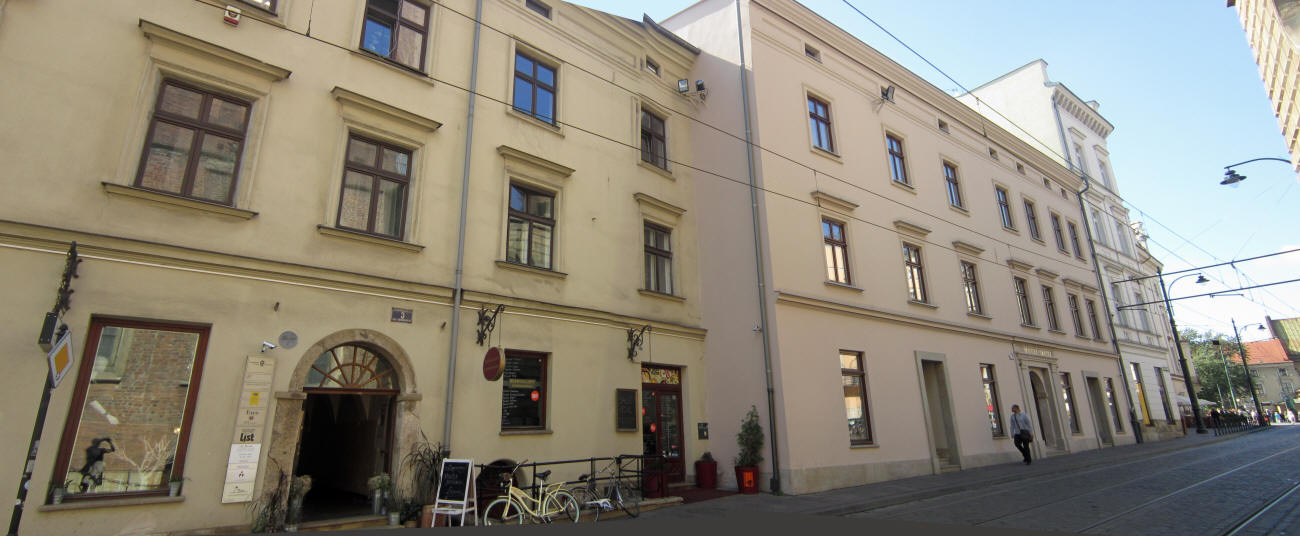
Looking down the street to the left a little further you can see the restaurant we went to last night (below left.) Below right is a photo of the end of the block, ulica Poselska, the one-way street where you can see on the right side the entry gate to our hotel parking lot.

There (below left) is the corner of ulica Poselska and Dominikańska, the sign for Ancora Restaurant (center) and that of the Beergallery (below right.)
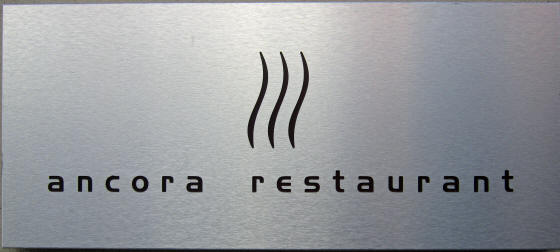
The only negative thing I can say about our hotel (other than no signage) is the incessant trams going by constantly in both directions right in front of the hotel (below.) Some are old (above) and others are more modern (below.)
Our room was on the second floor in the front, so if you leave the window open, the noise is horrendous.
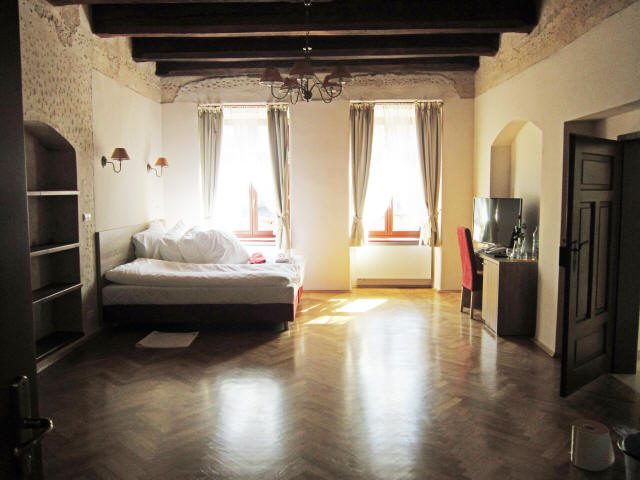
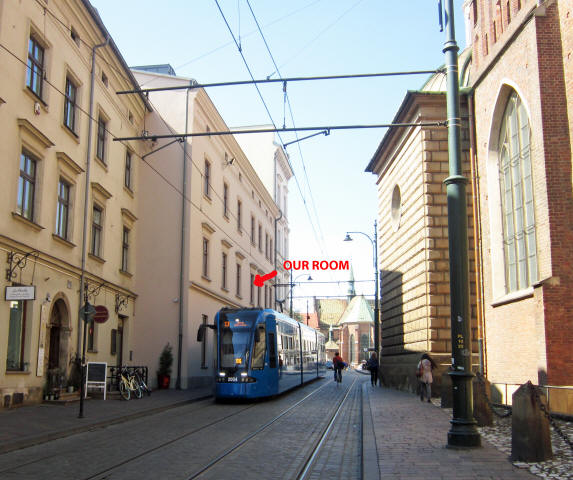
Below left is looking up our street and on the right is the big Dominikańska church just across the street.
As you turn the corner, here is the front of the church. It is the 13th Century Gothic Dominican Basilica of the Holy Trinity [Polish: Bazylika Świętej Tr�jcy.]
At 12:25 PM I started my run through Planty park as I did yesterday. I wanted to run to the Royal Hotel to thank the bartender for helping us the other night. Its very nice now that the sun is shining.
This is really a beautiful place to run. I even caught a glimpse of the walled Wawel castle (below.)
I finally reached the Royal Hotel which is huge; covering over a half a block. It is right along the park. They have this eating area built just off the hotel (below right.)
Here is the front of the Royal Hotel (left) and the back of it (right) with the parking lot we had pulled into on our arrival in Krakow.
At 12:50 PM
I entered the back of the hotel (below left) and went into the pub called the
Royal Art Cafe [Świętej
Gertrudy 29,
![]() +48-12-618-4041.] Lucky for me, Tomascz (below right) was there and I got to
tell him the whole story of how we finally found our hotel and thanked him for
trying to help
us.
+48-12-618-4041.] Lucky for me, Tomascz (below right) was there and I got to
tell him the whole story of how we finally found our hotel and thanked him for
trying to help
us.
Below is a stock photo of the interior.
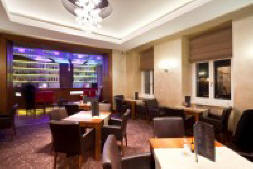
I then went back to the front of the Royal Hotel (below left) and there I was at the corner of three streets; Sienna, Starowislna and Świętej Gertrudy (below right.)
Below left is an aerial view of the intersection and on the right is looking up the two streets.
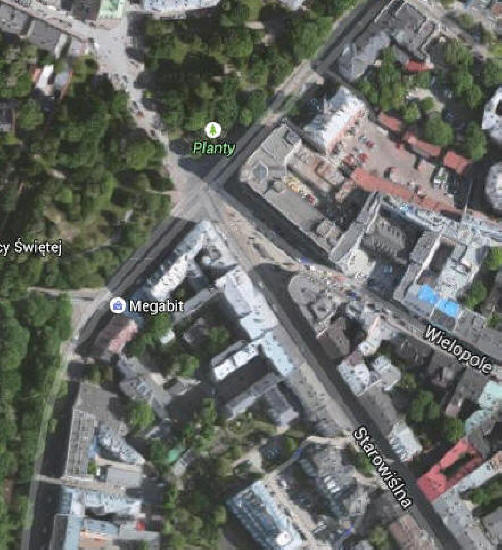
I then went back to the Royal and took photos of the
Pod Wawelem brewery restaurant [św.
Gertrudy 26,
![]() +48-12-421-2336] which is part of the building.
+48-12-421-2336] which is part of the building.

They have outdoor "picnic" seating (above) as well as the covered Garden extension from the building (below.)
Inside they have this scale to weigh yourself (below left) and the taps set up for serving the beer to the wait staff.
Inside they have a large dining hall with high ceilings. They have a Bavarian and Viennese air such as this Bavarian Schweinhaxen (pig's knuckle) below right [from their website.] It sure looks good.
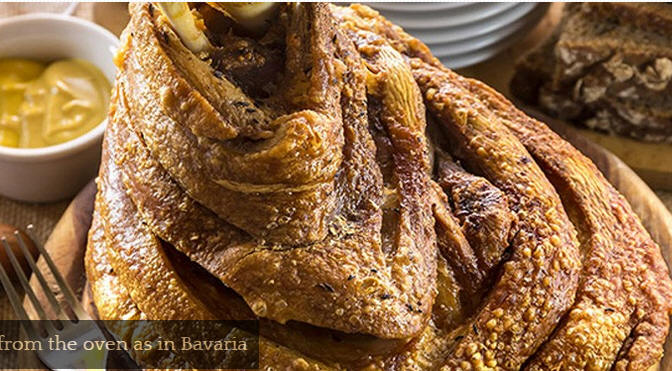
Just past the covered exterior seating, I came across their old PIWO (beer) truck with kegs in the back.
I wandered further down the
street and went by this very nice looking place called
Caf� Zakopianka Gallery [Świętego
Marka 34,
![]() +48-12-421-4045] right across from the park. Their website allows you to
walk inside and look around 360�.
+48-12-421-4045] right across from the park. Their website allows you to
walk inside and look around 360�.
Here is a stock photo of its interior.
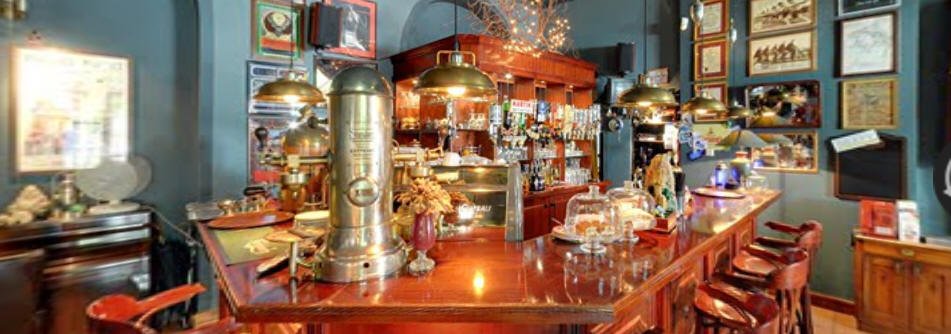
As I continued through Planty Park there were more of the directional signs everywhere.
Through the park they have these rather interesting metal trash cans (below left.) Here is an example of their telephone booths (right.)
These are the views on the way back to the hotel.
There was a memorial to Michał Bałucki (1837-1901) (below left,) a Krakow poet and writer of several novels and comedies. He was an active member of a youth organization that wanted to help Poles fighting the tsarist regime in the Russian occupied Poland, but he did not fight in the January Uprising of 1863. He was sentenced to prison for conspiracy activities after being arrested at the end of 1863. He committed suicide in nearby Blonia Park in 1901. Below center and right are stock photos of the stele which are much better than the one I took.
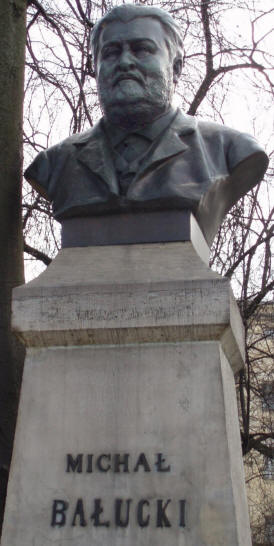
Below left is a stock photo of Bałucki. I then wind up going past the back side of the Dominikańska church.

I came across this etching in the sidewalk depicting a building (left) but could not make out what the wording said (right.)
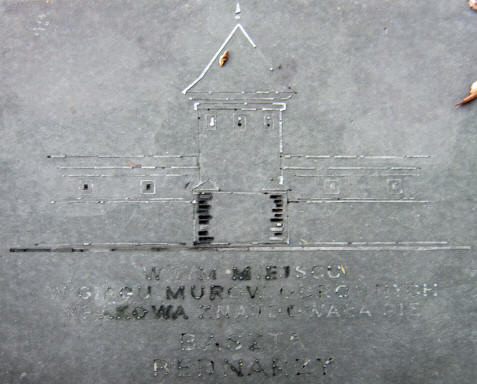

Below are photos of continuing along the park trail.
I couldn't tell what this growth was coming out of the ground next to the small tree, but it was nice.
Then I walked by the Church of St. Bernardino of Siena [Bernardyńska 2] (my photo left; stock photo right.)
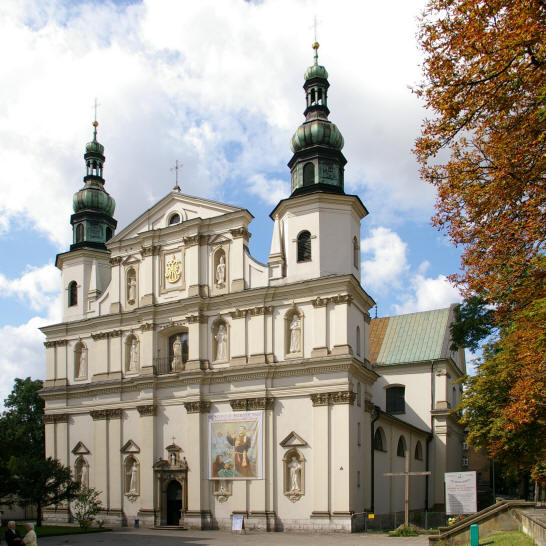
Here is a stock photo of the interior of the church since I did not have enough time to go inside. Here is a map I saw in the street showing the Old City (Stare Miasto) with the surrounding Platy park that I ran.
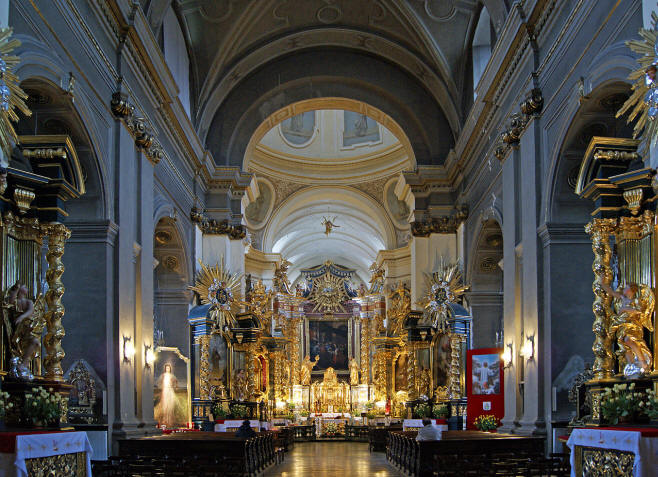
I arrived back at Plac Wszystkich Świętych where they have this large modern sign (below left) displaying the times for the trams. There is also a map showing the tram routes (below right.)
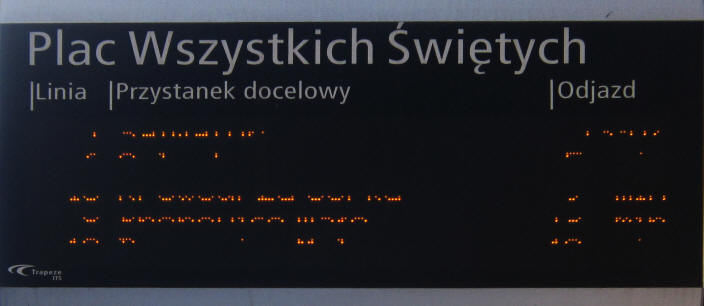
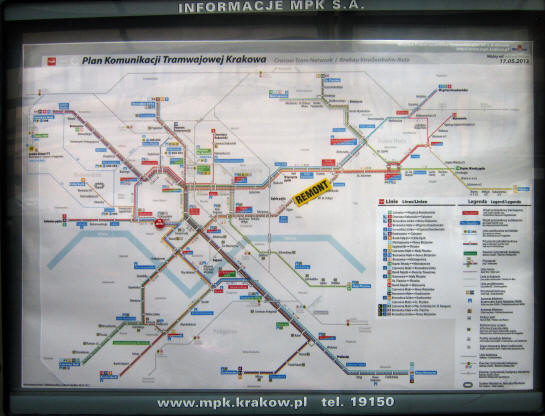
I cautiously got this photo of a typical Krakow policja car. I'm always cautious when doing this.
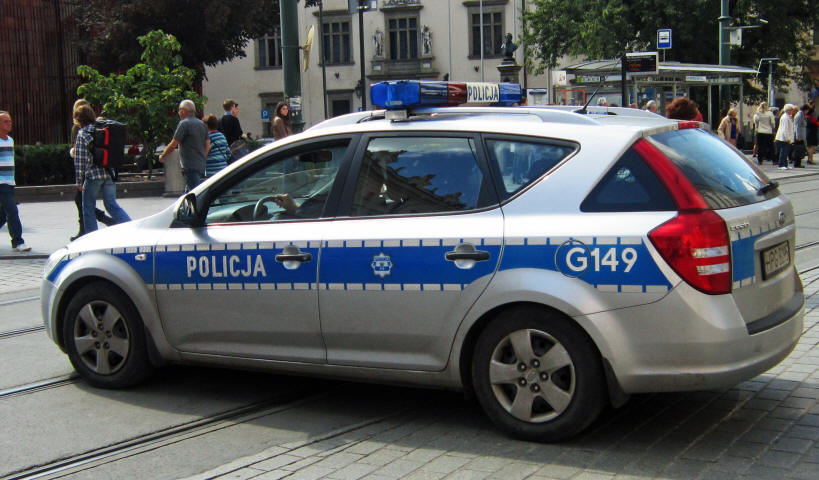
The streets were starting to teem with people.

I got back to the hotel at 1:00 PM and Bart, the receptionist, recommends a coffee place
near by, so at
1:10 PM
I had a cappuccino at Karmello
Czekolada [11 Plac Wszystkich Świętych,
![]() +48-12-422-0372] just off
ulica Grodzka.
+48-12-422-0372] just off
ulica Grodzka.
My cappuccino cost me 6 zł and I found a place to sit at a table with an older woman.
I should have realized by its name that this place was not so much about coffee but rather it was a chocolate shop as you can well see. The cappuccino was not that good.
I bet the candy was better.
I left there and right next door I took a photo of the kiosk sticking out of the side of the building where I bought our two Orange Polish SIM chips for our phones. The following are more scenes of the city as I walked back.
Of course they have a night club called
Prozak 2.0 [plac
Dominikański 6,
![]() +48-73-370-4650] below
right.
+48-73-370-4650] below
right.
Its located below ground and is a place for live music and partying but we are getting too old for this anymore. Below are some stock photos of the interior.
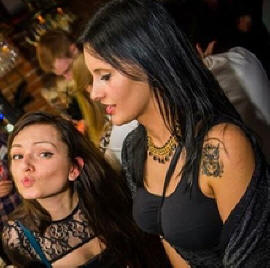
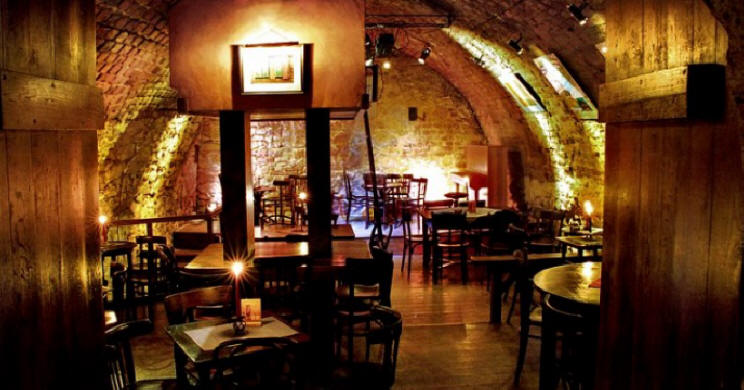
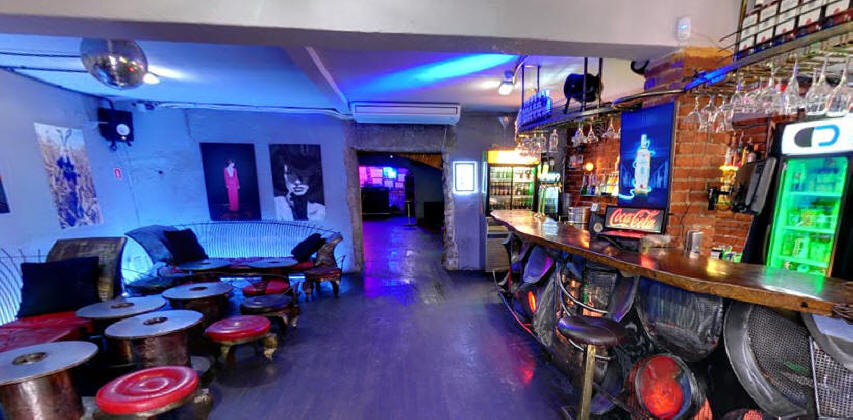
I got into our hotel room and changed for our excursion for today. I took photos of Marcia's ticket for the Chopin Concert she went to yesterday while I was in the Salt Mine.
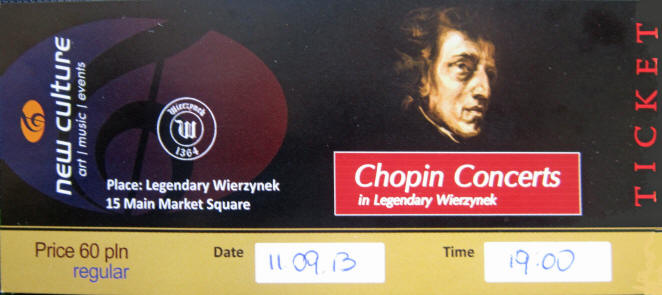
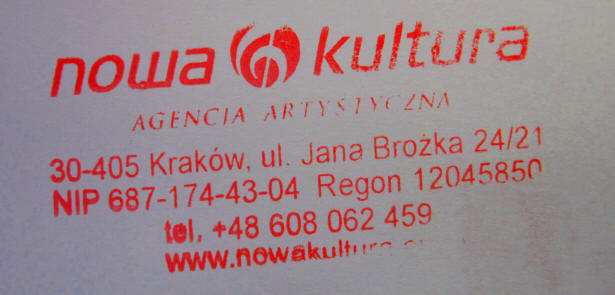
We got the car out of the parking lot and at 2:10 PM Marcia drove the 46 miles (74 Km) to Oświęcim [oz-shvee'-chim,] the town the Nazis called Auschwitz. As we were driving out of the city center, we passed by this huge shopping center called Galeria Krakowska on Pawia street. You can see it goes on forever down the street.
It holds 270 specialty shops, caf�s, and restaurants on three floors in two roof-covered malls and three plazas. It has over 600,000 ft2 (55,470 m2) of retail space, 53,000 ft2 (4,955 m2) of offices, as well as parking for 1,400 cars. This place is big.
Of course McDonalds and KFC are in there. It ends at the freeway out of town.
Here is a stock panorama of it from the other side. It is next door to the railway station (on right in sun.)

While Marcia was driving, I started taking pictures of interesting things out the
window. We passed by the
Ibis Hotel [ulica Pawia 15,
![]() +48-12-355-2900] and
other large nicely-done buildings.
+48-12-355-2900] and
other large nicely-done buildings.
I saw this stand where they were selling Hortex fruit juices.
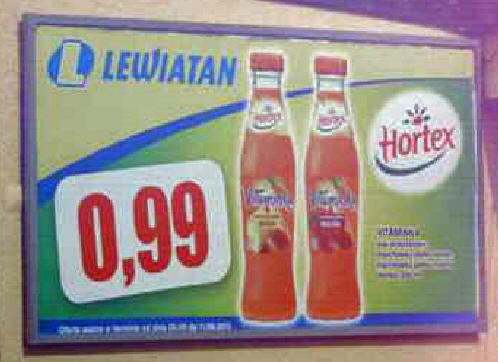
At 2:45 PM, we finally got on the freeway and paid the taryfa (toll) of 9 zł ($3.15).
Here are some scenes and signs as we flew through the countryside.
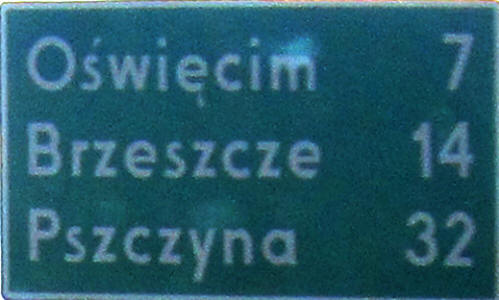
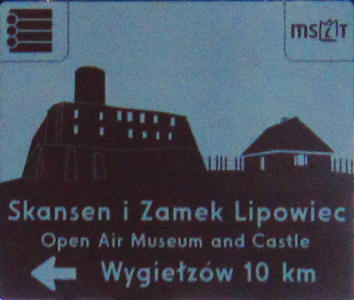
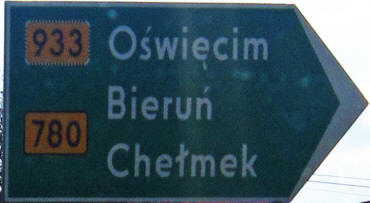
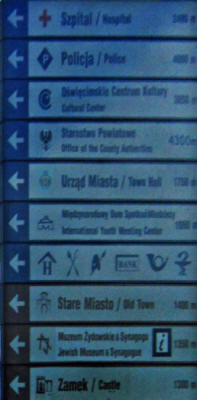
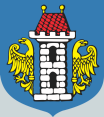
 We pull into the town of
Oświęcim [German: Auschwitz) [Official
Site] population 41,000 (stock photo of City Hall, below right.) But
the Auschwitz-Birkenau
State Museum is in the village of Brzezinka,
which is
two
miles away located near the confluence of the
Vistula and Soła
rivers, at the very center of the Vistula Valley. It has a population of
2,100.
We pull into the town of
Oświęcim [German: Auschwitz) [Official
Site] population 41,000 (stock photo of City Hall, below right.) But
the Auschwitz-Birkenau
State Museum is in the village of Brzezinka,
which is
two
miles away located near the confluence of the
Vistula and Soła
rivers, at the very center of the Vistula Valley. It has a population of
2,100.
Auschwitz City Coat of Arms (above left) Auschwitz City Flag (above right)
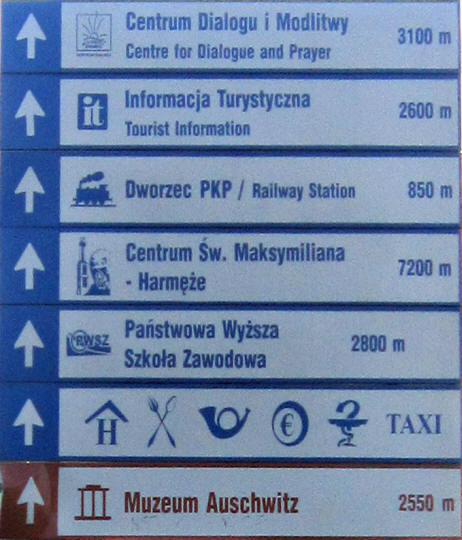
At 3:35 PM we arrive at Pa�stwowe Muzeum (Auschwitz-Berkanau.)

We pull into their very large parking lot.
As we approached the entrance, we stopped to read these large display description plaques that they have all over the place. While Marcia was reading them (below left,) I decided to photograph them and read them more carefully later when I had time.
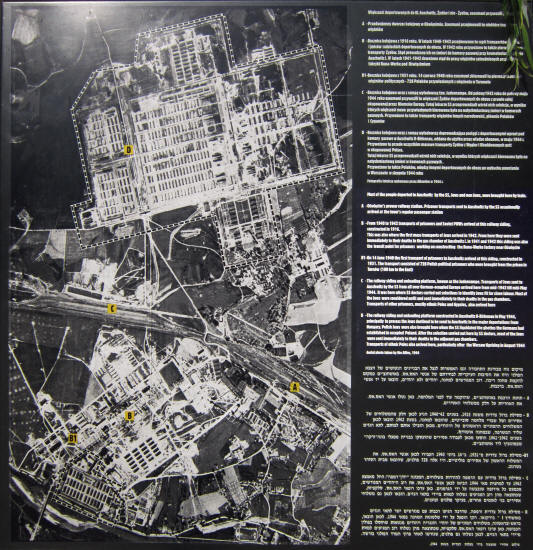
The below photos are the results of cleaning up the photos. Above right is the plaque on Marcia's far right. Instead of describing the many points of interest, I am going to let the Museum do it in their own words. Therefore you can read them as if you were actually there. [If uninteresting, just scroll past them.] As you can see (above right) the description is first in German, then in English and finally in Hebrew. In each case I am only showing the English (as below right.) Below left is an actual Allied photo taken in 1944 of the whole little town of Oświęcim and the parts that the Nazi SS (Schutzstaffel ) turned into the world's most famous concentration camp.
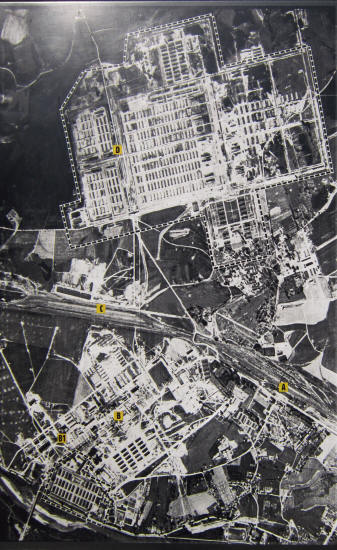
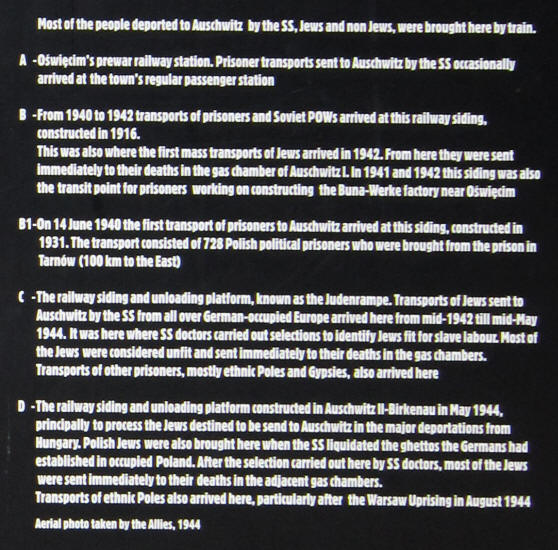
Below is the center plaque with a photo of a much larger view of the town and site.
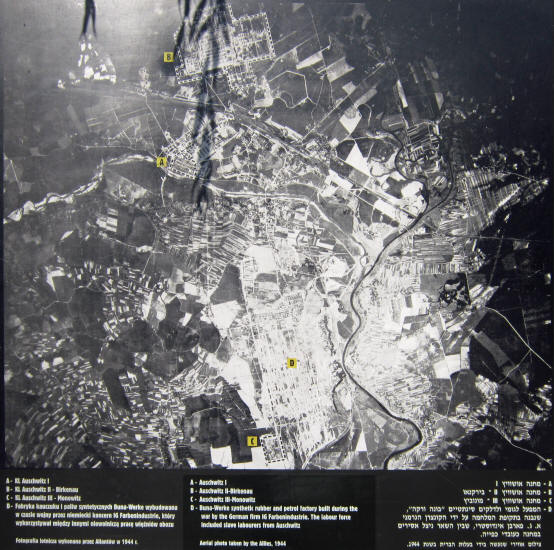

This plaque below shows another 1944 Allied photo with a closer view of the camp.
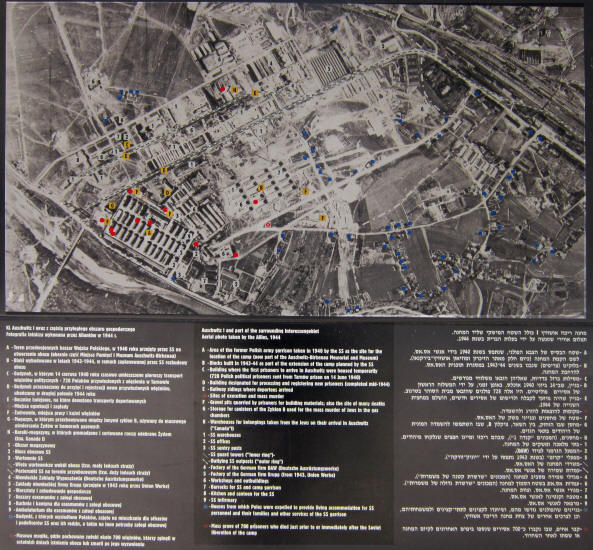
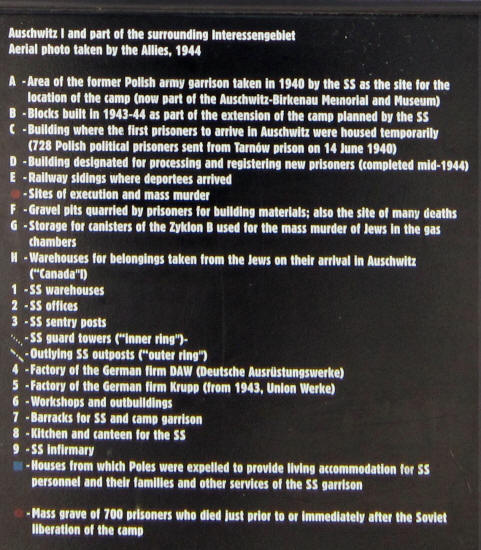

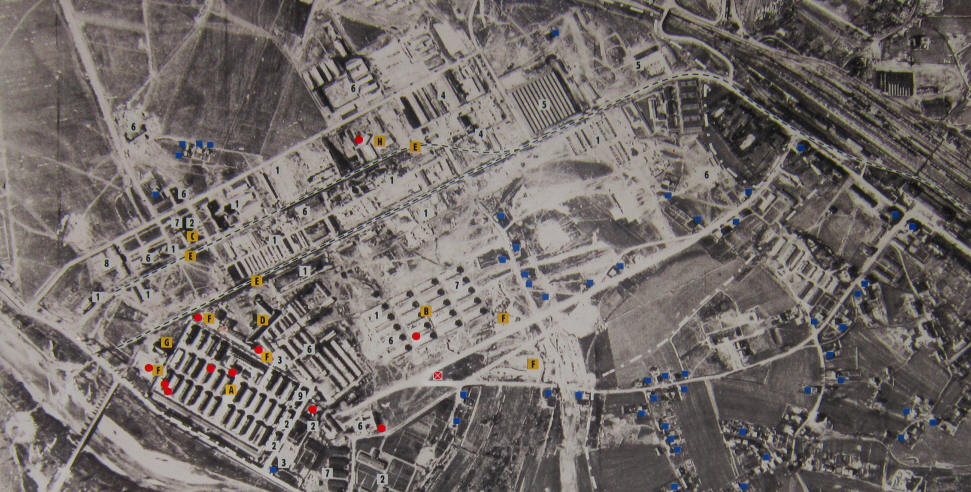
With this as an introduction, we went in the entrance building to buy our tickets.

As you can see in this blowup (below left,) if we had gotten here earlier than 3 PM we would have had to have a Museum guide tag along with us. Since it is after 3, we can explore on our own (which I always prefer.) The guide (on the left) was looking at me rather sternly as I took this picture.
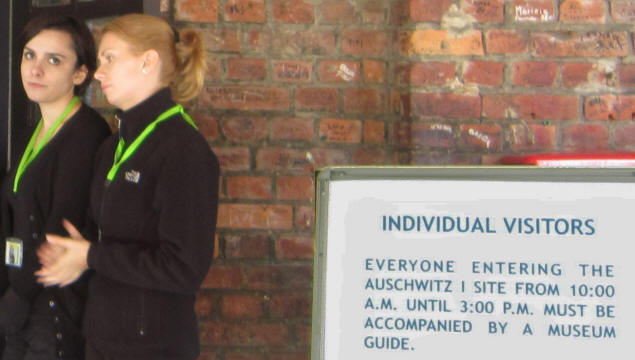
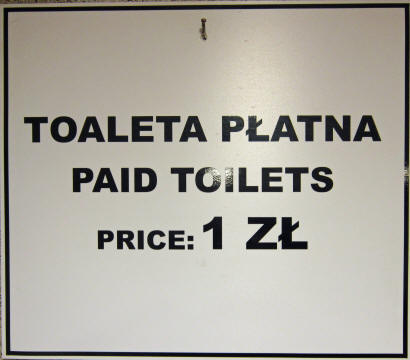
We felt it a good idea to use the facilities before we started out, so I followed the signs downstairs. There is a man there collecting the 1 zł ($0.35) to use the toilet. There was also a stand selling snacks and sandwiches for 5 zł ($1.75;) a reasonable price.
They also listed the currency conversions they were using. They're selling dollars for 3.23 zł and buying them for 2.90 zł. That makes a złoty worth about $0.31-35. We went out the back of the building to take the path to the camp. There were also some descriptive plaques here along the way. Marcia is dutifully reading them all (below.)
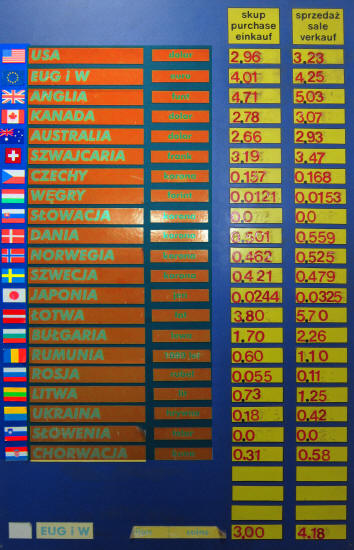
Here (below) is what they show. From the schema below left (and aerial photo below that), you can see [A] the main camp gate we are approaching and the many barracks used to house the prisoners. At the lower left (by itself) [G] is the crematorium and gas chamber.
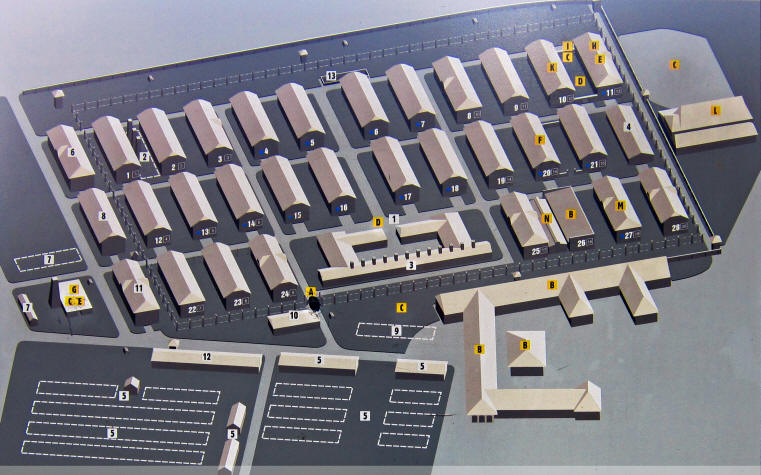
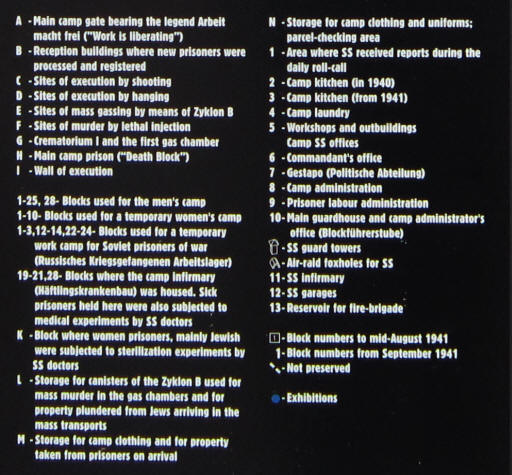
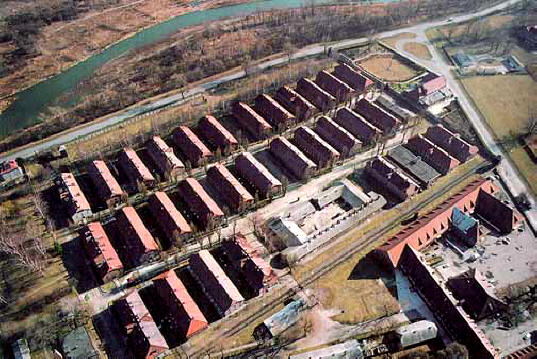
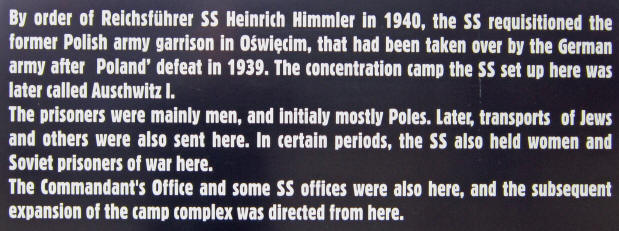
This is the PhotoStitch panorama I made of our walk to the main gate (center.)
We finally arrive at the famous "Arbeit Macht Frei" ["Work Makes You Free"] gate and because of the lighting and the large tree behind it, it was impossible to get a good complete photo of it.
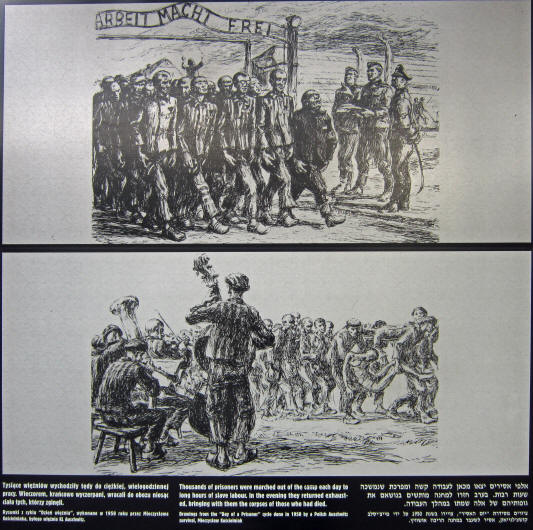
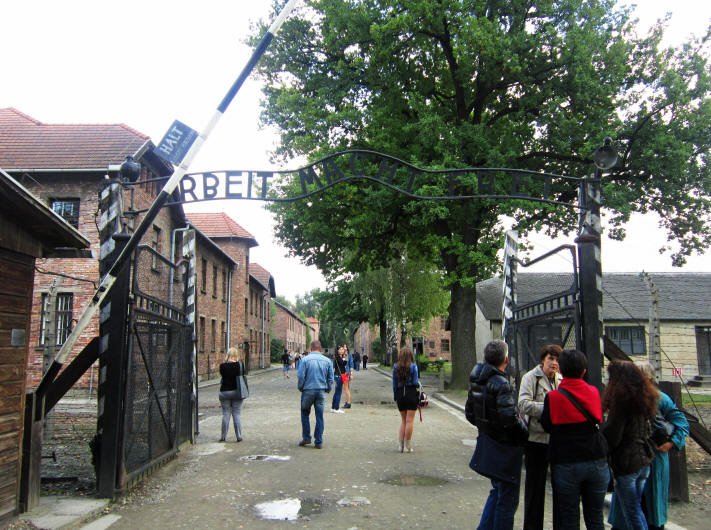

I moved to every possible angle and this is the best (below right) I could get of the whole sign readable.
So I used PhotoShop to get this.

Marcia took this of me below the sign (below right.)
Finally, here are two stock photos I found of the sign.
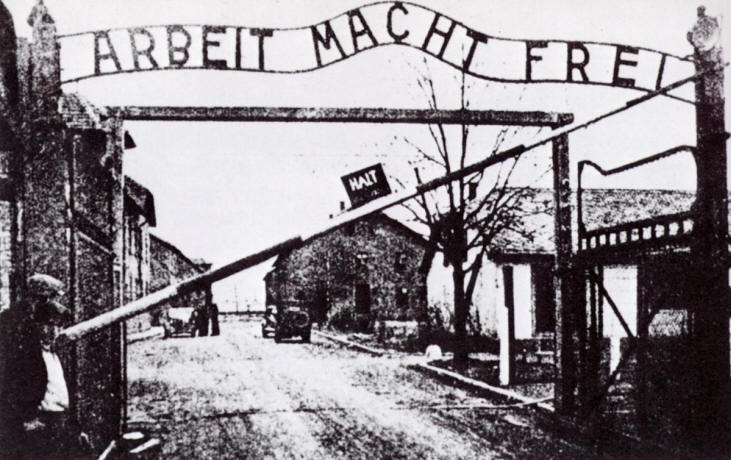
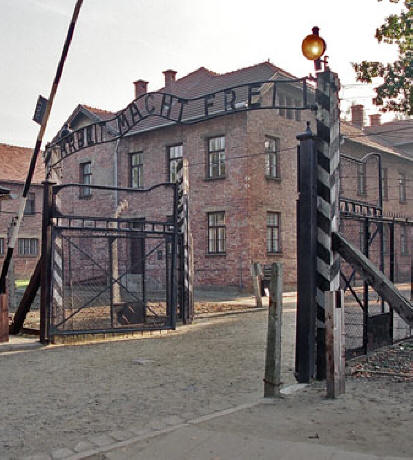
Once past the gate, here is the view looking back at it (below left). We then proceed on past the fences.
We pass through this area with large concrete barbed-wire fences between different parts of the camp. On the left I took the photo of the fence and on the right I stuck the lens through one of the holes.
Here are some nice photos Marcia took.
As well as this of the booth where the guards could go when it rained.
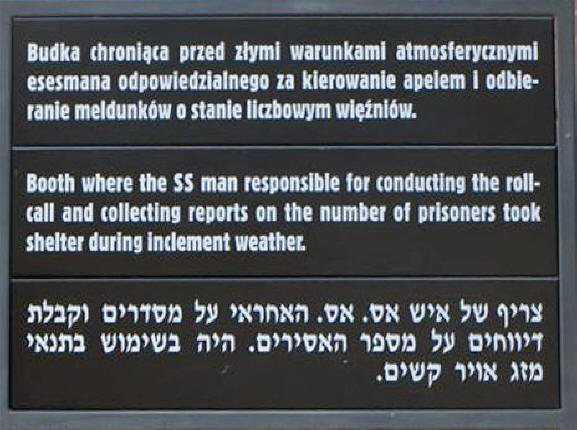
We walk farther, on to the main grounds. The sign in this field (below right) states:

We come up to this first building on the main corner. The plaque in front of the building (Block 14) reads:

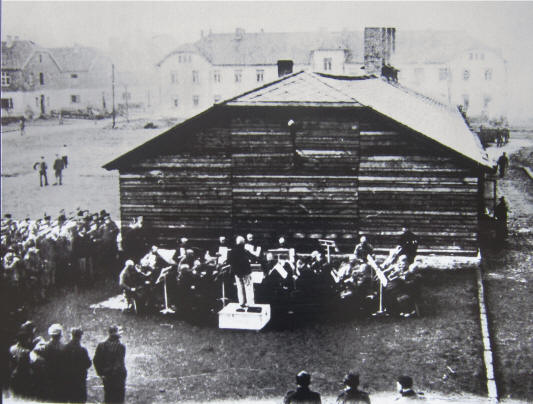
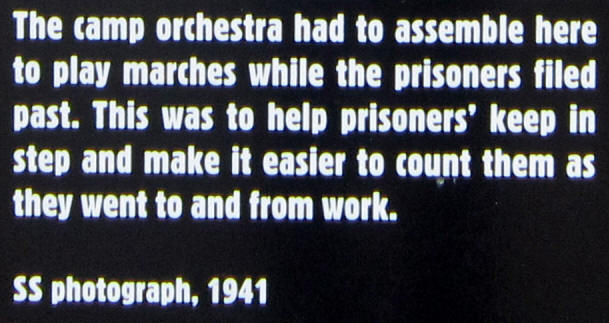

We finally arrived at the series of buildings (Blocks) to explore. These were the refurbished old barracks.
Thanks to the Auschwitz Tour Website (� Copyright 2005 Scrapbookpages.com,) I found reminders of what each of the Blocks I had visited contained.
The Nazis opened their first concentration camp in Dachau (outside Munich) on March 22, 1933, which was followed by many others; Sachsenhausen, Buchenwald, Flossenb�rg, Mauthausen (Austria,) and a women's camp at Ravensbr�ck. Auschwitz was opened on October 7, 1941 originally for Soviet POWs.
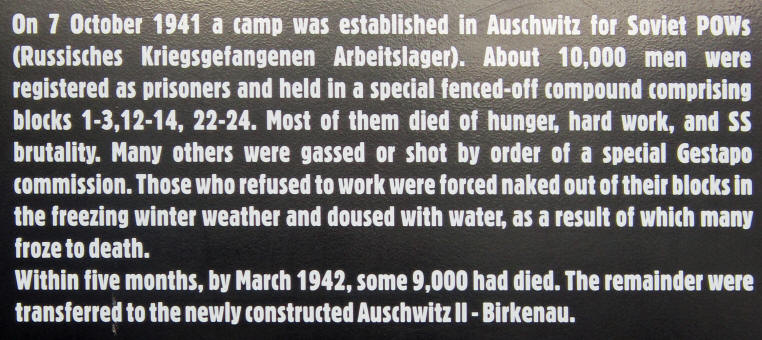
Looking down the long street, you can see the many Blocks to visit. On the left side there are seven of them numbered #15-#21. Each one contains different exhibits, some of them general while others are specific to countries honoring their citizens who died here.
The first one we came we went into was Block 15 (National Exhibition: Poland,) which houses an exhibit entitled "Historical Introduction." Below left is the front entrance and Marcia got this shot of me in the door. At the end of this street is Block 11, the prison block. Block 11 is located inside a walled courtyard. It was here that prisoners from the cmps were brought for punishment for what the Nazis considered serious offenses, such as sabotage in the factories or attempting to escape. It was also where political prisoners from outside the camp were housed while they awaited trial in the courtroom of the Gestapo Summary Court which was also in that building.
Here are the two plaques on the front of Block 15. You can see the two large metal plaques on either side of the door. The one on the left says: "In tribute to the soldiers of the National Army and the people who helped the inmates" and "Comrades fighting in 1995." The one on the right says: "In tribute to the political scout prisoners to Auschwitz; faithful reminder of the living survivors, 1996."

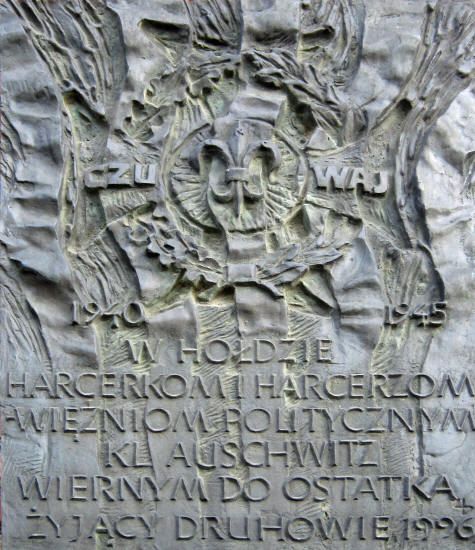
Below right is the side exit.

Upon entering the building, you walk along viewing various exhibits and displays (below) relaying the history of this place. There were many descriptions of the Polish Underground.
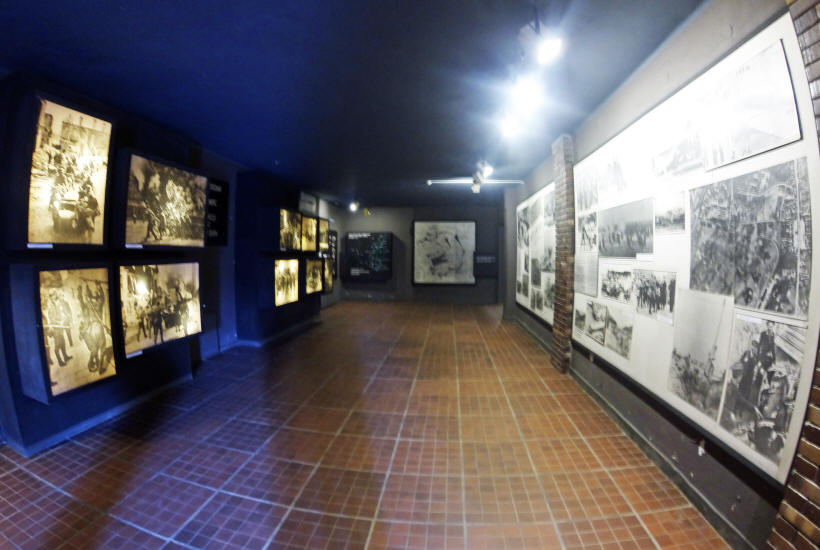
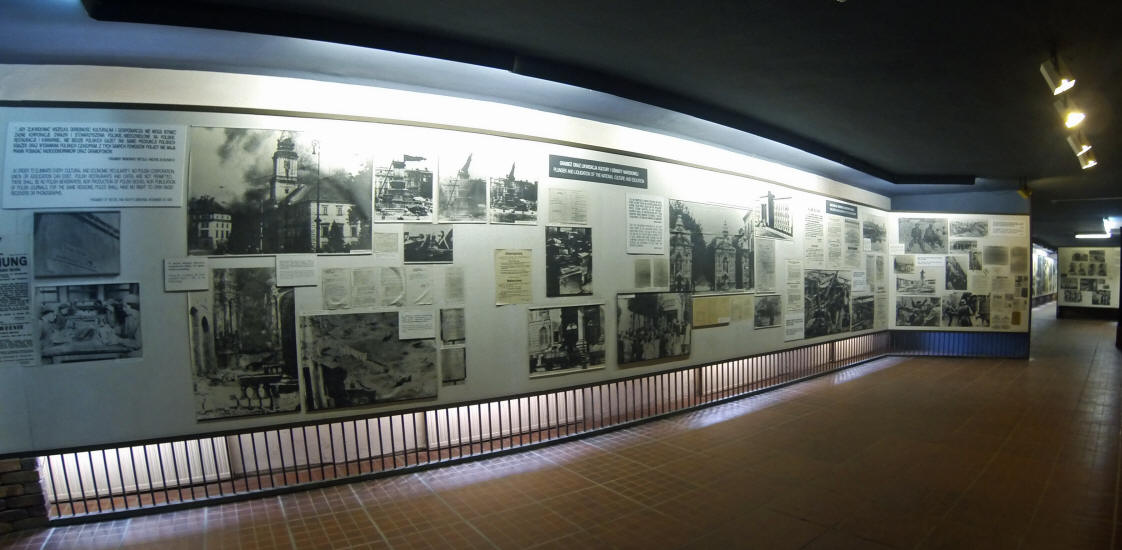
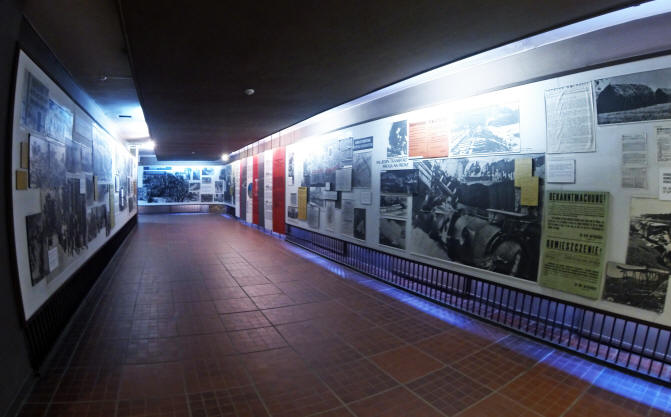
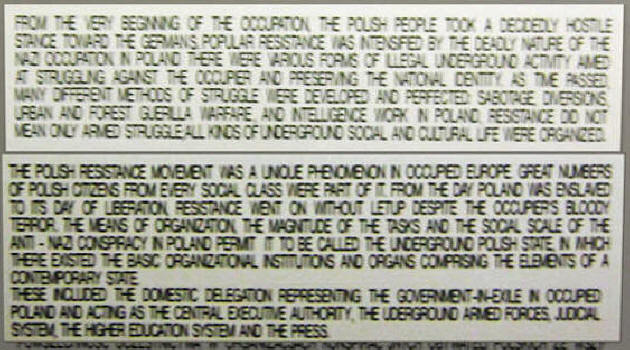
The sign (below left) reads: "September 1, 1939, without declaring war, Nazi Germany attacked Poland."
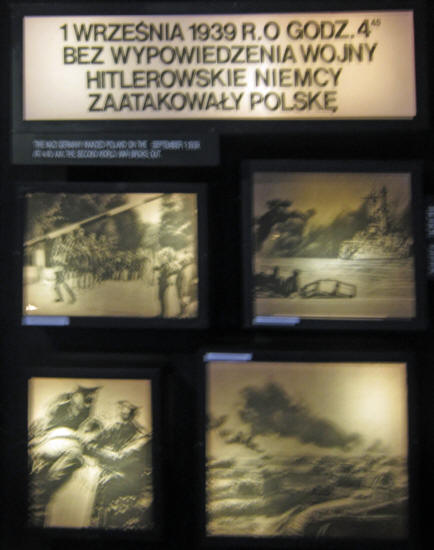
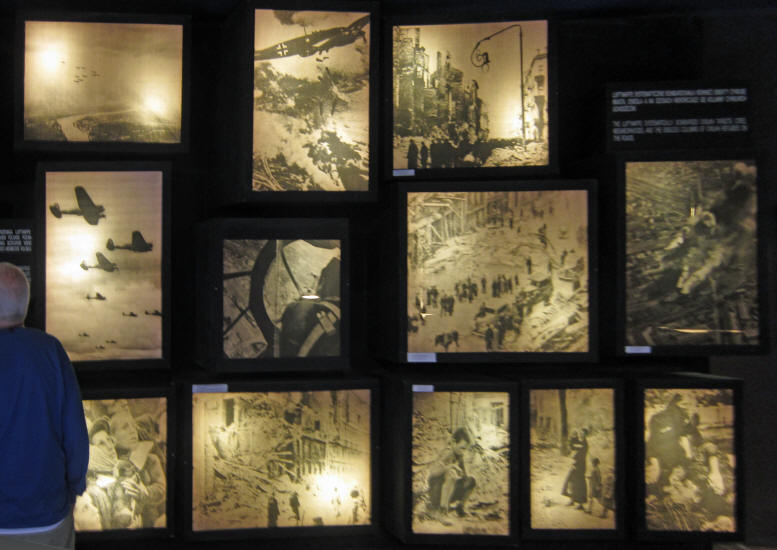

The sign on this wall says: "The struggle of the Polish nation and martyrology 1939-1945."
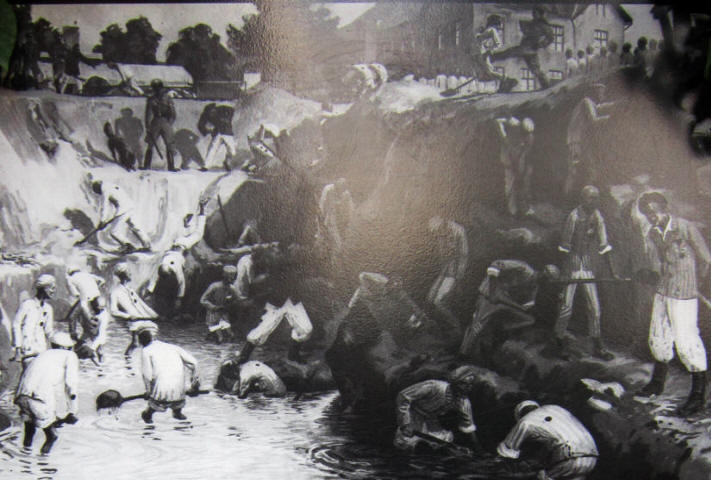
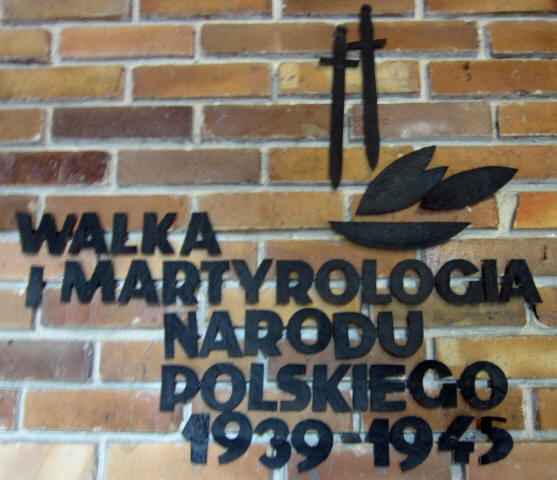
There are descriptions of the daily Roll Call and a painting of it by a survivor, Mieczyslaw Koscielniak. Below are his self-portraits; left as a prisoner and right, after surviving. He died in 1993 at the age of 81.


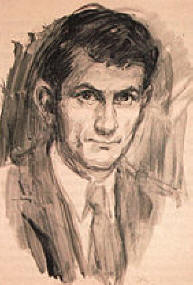
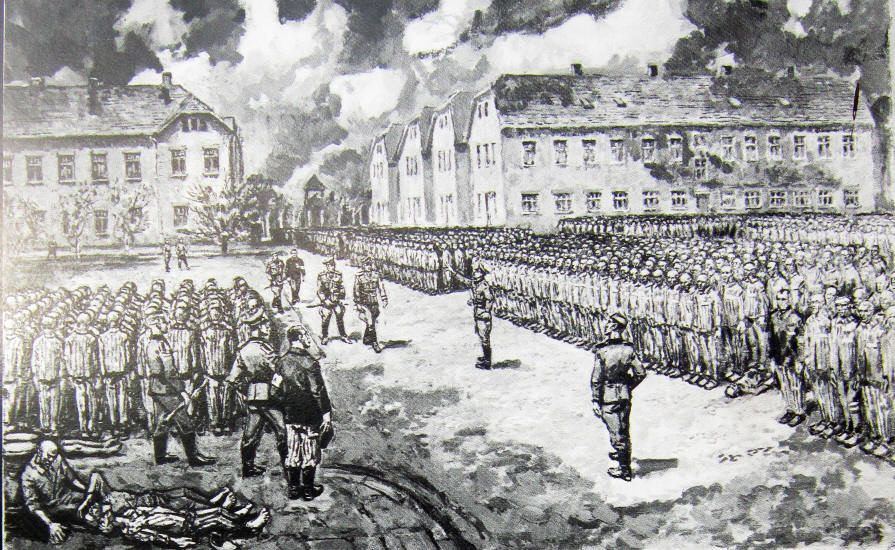
Blocks 13, 15-18, and 20-21 have exhibits devoted to the various nations that were victimized by the Nazis. Block 13 has a Museum devoted to the Extermination of the European Roma (Gypsies.) The Nazis conducted the first killings using Zyklon-B gas on September 3, 1941 in Block 11. Adolf Eichmann (below left) personally supervised this during his visit here while the camp Commandant, Rudolf H�ss (below right) was away. Zyklon-B crystals were thrown in through the door before it was quickly shut. Below center is photo of those that were held here.
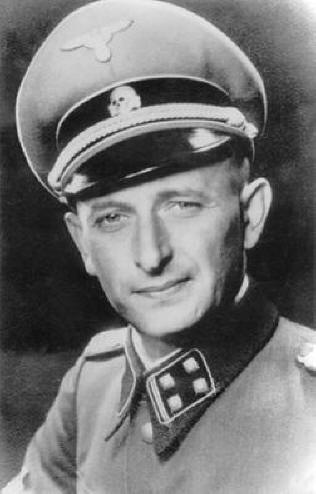
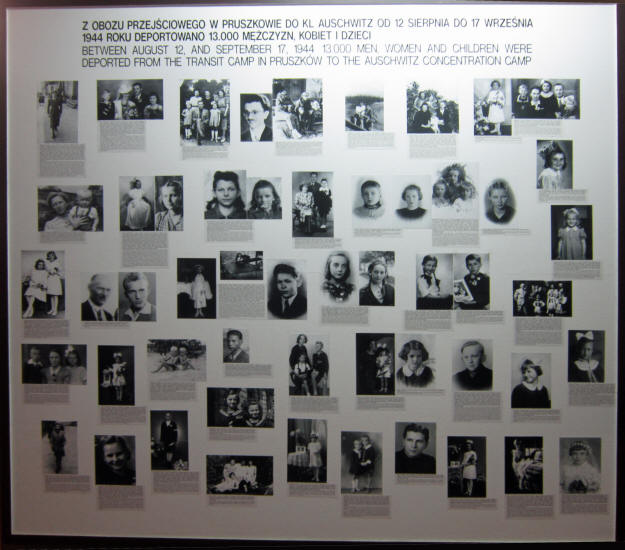

These two young girls struck me. The one on the left was Alicia Hintz and the one on the right was Teresa Kozłowska from Warsaw.
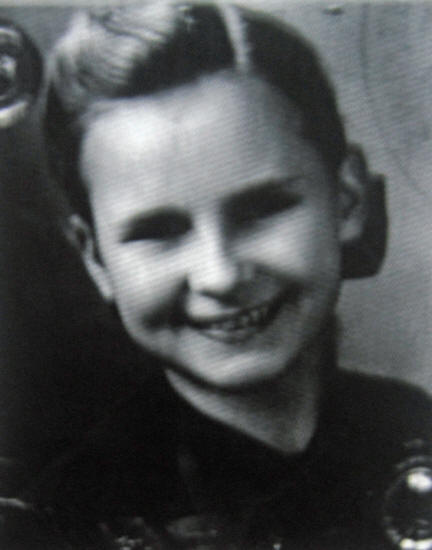
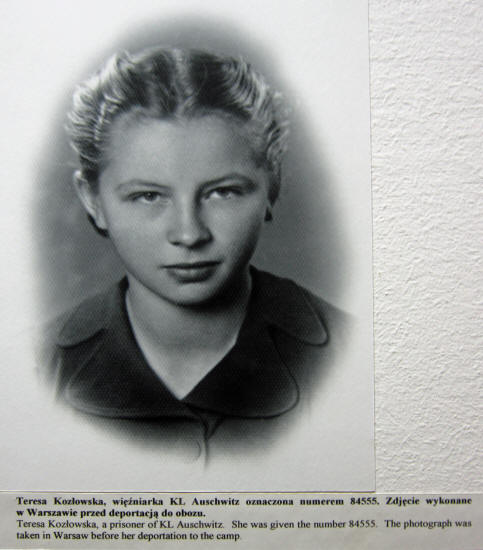
There were many photo collages of the detainees dressed in prison stripe garb.
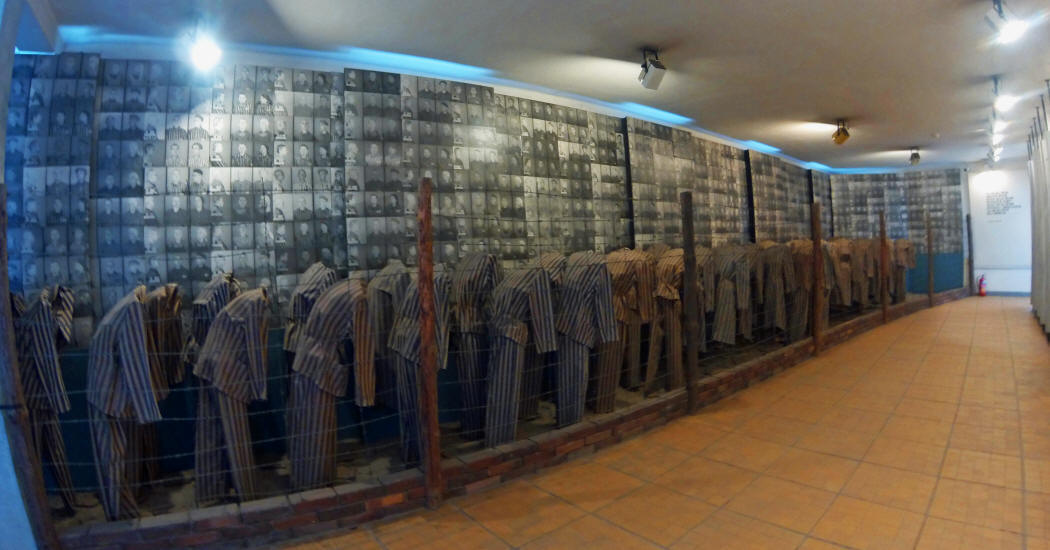
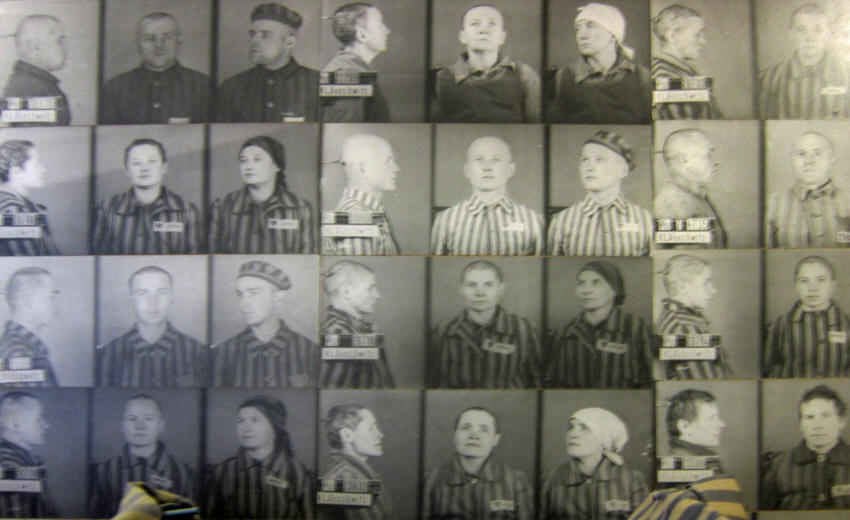
These hung above a display of the clothing they wore. There were also displays showing the strength of the Polish underground and regular army during the war years.
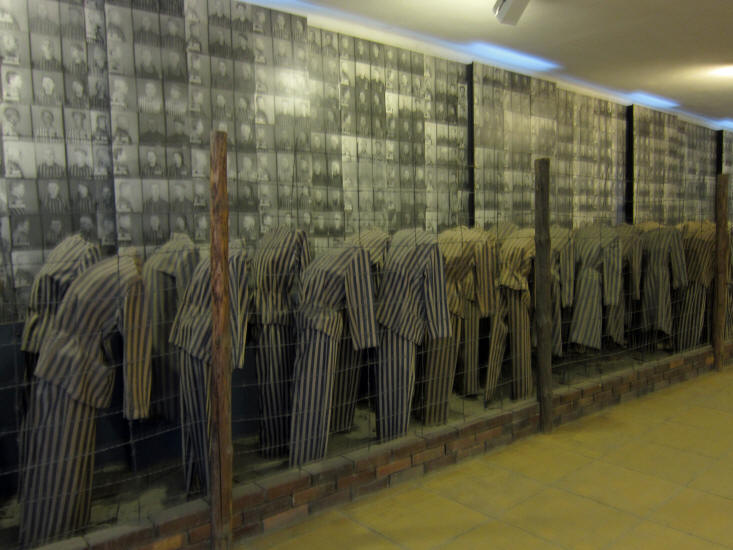
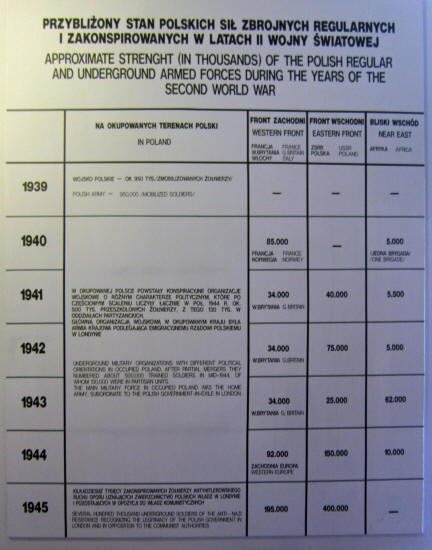
This propaganda sign (below left) notes the Battle of Grunwald and the taking of Berlin in 1945. Grunwald was also called the Battle of Tannenberg which was fought on July 15, 1410 during the Polish�Lithuanian�Teutonic War. The alliance of the Kingdom of Poland and the Grand Duchy of Lithuania decisively defeated the German�Prussian Teutonic Knights. Most of the Teutonic Knights' leadership were killed or taken prisoner but suffered minimal territorial losses.

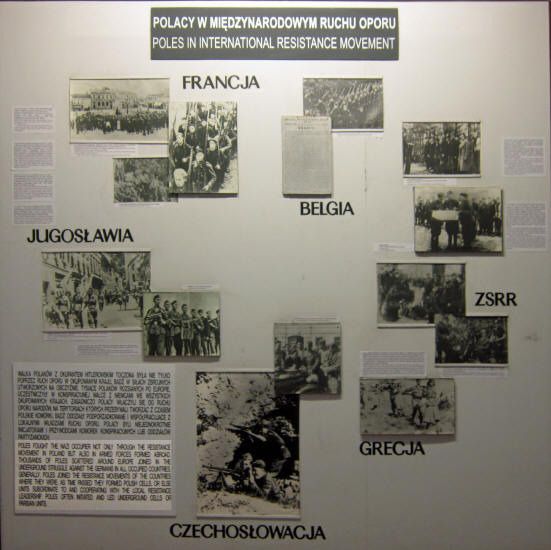
The knights, however, would never recover their former power, and the financial burden of war reparations caused internal conflicts and an economic downturn in the lands under their control. The battle shifted the balance of power in Eastern Europe and marked the rise of the Polish�Lithuanian union as the dominant political and military force in the region. There is more than 500 years between these two battles. Above right and below are signs demonstrating the extent of the Polish underground in France, Belgium, Yugoslavia, USSR, Greece and Czechoslovakia.

They also showed strategic military maps of France and Italy.
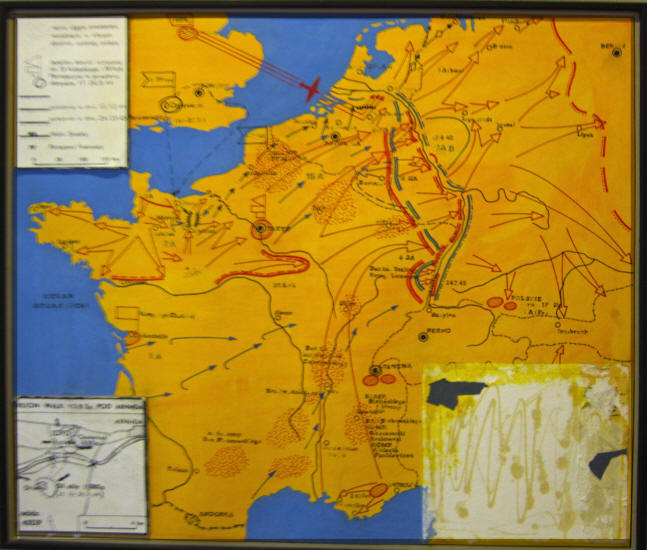
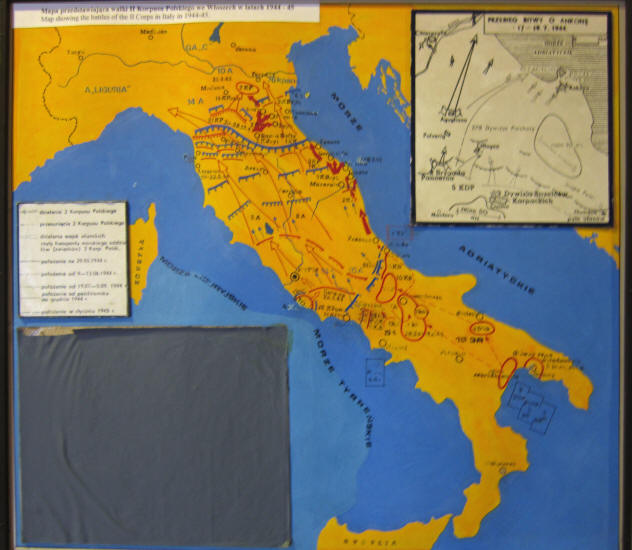
The word Luftschutzraum means shelter.
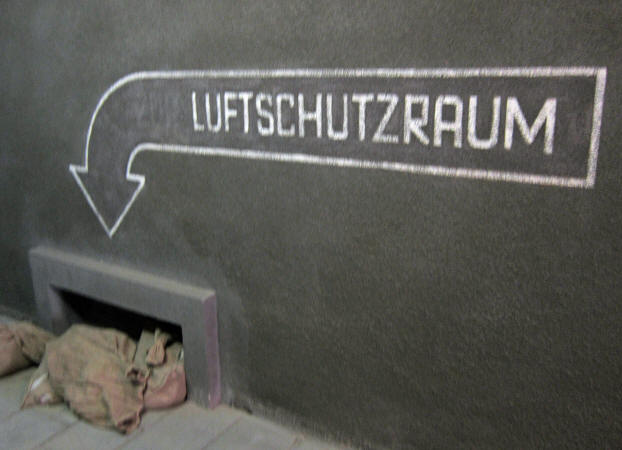
Marcia and I had decided to each go off on our own to explore, each at our own pace. I arrived at Block 4 (below) having exhibits entitled "Extermination." Here they display an urn with human ash, human hair, fragments of a crematorium, Zyclon-B cans, maps of where Jews were deported from to Auschwitz and photos of the prisoners.
Here are some of the signs exhibited along with an aerial map of the camp.
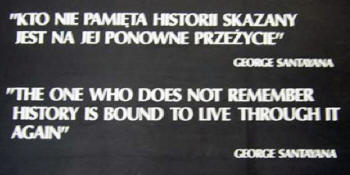
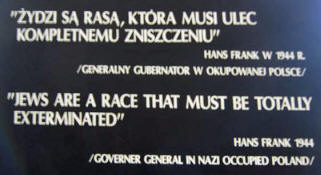
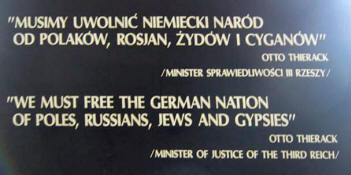
Below are some of the photo displays.
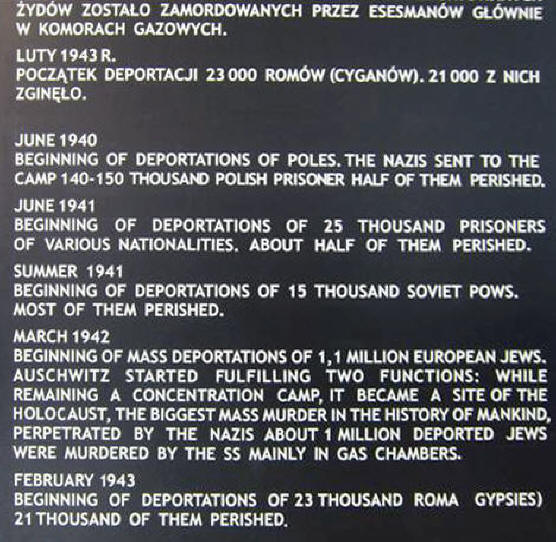
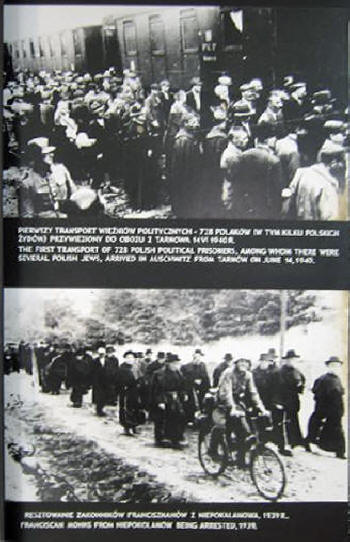
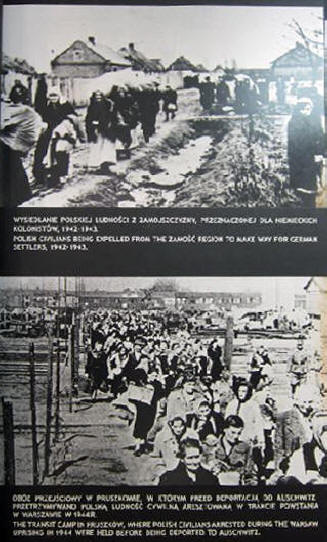
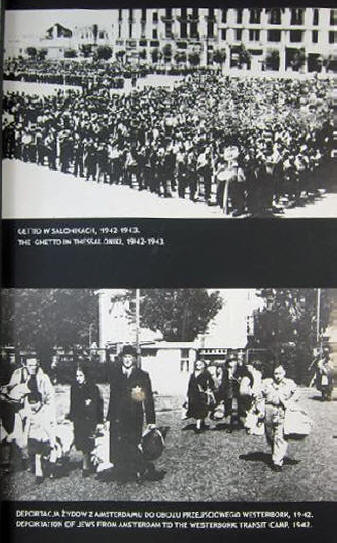
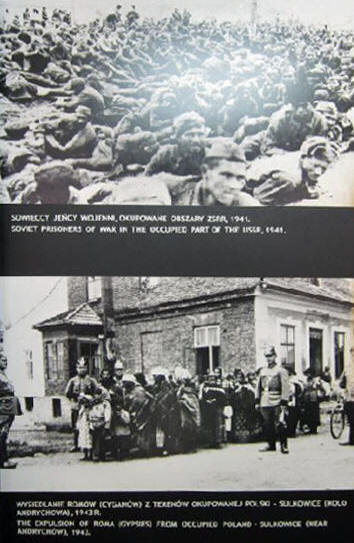
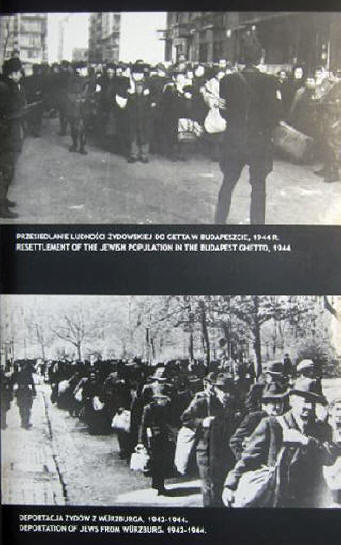
Here in Room 3 they had descriptions of the "Road of Death," the march to remove the "evidence" before the camp was liberated by the oncoming Red Army.
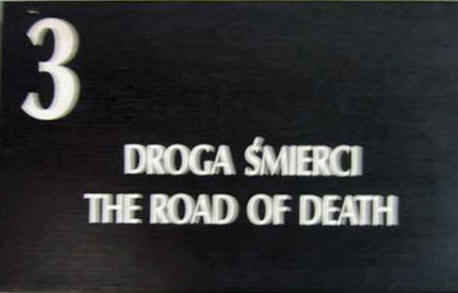
They had maps showing the occupied territories and routes for deportation to Auschwitz (below right.) There was also a map of the camps and the railroad routes coming into them.
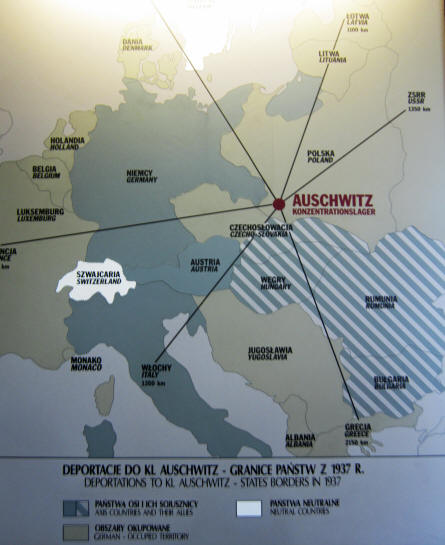
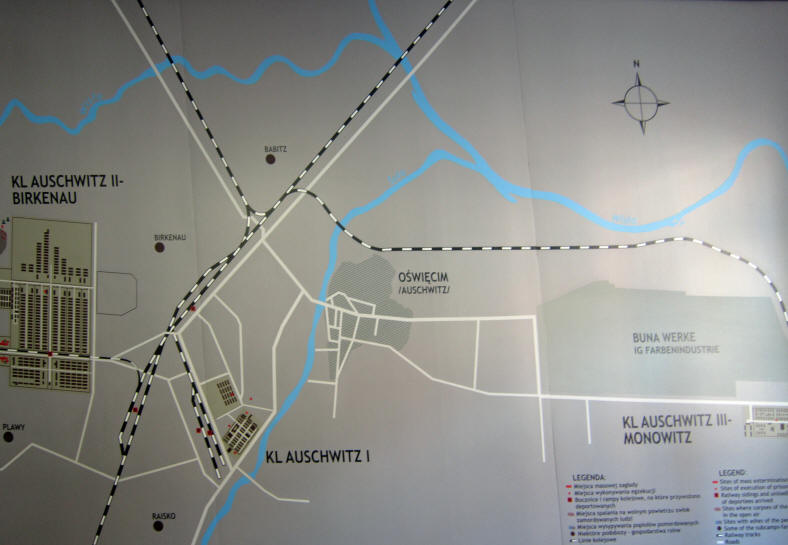
All roads led to Auschwitz.
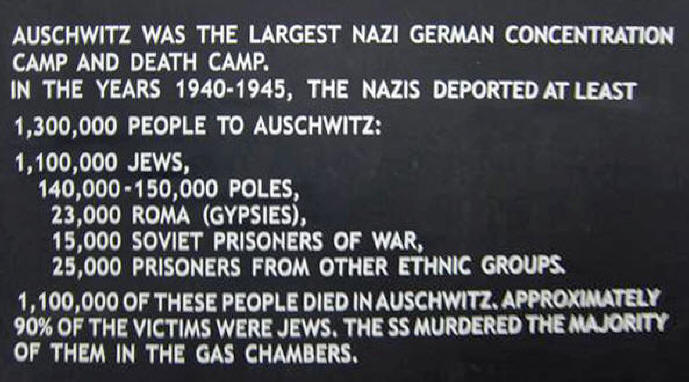
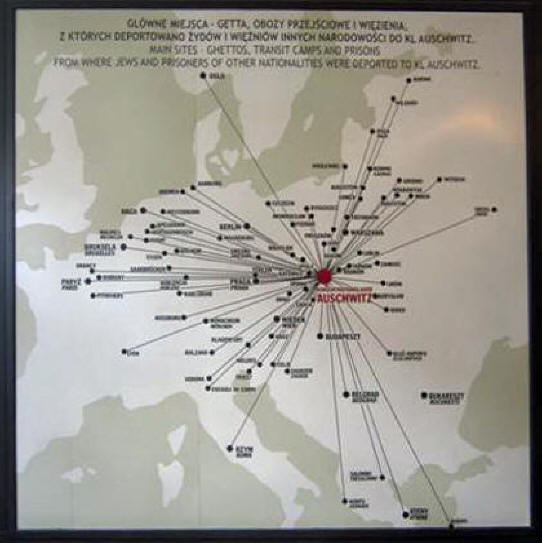
I have also accessed the
Jewish Virtual Library
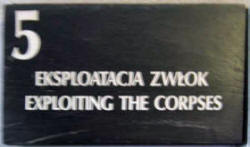 for some information. Room 5
of this building is titled "Exploiting the Corpses" and has a large glass cabinet containing hair from the heads of an
estimated 140,000 victims. It is said that the Russians discovered more
than 15,000 lbs (7,000 Kg) of human hair in bags when the the camp was
liberated. That is all that was left after the rest of it had been sold by
the Nazis to the Alex Zink company in Bavaria to be used for weaving cloth and
other products.
for some information. Room 5
of this building is titled "Exploiting the Corpses" and has a large glass cabinet containing hair from the heads of an
estimated 140,000 victims. It is said that the Russians discovered more
than 15,000 lbs (7,000 Kg) of human hair in bags when the the camp was
liberated. That is all that was left after the rest of it had been sold by
the Nazis to the Alex Zink company in Bavaria to be used for weaving cloth and
other products.
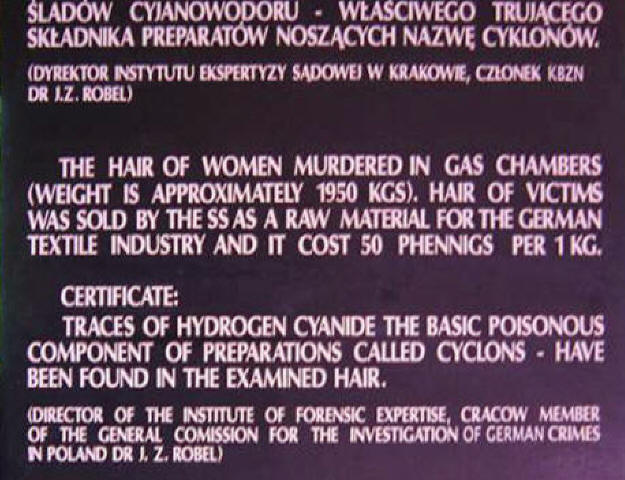
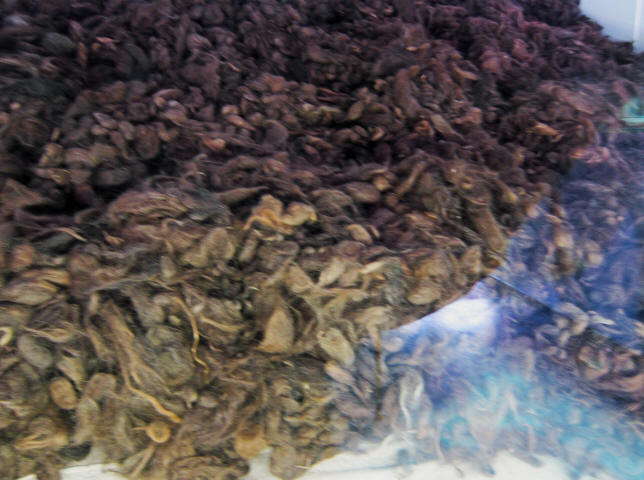
The hair at that time sold for 50 pfennig/Kg ($0.10/lb) which today would be equal to US $1.40. Below are examples of Nazi coins of 50 Reichs pfennigs (cents;) left 1935 without swastika, right 1939 with it held by the eagle.
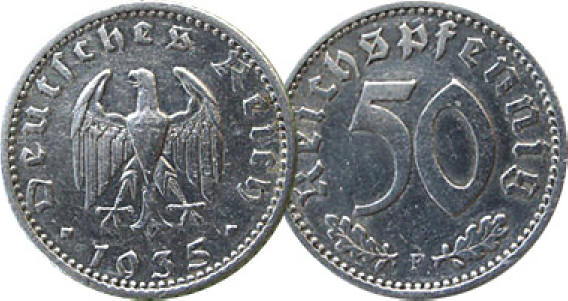
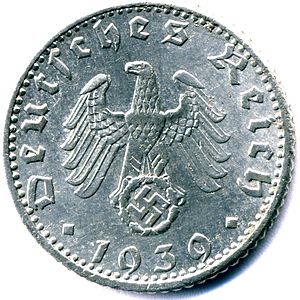
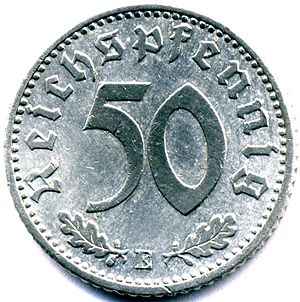
There was a directive to commandants of concentration camps dated January 1, 1943 saying: "The prisoner's hair is to be sent to Alex Zink, Fur Manufactures, Ltd., Nuremberg." (Bundesarchiv (Federal Archives) Koblenz; document NS 3 386.) Here is a photo (below left) I took of another case with some braided hair and some bolts of cloth that were made from the human hair. On the right is one of it I found.
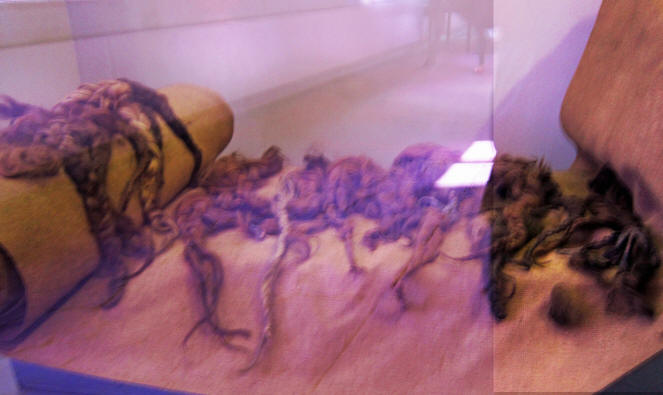
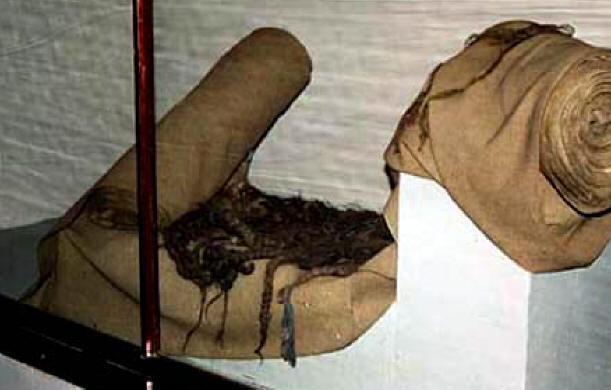
The next Room 4 was labeled "Extermination Technique."

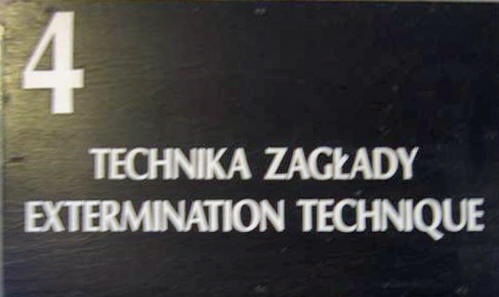
Here they showed models of how the exterminations took place
You can see how the victims were taken underground for gassing.
As they died, the bodies piled up.

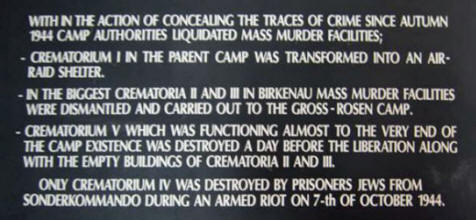
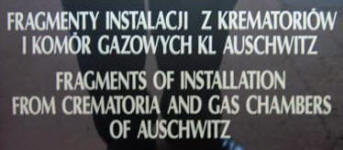
Then there was a glass case showing the left-over used canisters of the Zyklon-B gas that was used (below left) and another case with fragments of a destroyed crematorium (below right.)
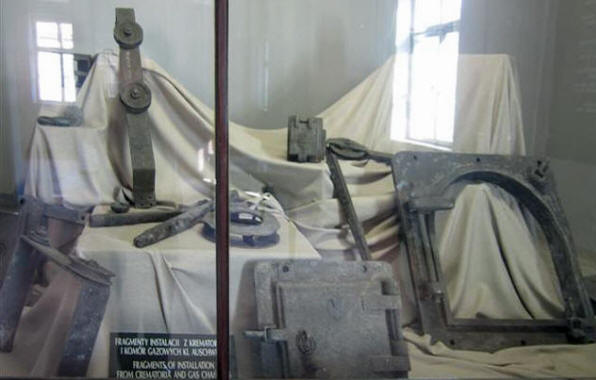
There were model depictions of the camp layout.
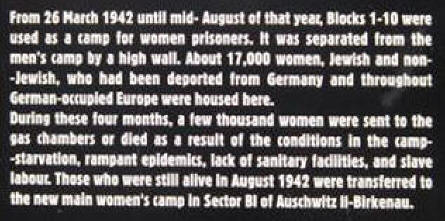
I left there and went into Block 5, where there are displays devoted to the "Material Proofs of Crimes."
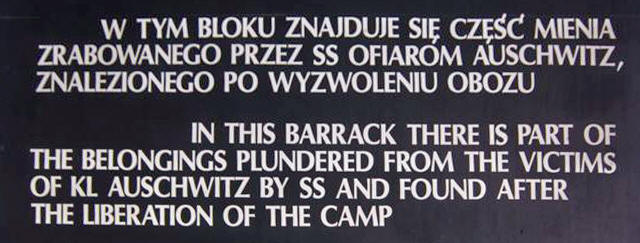
The first display case in Room 5 of this Block is filled with the artificial legs and crutches which were brought to the camps by incoming prisoners.
The wounded Polish war veterans from World War I accounted for most of this huge collection.
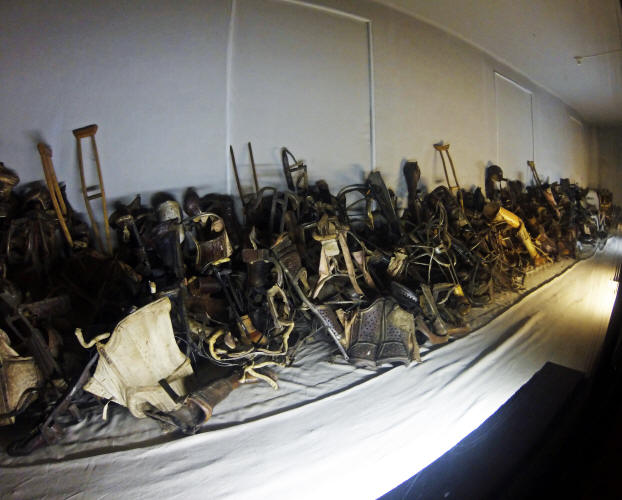
There are also some displays, showing the victim's meager belongings they brought with them to the camp.
Then you get to this huge display of shoes in a large glass case (below left) that takes up half a barracks room in this Block. When the Red Army liberated the camp on January 27, 1945, there were 43,000 pairs of shoes in the camp. Their photo (below right) shows the shoes found in a warehouse; the others are ones I took.
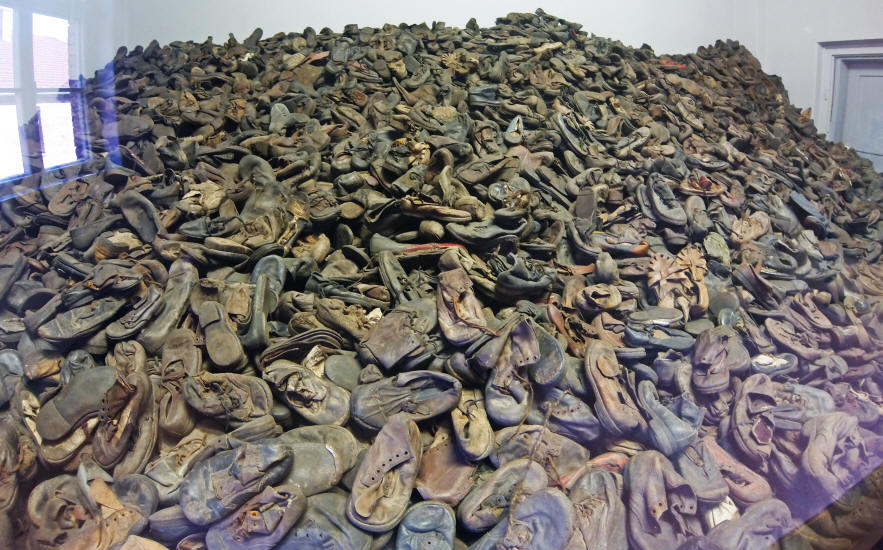
The shoes are deteriorating and are mostly the same dark gray color, except for the red leather ones.
There is another large display case in this Block, taking up half of a room, which contains the suitcases brought by Jewish victims to the camp. They were instructed to mark their suitcases for "later identification" and you can see the names written on the leather cases in large letters in the photos below. On the lower left suitcase (photo below right) you can see the word "Waisenkind" = orphan, showing that there were children among the victims here.
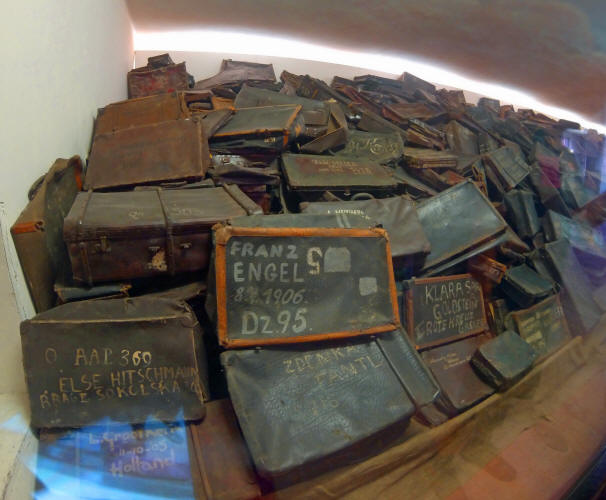
The leather suitcases have not deteriorated as the shoes have, which might mean the shoes were treated with Zyklon-B gas before sending them back to Germany, while the suitcases may not have been.
Below left is their display photo of a collection of clothes and on the right is my photo of the display showing the collection of tobacco pipes.
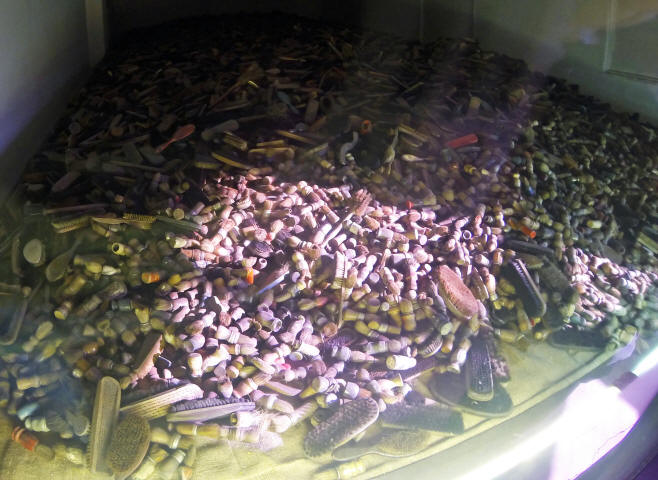
I left Block 5 and then entered Block 6 titled "Prisoner's Life."
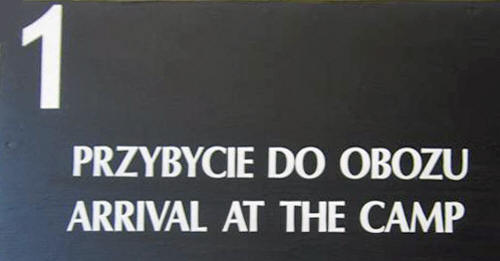
Block 6 shows the children, the sculpture of starving victims, the starvation famine, prison clothes and the registering of the prisoners. Room 1 was titled "Arrival at the Camp." One of the exhibits here was, coincidentally for me, spectacle glasses (below left) and then a photo of one filled with wooden hairbrushes (below right.)
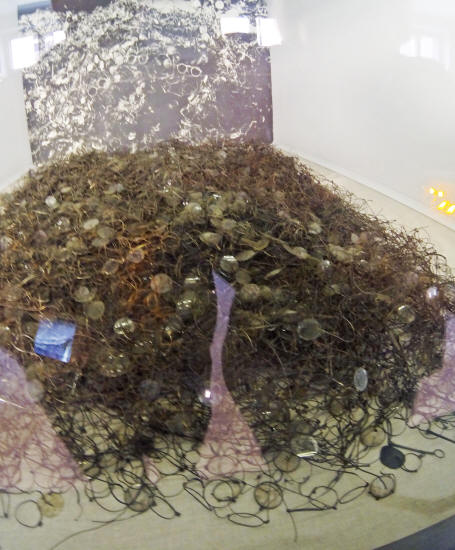
Others displayed some of the enamelware dishes brought to the camps by the victims, as well as ...
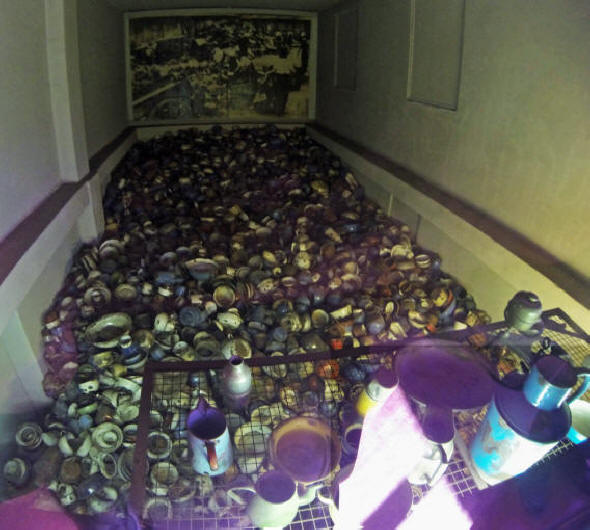
... a display of the lids from cold cream jars and flat cans of shoe shine wax.
There is a glass case with Jewish prayer shawls which are old and worn and have been darned and patched.
Then there were displays showing the blue and gray striped uniforms worn by the prisoners.

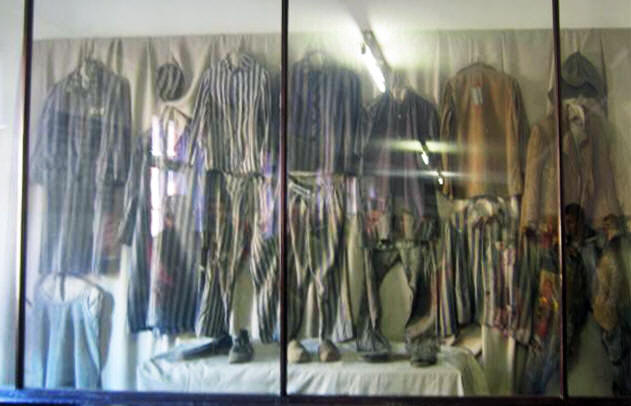
The walls were covered with individual head shots of the prisoners.

I picked out two to show the detail they kept for each prisoner. On the left is J�zef Gr�nholz, labeled as a Polish Jew who was a coachman. He was born November 10, 1908, was "deported" here on April 2, 1942 and died on July 10, 1942 at age 34. On the right is Hirsch Metzger, labeled only as a Jew. He was born March 26, 1920, was "deported" here on April 15, 1942 and died on May 10, 1942 at age 22. Two human beings whose only crime was being a Jew. Looking into their eyes is haunting. All this under the command of one man.
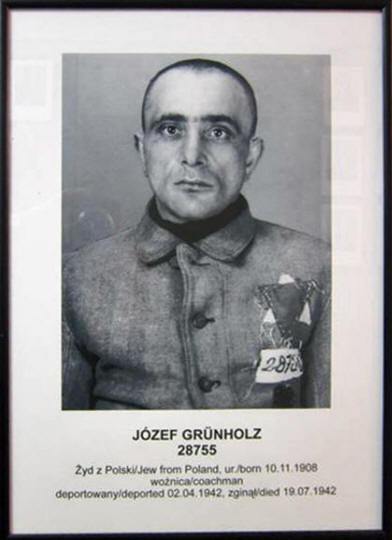
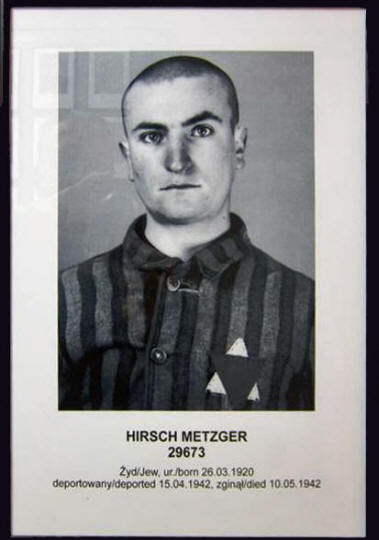
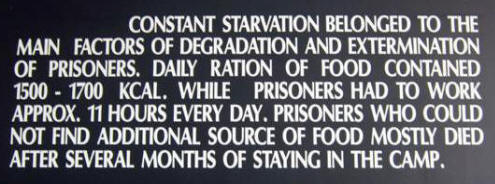
They displayed large photos which showed the evidence of the horrendous starvation that occurred here. These are photos taken when the camp was liberated. It took as much as four months of hospitalization to recover some of these people. This was Marcia's father's [Wesley Wasgatt MD] job as an Army surgeon; setting up nearby hospitals to care for these liberated victims in Germany and Austria. He never talked about his experiences with his family; he just came home and practiced medicine in Rockland, Maine for 35 years.
Below is a wall of photos from the liberation.

Here are some closeups of the ones at the far end.
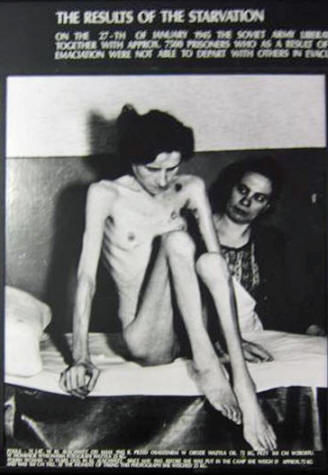
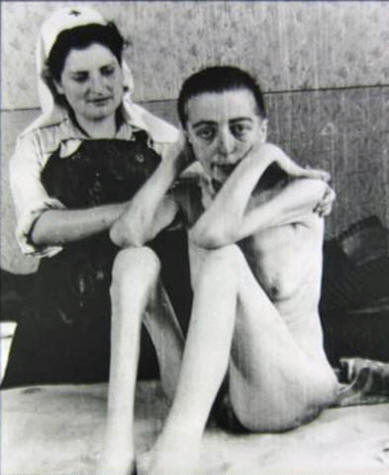
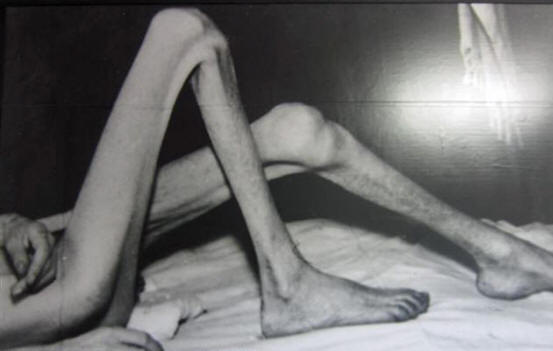
Marcia first learned about his WWII experiences when she discovered diaries and photos he had hidden in the attic, almost twenty years after he died in 1979. You will see the hospitals and old concentration camps he was involved with in our 1999 UK trip when we traveled from Paris to Vienna. Here they have a sculpture entitled "Starvation" (below left.) There are many photos of young people and children (below right) and below the portraits were cases displaying the collected children's clothing (lower right corner.)

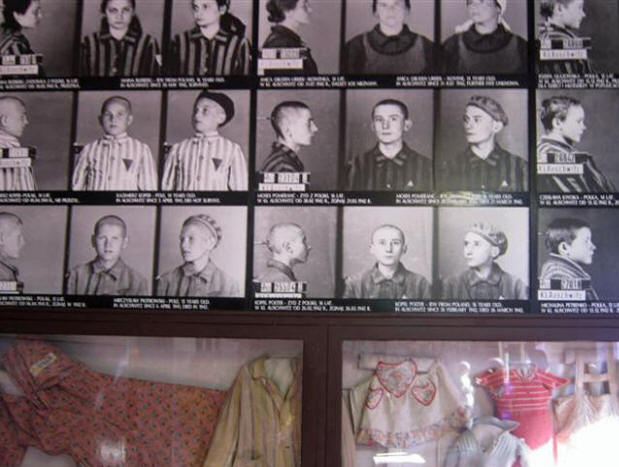
Below left are photos of the children arriving at the camp and on the right, four little gypsy girls.
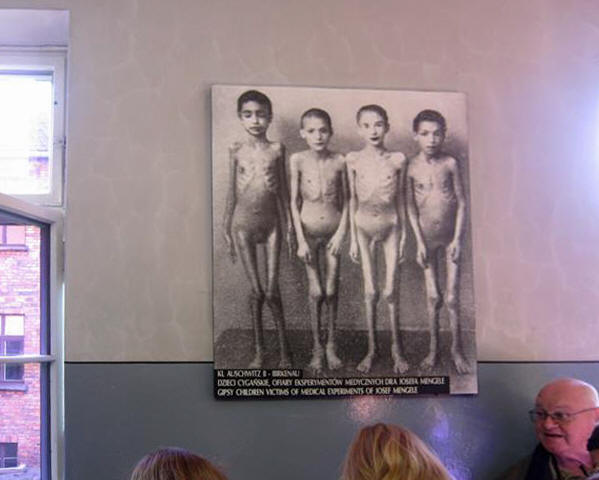
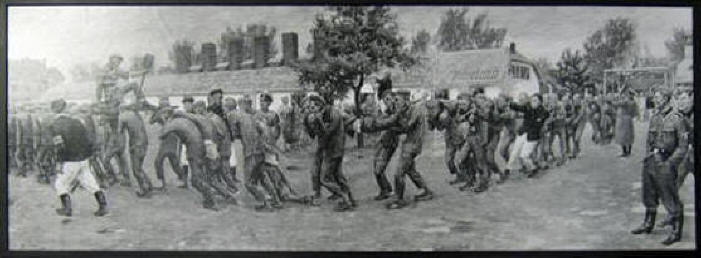

The sign reads: "Reconstructed interior of a brick barrack for prisoners at Auschwitz B - Birkenau. More than 700 prisoners were assigned to one barrack. At least 4 to 5 prisoners slept on each pallet. Such extremely primitive barracks had practically no heating and they lacked any sanitation."
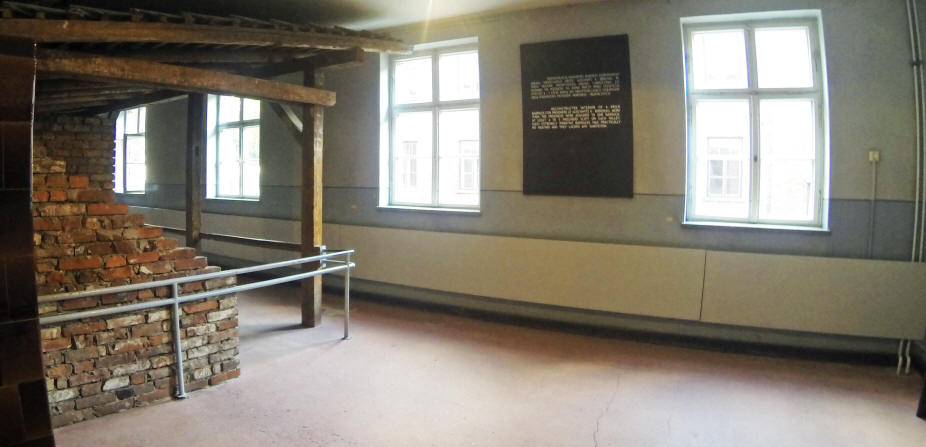
The signs below explain the conditions of the just-arrived prisoners.


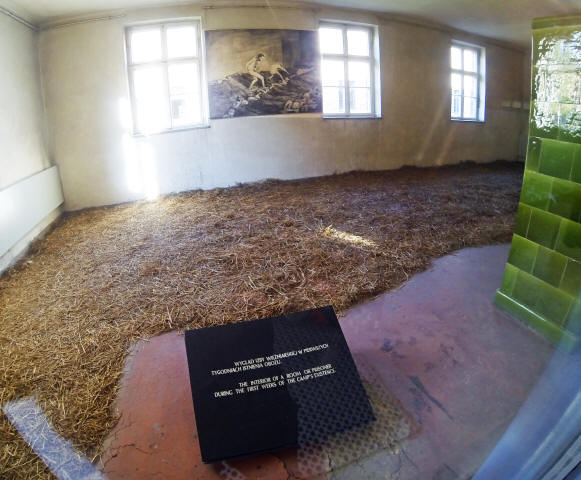


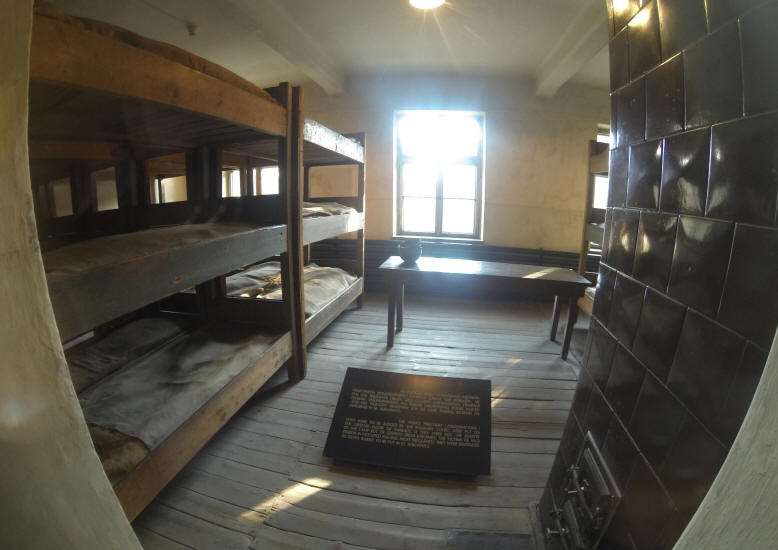


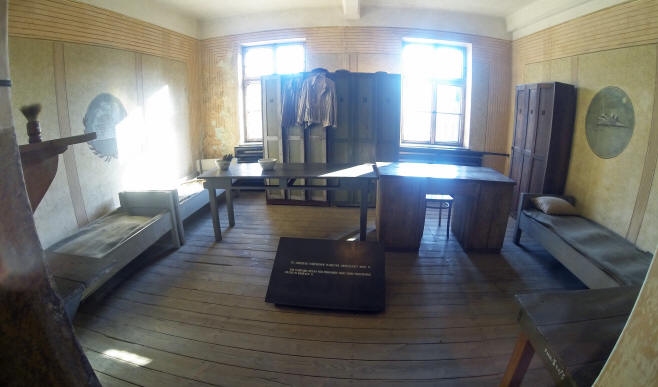
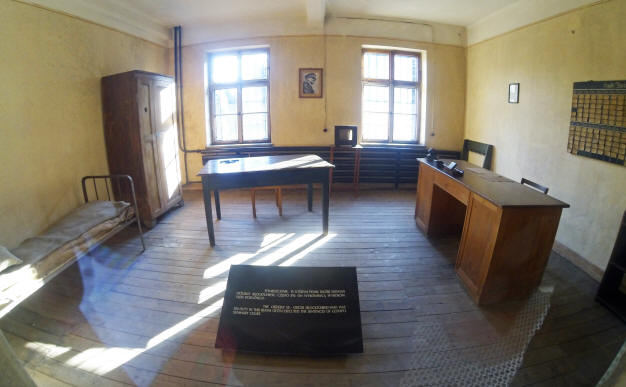
I then moved on to Block 7 which is titled "Living and Sanitary Conditions" of the camp. Below right is a stock historical photo of the prisoners in their beds.
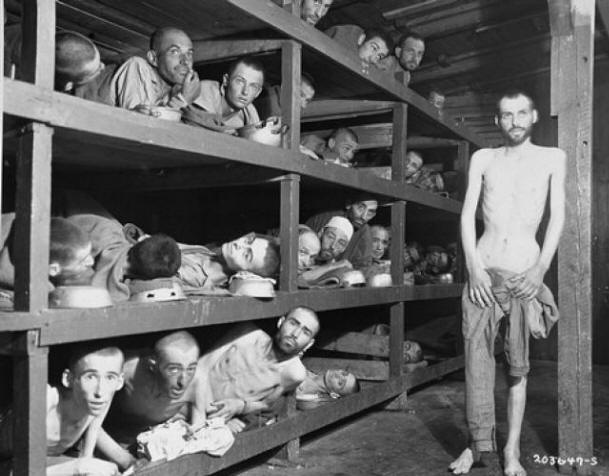
Below right is the Block Master's room (sign below left) who was in charge of that particular Block.
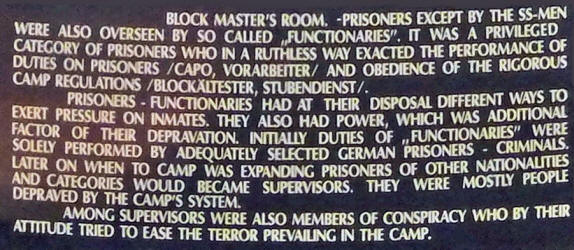
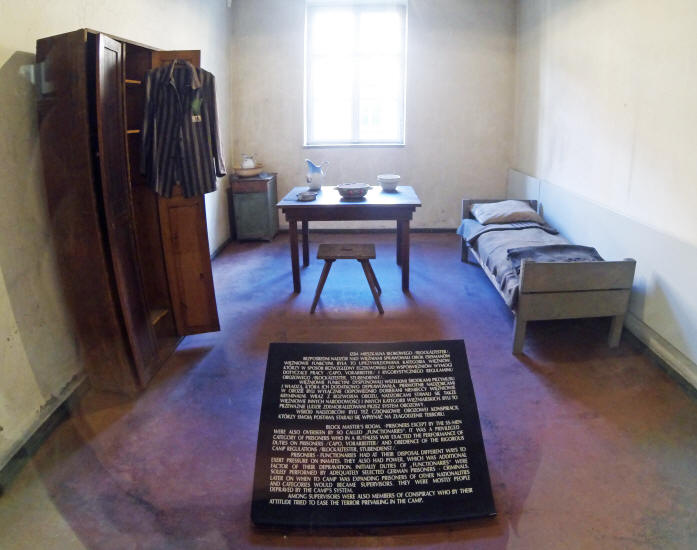
Here they had displays of the three-level bunk beds similar to those at nearby Birkenau (below.) The floors in the barracks are concrete and all of the barracks buildings have double-paned casement windows.
As you can see the GoPro camera (below) adds curves but captures the whole room.
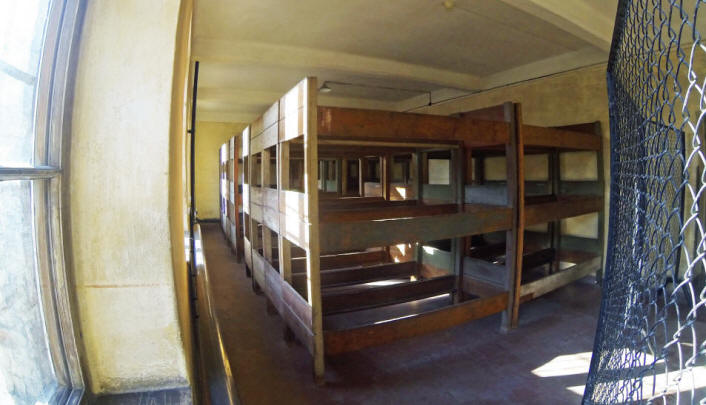
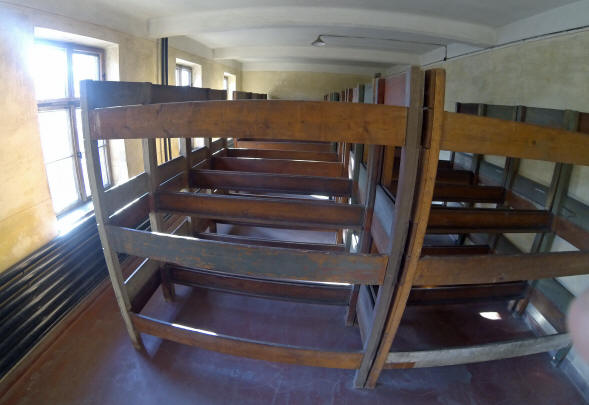
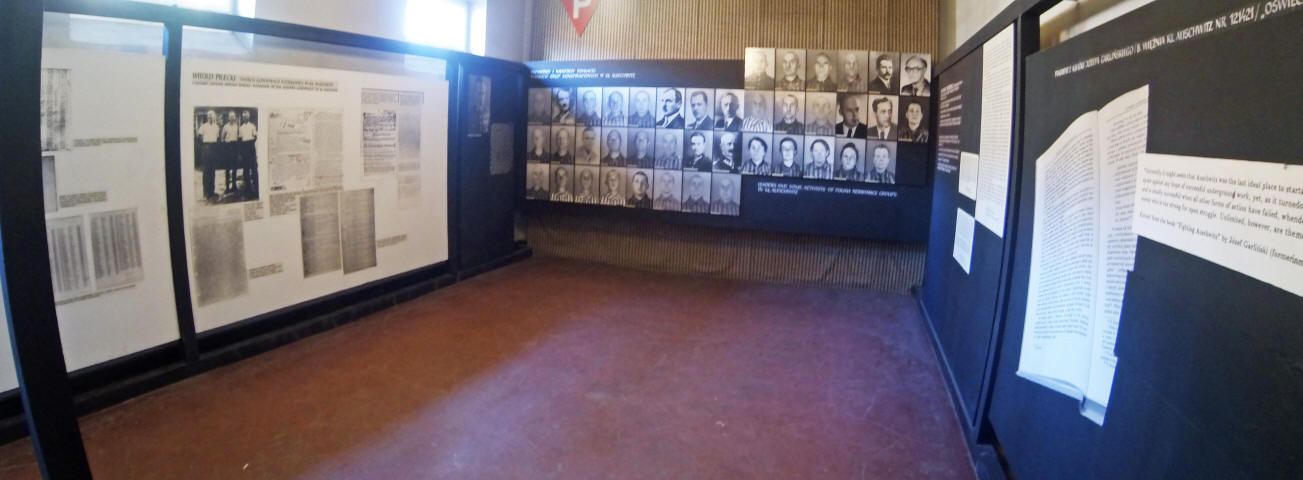
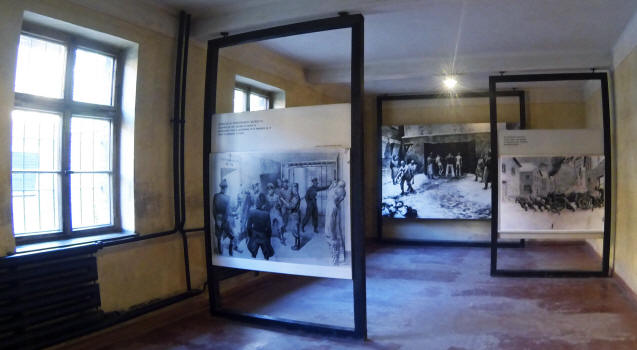
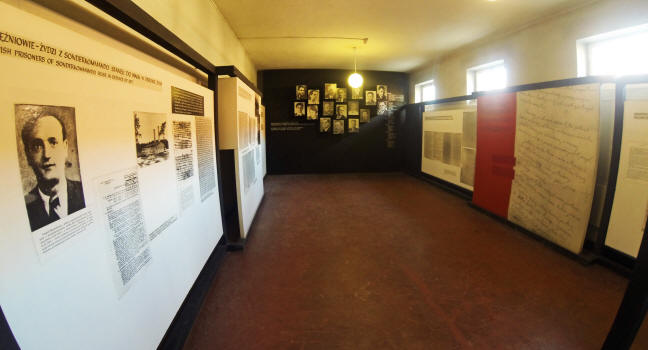
This large display shows telegrams that were sent out by the camp authorities to recapture escapees. An example of one is on the left.
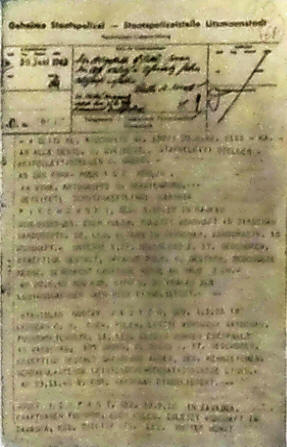
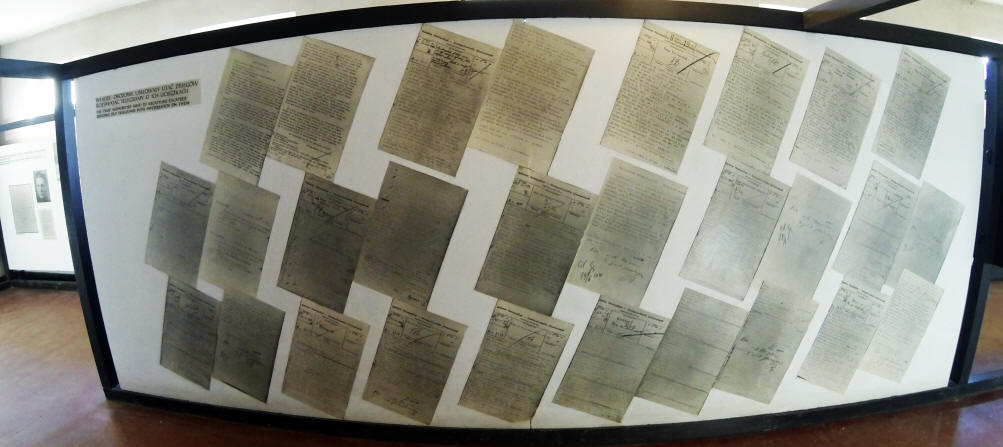
You walk into another room showing the camp washroom (left) and the toilet facilities (right.)
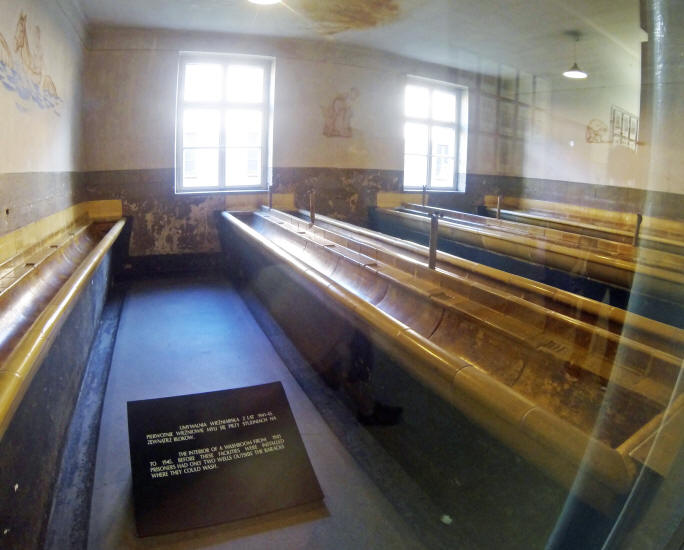
They had photos of what they actually looked like at the time of liberation.
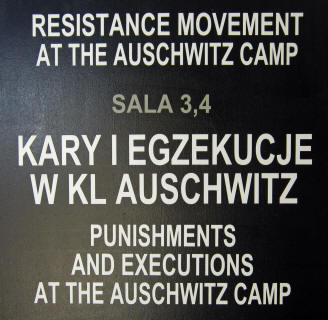
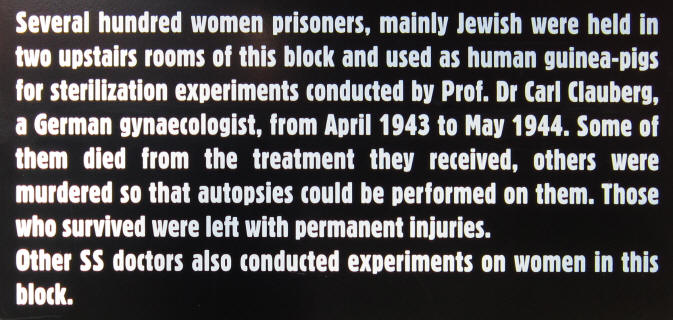
Here is a room showing left "The pillaret for punishing a prisoner, with his hands twisted behind was suspended for several hours," center "A bench on which prisoners were lashed officially 25 strikes, but usually more" and right "A portable gallows for hanging unsuccessful fugitives and prisoners suspected of their resistance movement activities."
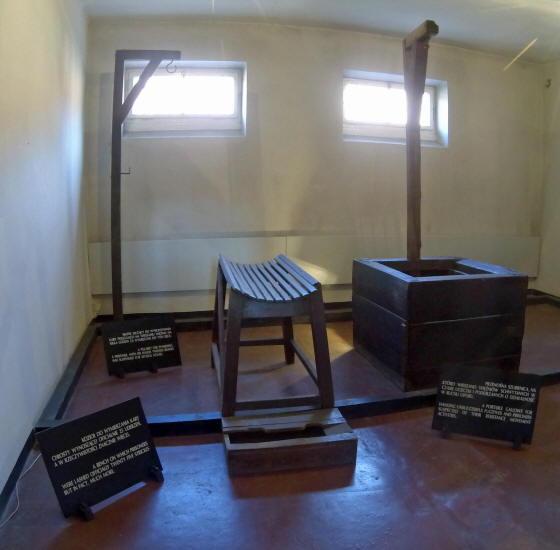
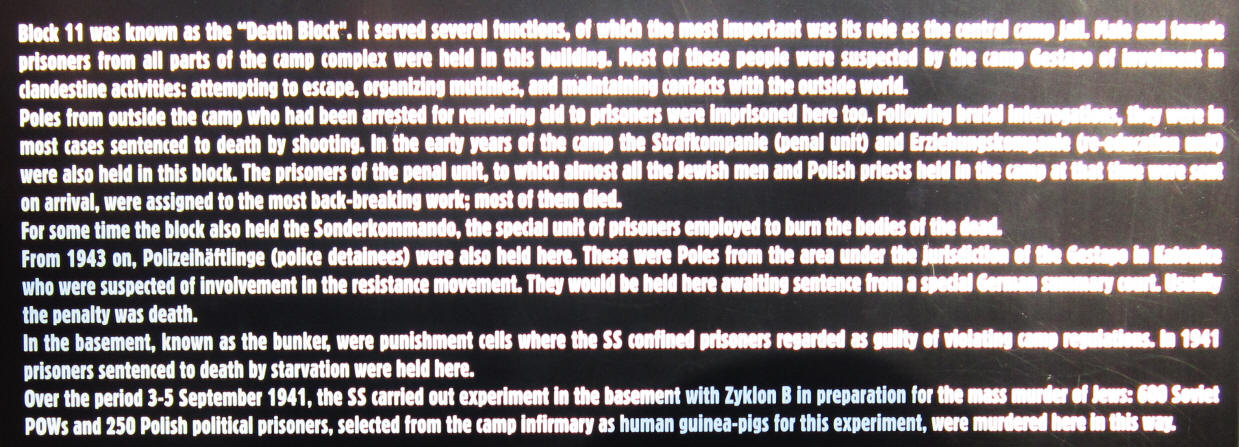
We now step outside the Block to see the Death Wall (below right.) It was almost all destroyed and had to be reconstituted by the Museum.
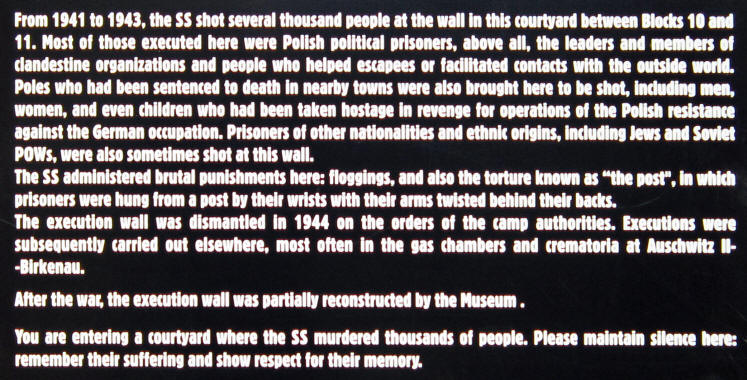
Here are stock photos of it I found.
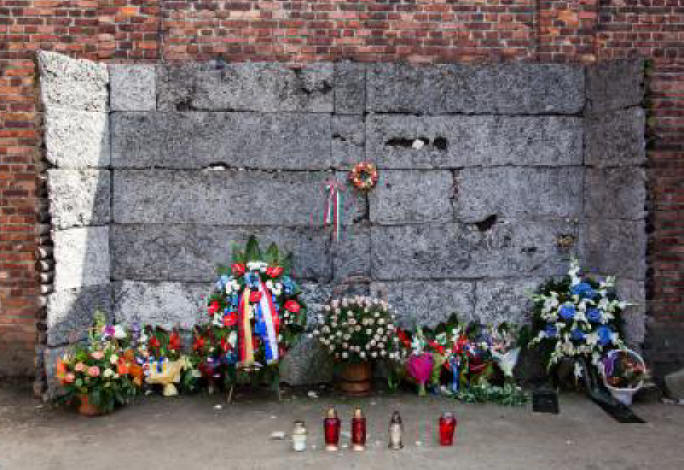
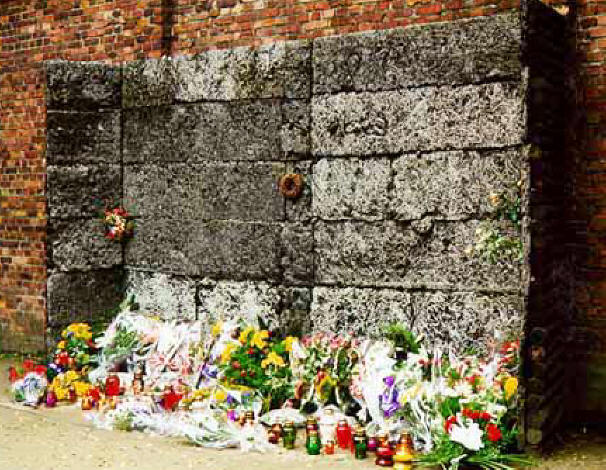
Here are press photos of President George W and Laura Bush's visit here in 2003 (below left) and the visit by Vice President Dick Cheney here in 2005 at the 60th anniversary of the liberation of the camp (below right).
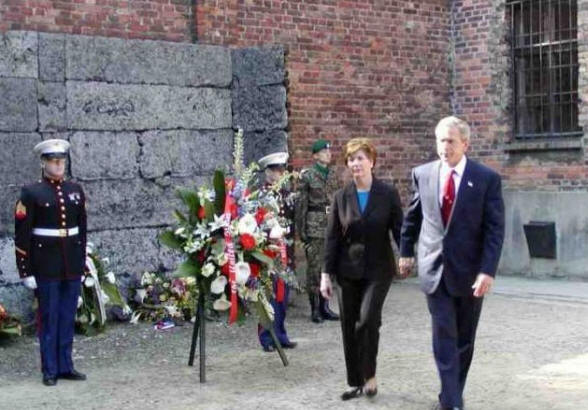
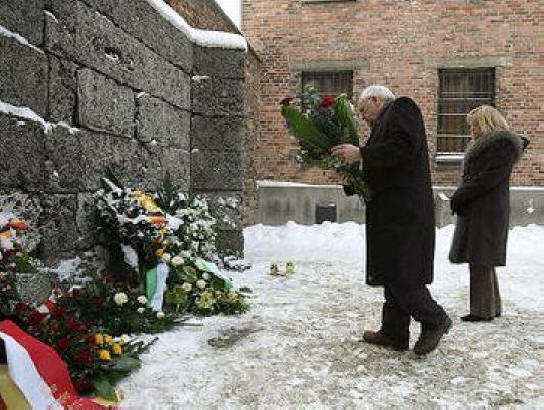
Here are more press photos of Cheney's visit.
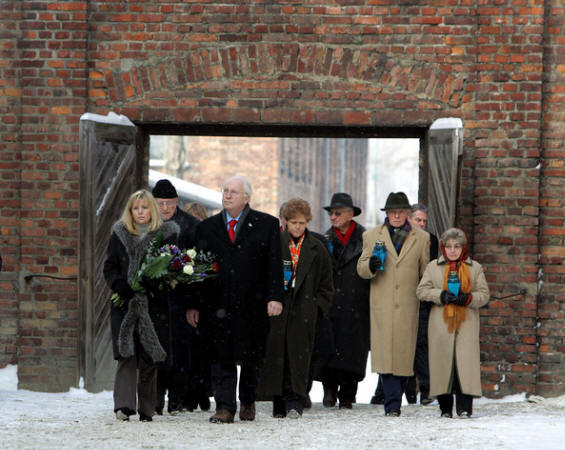
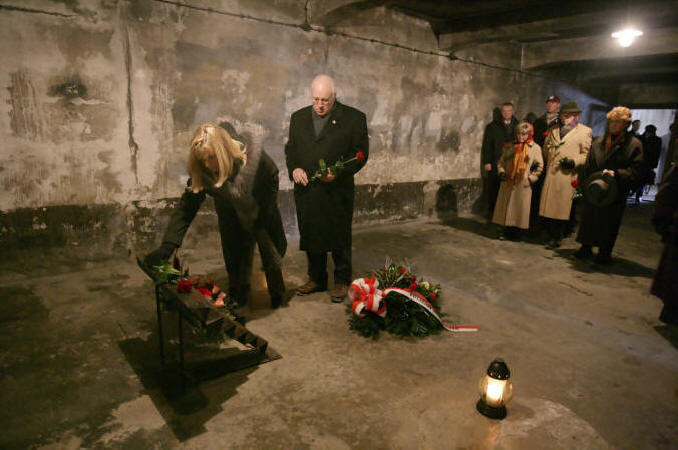
Outside I took these photos of the guard house and fencing around the camp.
Here is the view up and down the street.
There was another large sign carefully describing all the rooms in the Blocks.
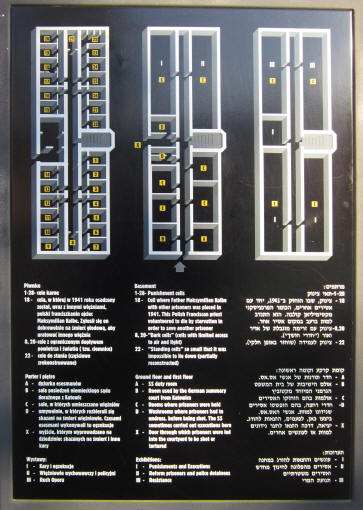
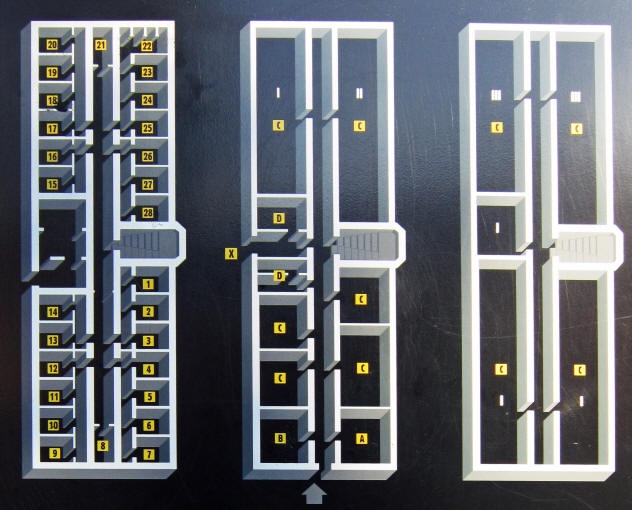

Here is another shot of the Death Wall and a sign showing the camp layout.
I then went into Block 20 with dedications to those brought here from France ('42-'45) and Belgium ('40-'44.)
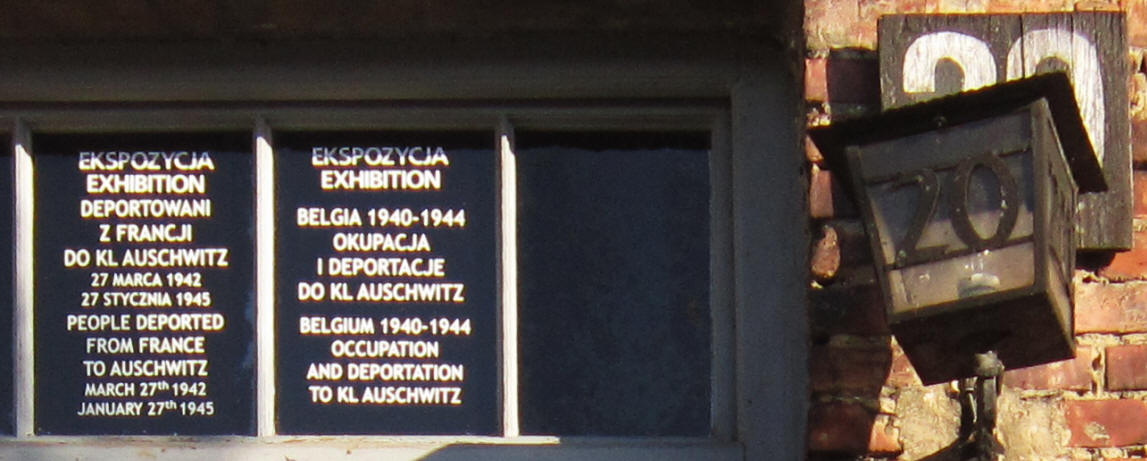
The metal plaque on the front of the building says: "TRIBUTE: Memory to the slaying of health workers in Auschwitz and other Nazi concentration camps. VIth National Congress of Health Workers in PRL 9-10. XII 1966 R.
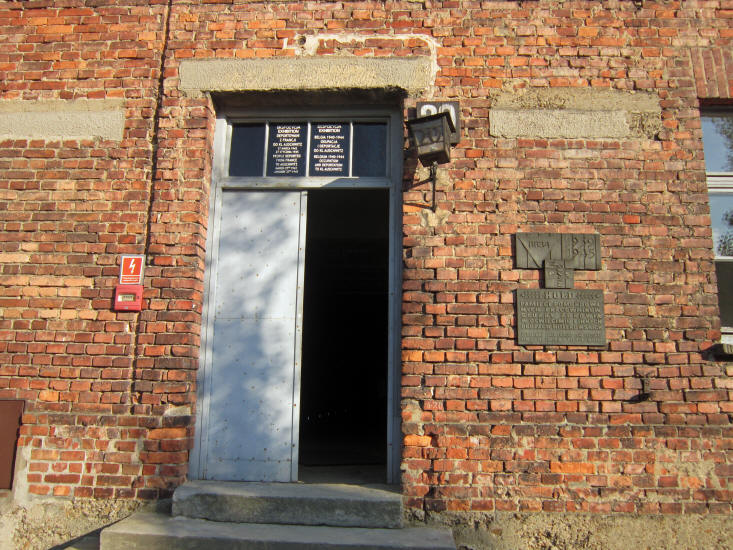
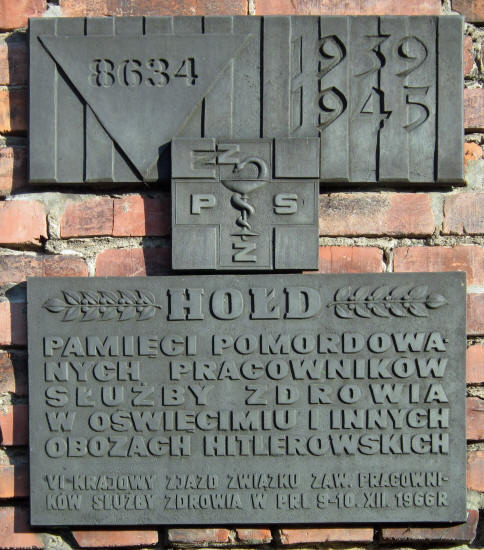

Below left is the entry to the Block and on the right is one of the rooms. As you can read above, this Block was one of the camp hospitals where people were killed.
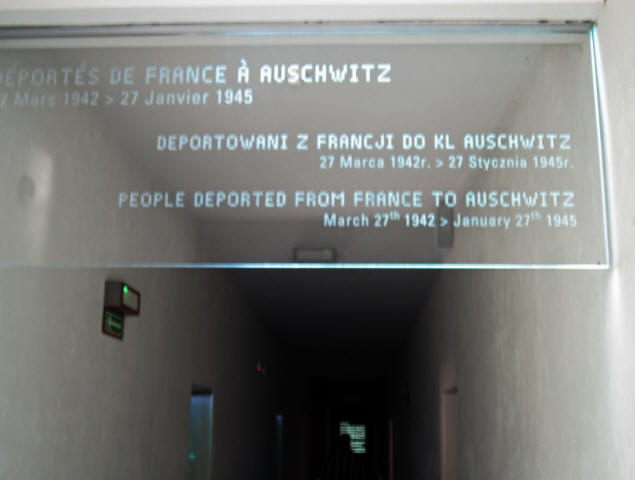
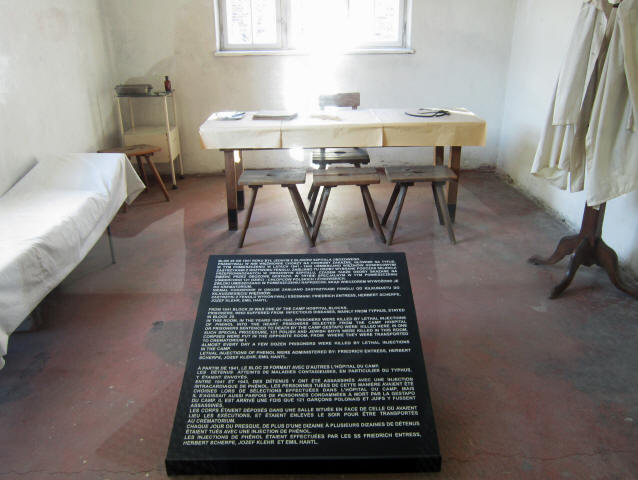
I then went into Block 21 which is devoted to the "Persecution and deportation of Jews in the Netherlands, 1940 - 1945." Italy is also included in the exhibits here.
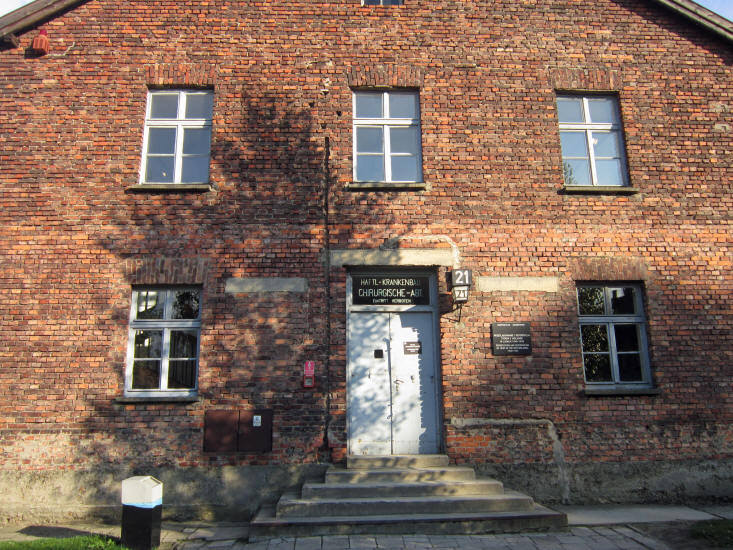
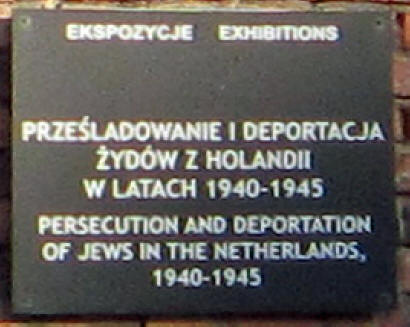
I visited here but didn't take any photos of it.
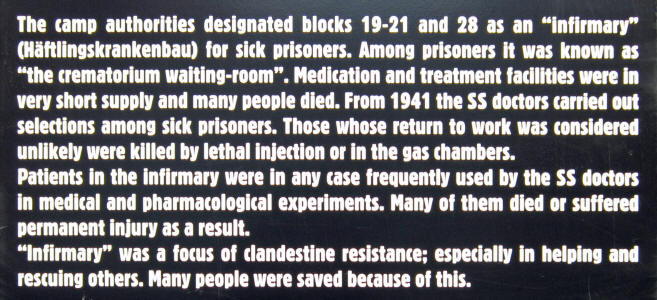
Since my grandparents came from Hungary in 1912, I was very interested in the next Block I entered. The title of the exhibit in Block 18 is "The Citizen Betrayed, to the Memory of the Hungarian Holocaust."
The Hungarian Jews were not deported until the Spring of 1944 after the country was taken over by the German Army.
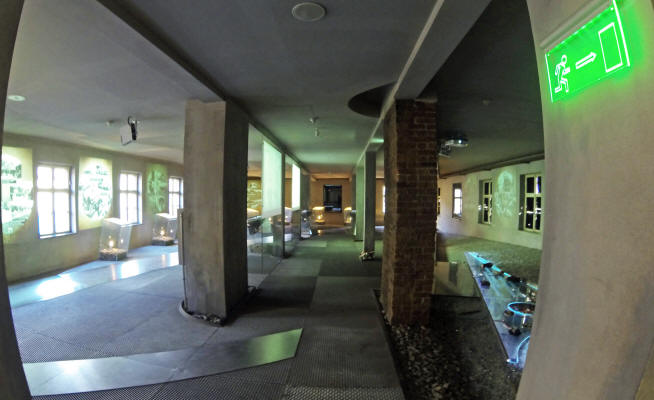
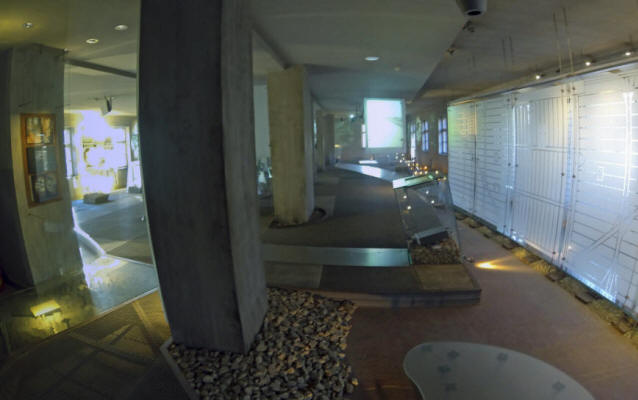

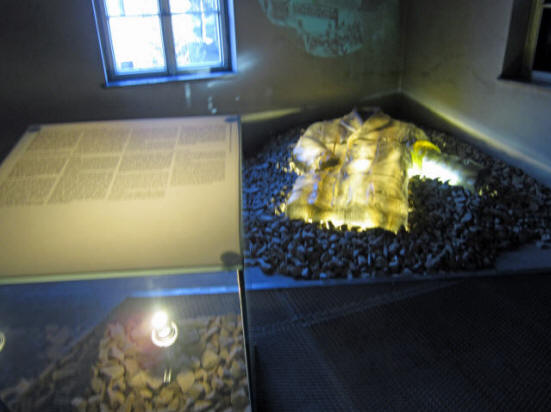
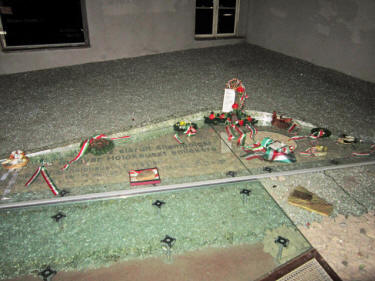
Below is the upper right photo blown up to show the Hungarian tributes.
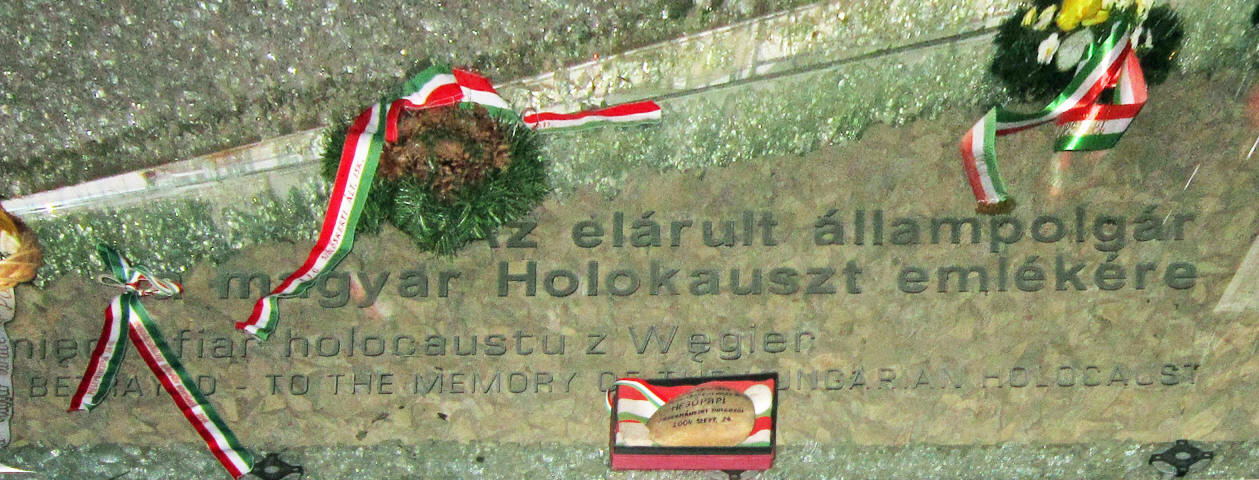
They showed maps of the Hungarian territories where many of the Jews were brought from.
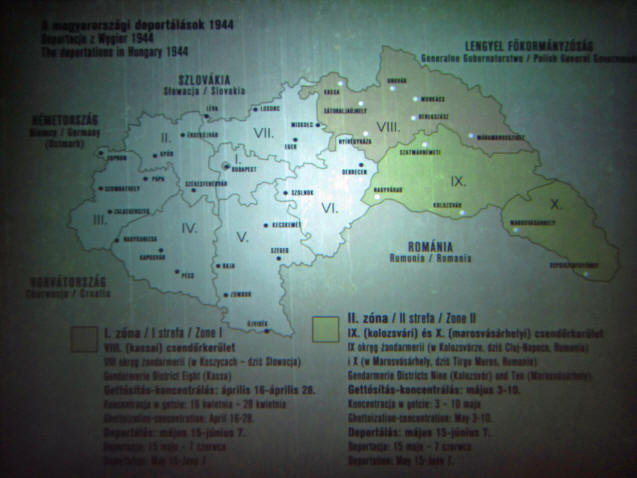
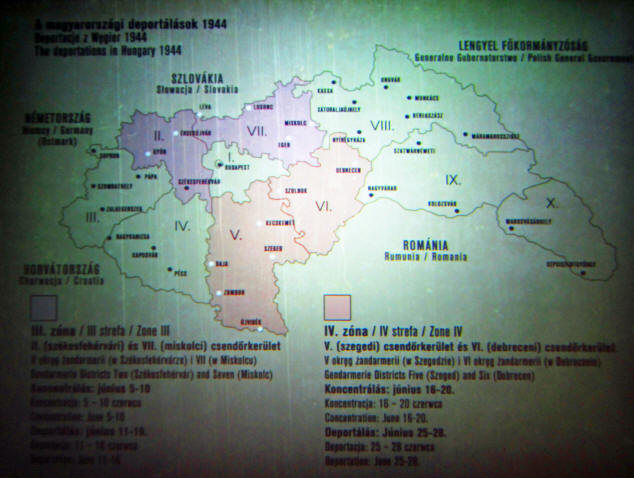
They had many displays about the Nazi leaders.
Below I am reproducing the displays describing the history of what happened in Hungary. You can download and magnify them if unable to read them, or if uninterested, just scroll down past them.
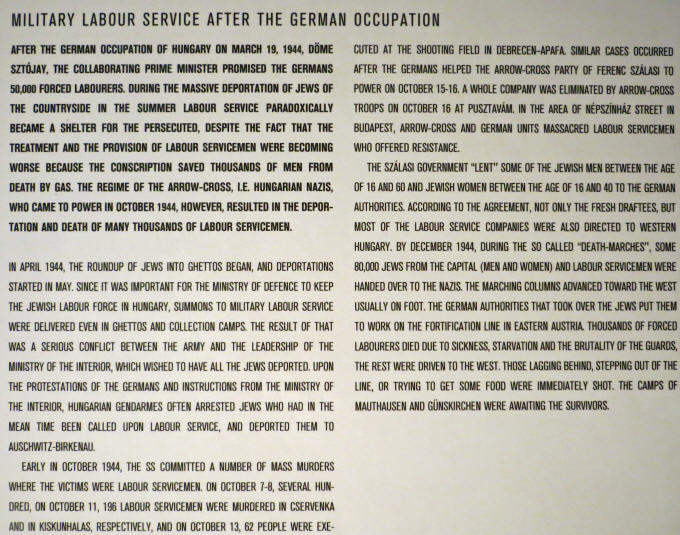
Ferenc Sz�lasi (below left) was the head of the Arrow-Cross Party which sided with the Nazis and helped move many of the Hungarian Jews to the camps.

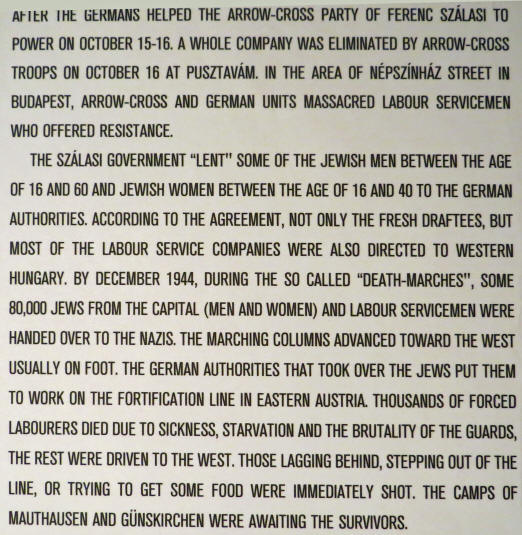
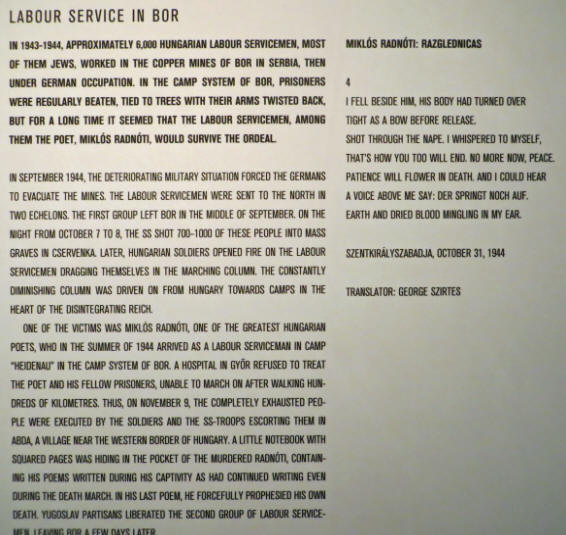

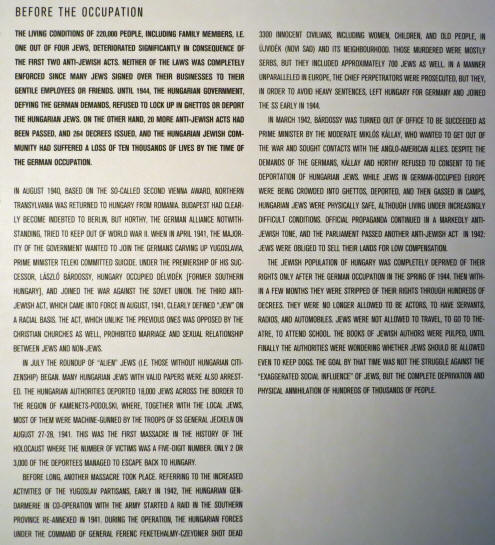
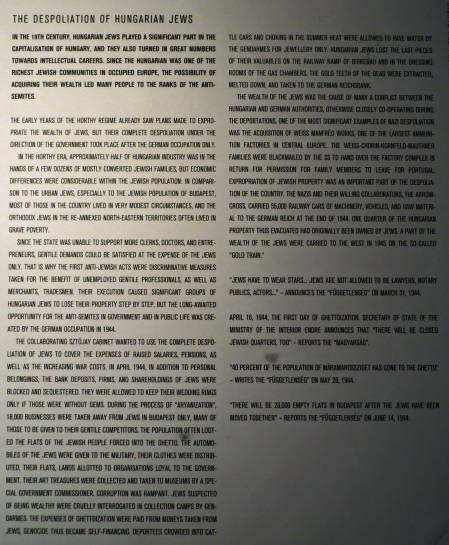

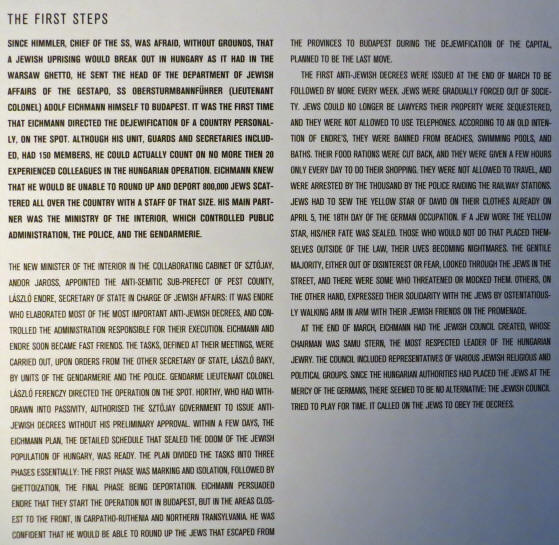
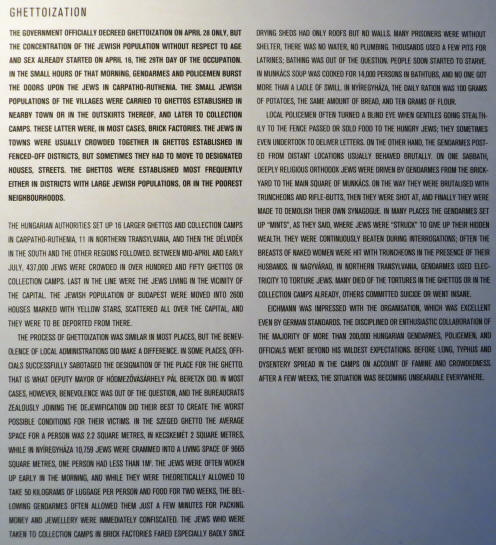
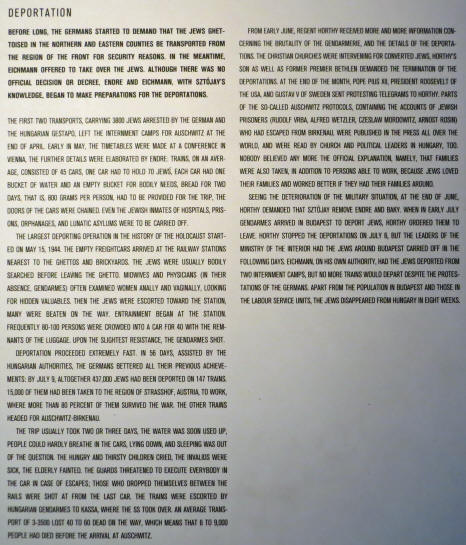
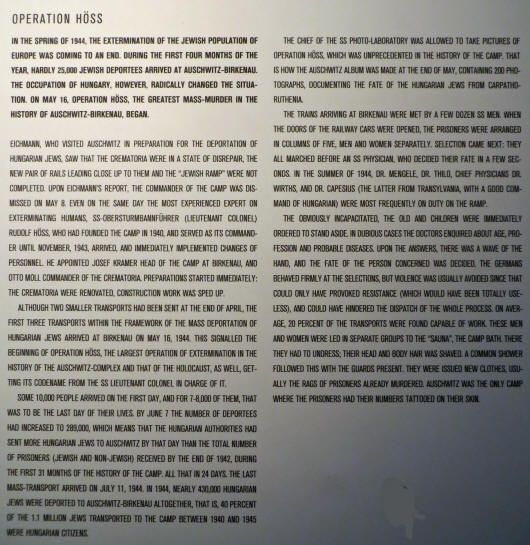
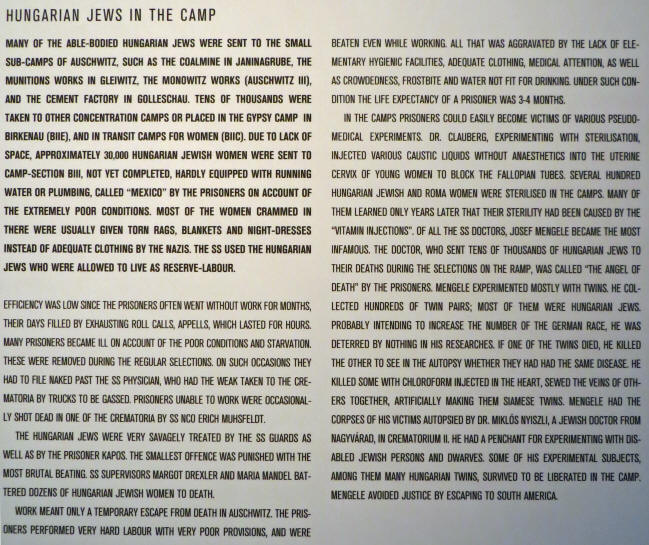
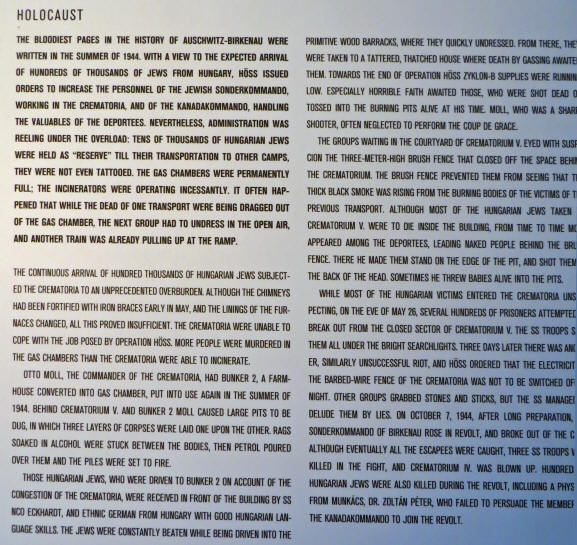
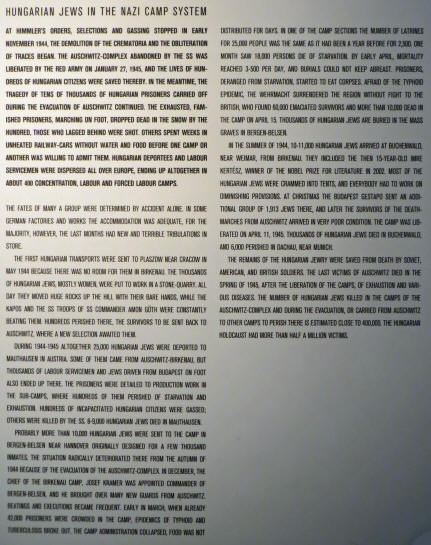
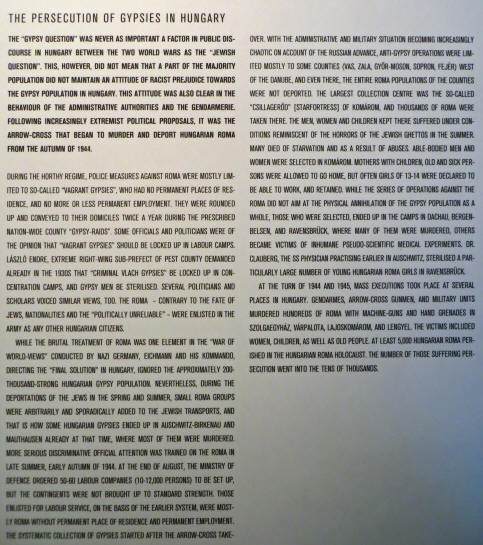
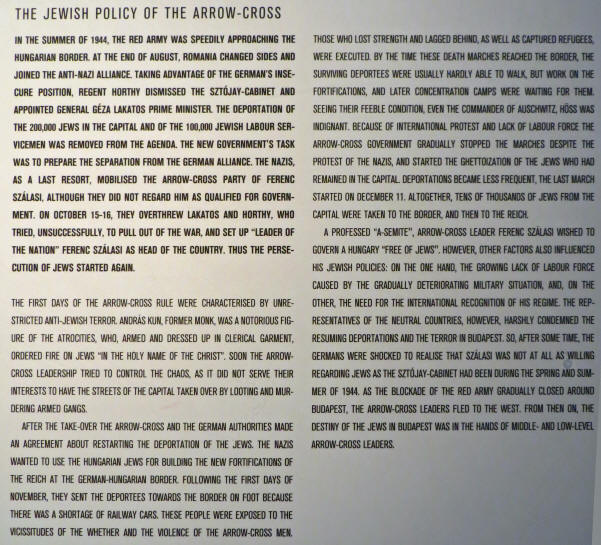
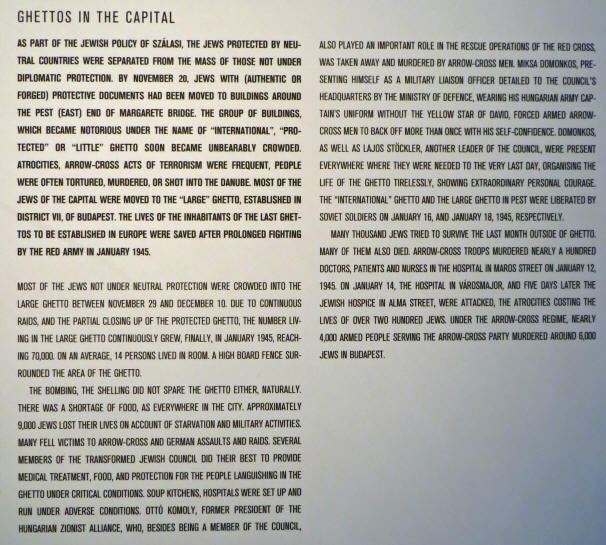
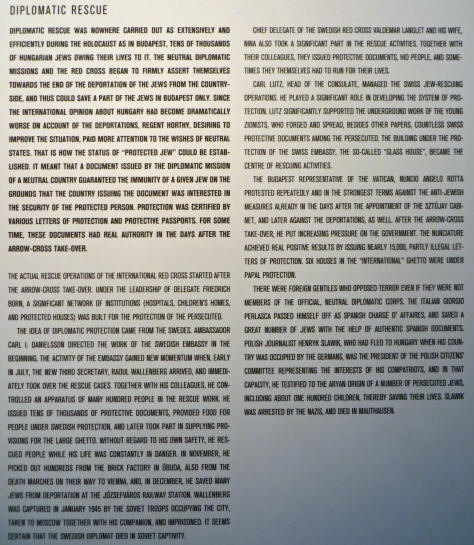
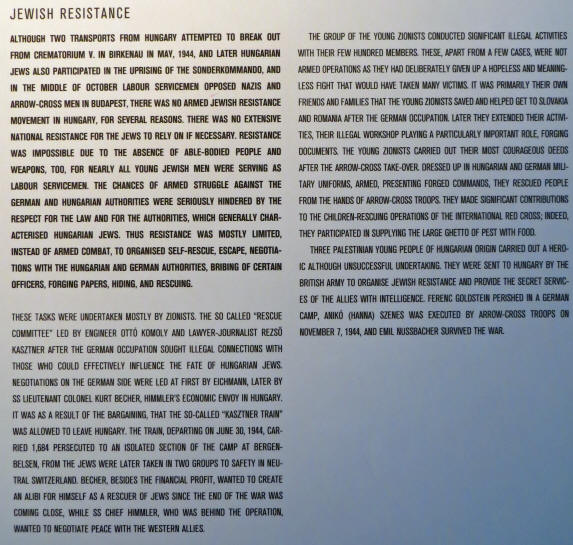
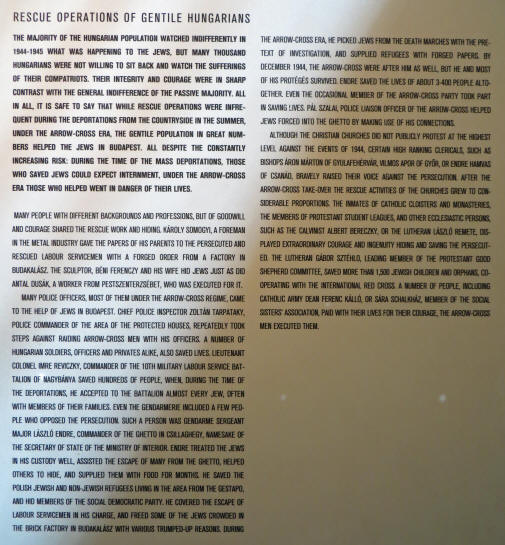
Here are some of the displays in this building.

This the most dramatic demonstration of what happened to the people brought here. They have a photo of Margit Schwartz at the beach with her husband and little daughter.
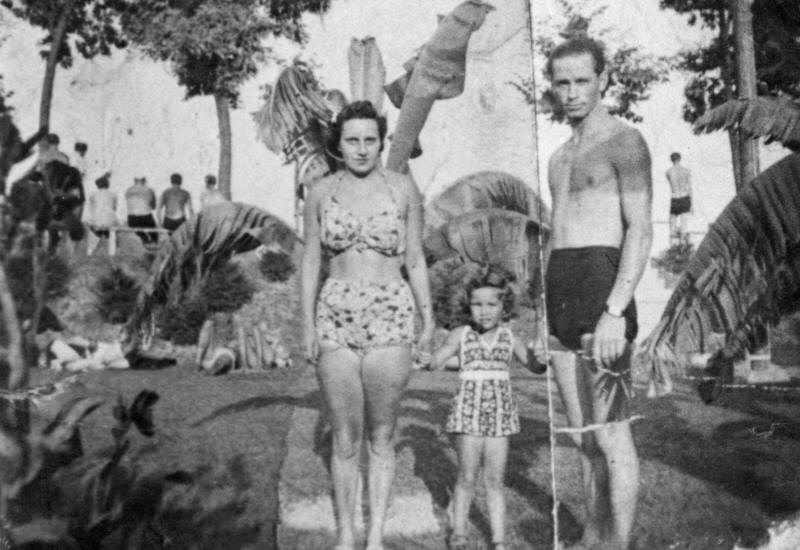
Then they show you what she looked like after the camp was liberated and she was being treated at the hospital. It is said she was determined to stand up and pose for this photograph to show what was done to her.
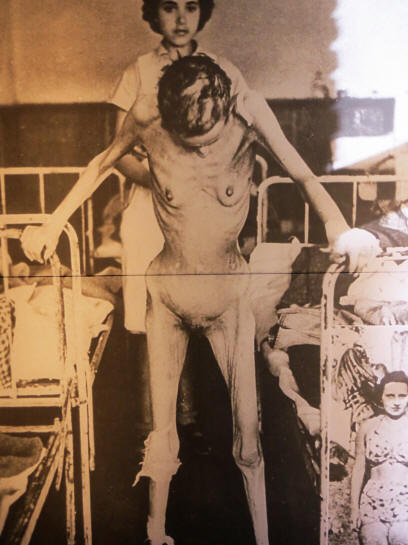
This is just horrible, but needs to be shown to prove what they had done. There was a large display here about Imre Kert�sz (above right,) who was the first Hungarian writer to receive a Nobel Prize (in 2002.) His works were "Fatelessness," "Kaddish for an Unborn Child" and "Liquidation" a trilogy about a 14 year old Budapest boy Gy�rgy "Gyuri" K�ves and his experience surviving this Auscwitz camp.
Marcia got these photos showing the bodies seen after the liberation.
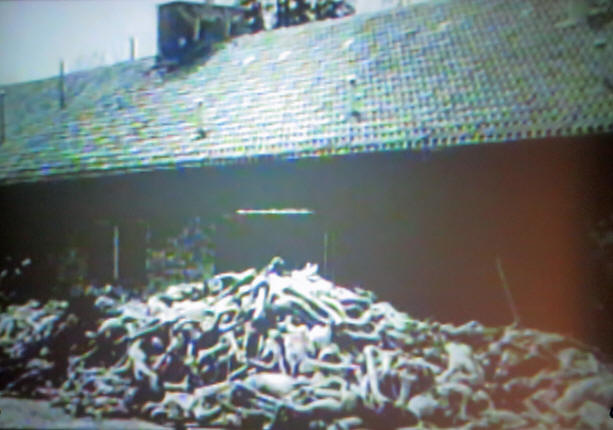
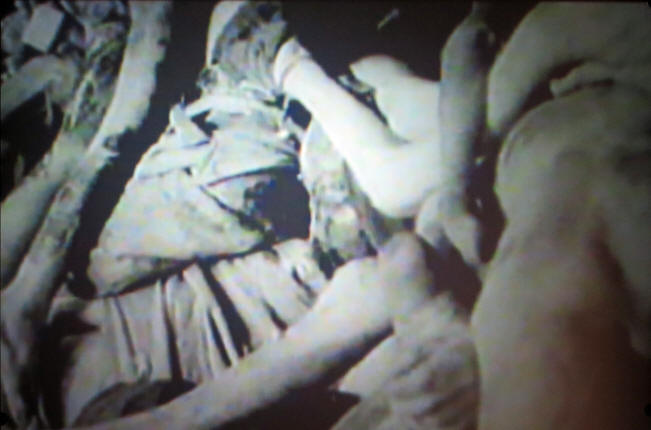
Just outside, on the side of the building, was a large display about the massive hanging of 30 Polish prisoners on July 19, 1943.
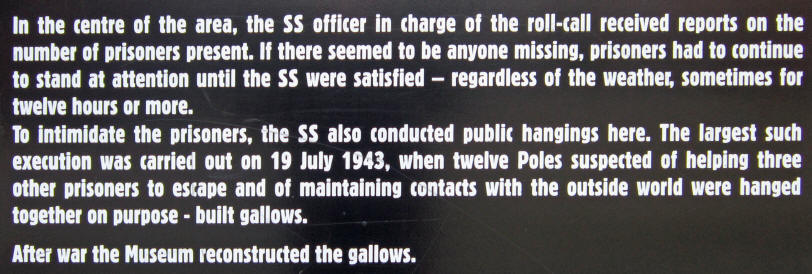
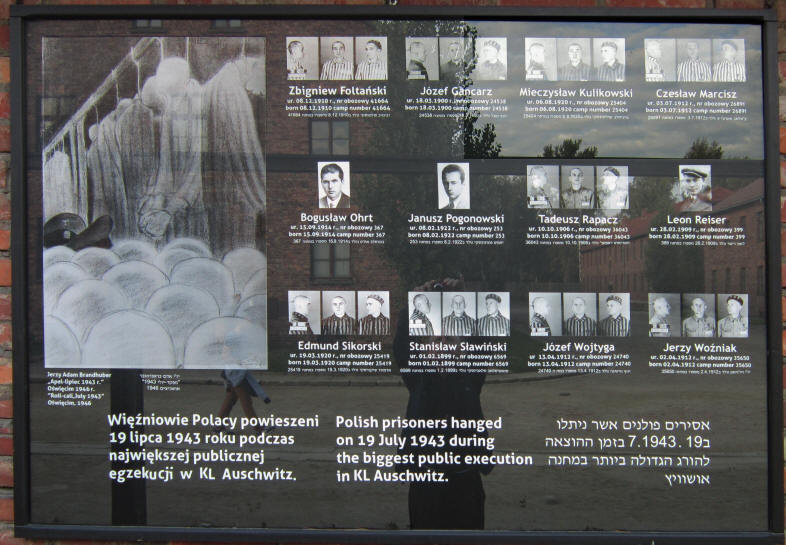
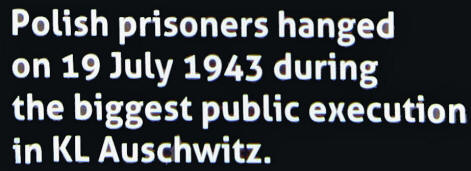
Also outside, are our photos of the sentry station for the SS.

I then entered Block 16 (above) which is titled "The Tragedy of Slovak Jews. Prisoners from the Czech Lands at Auschwitz." Below left is the entrance and on the right is one of the display rooms.
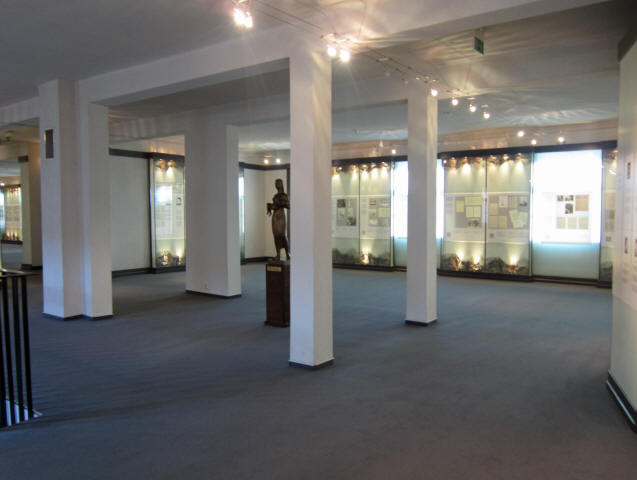
They displayed a large map of today's Czech Republic.

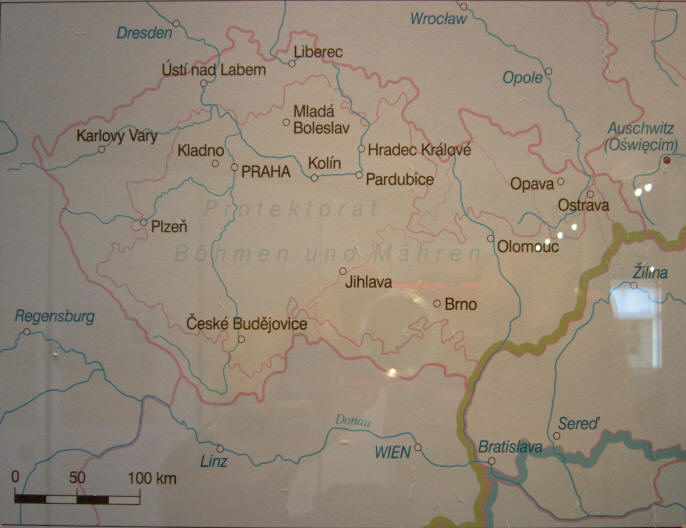
They told the story of Konr�d Henlein (1898-1945), basically their traitor, representing the German minority in the Czech lands northern borders which became known as the Sudetenland. This name was only used after WWI referencing the German populations living along the Sudeten mountains near the border. The map shows the extent of the Germans living there. On the right is the flag they used.

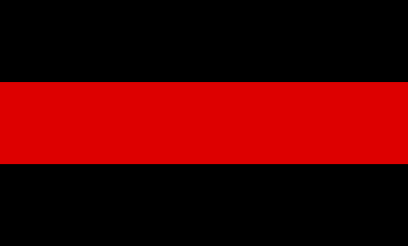
Below is their display of Henlein pictured with Hilter in Obersalzberg (#2).
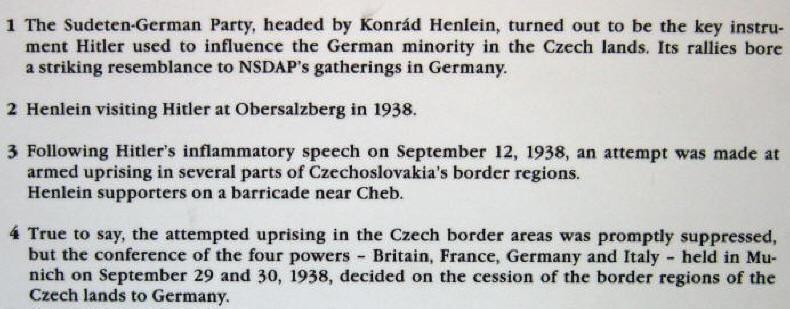
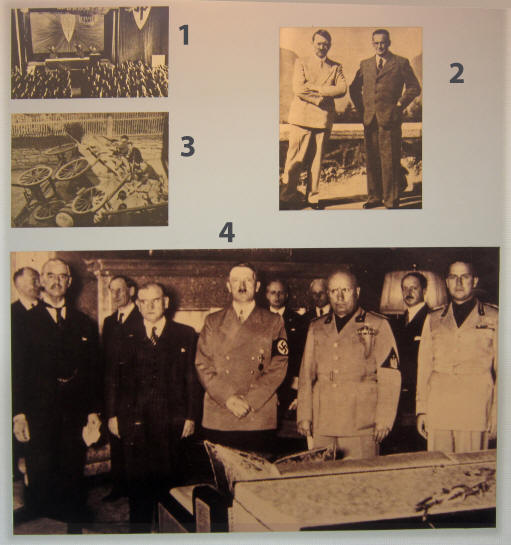
Below left is a photo of Henlein and on the right (on Hitler's left) is him attending the celebration as the Nazi troops marched into to Czechoslovakia.
.jpg)
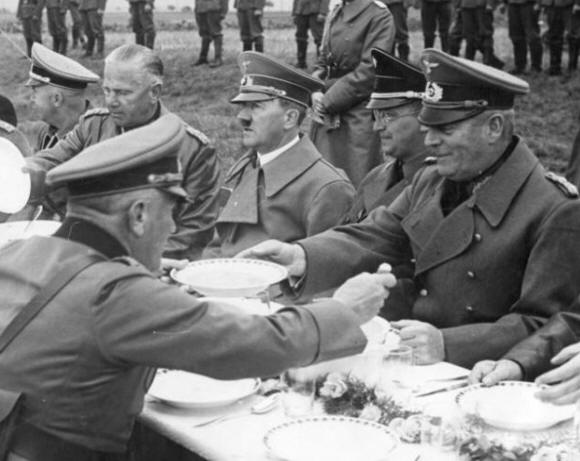
There were displays of the hierarchy during the Nazi control of the country.
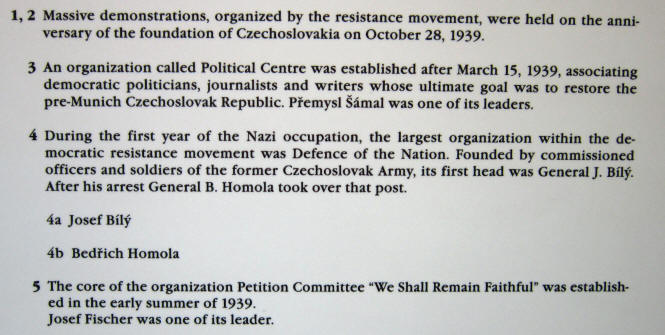

Below is photo of the demonstration in Prague supporting those in Auschwitz.
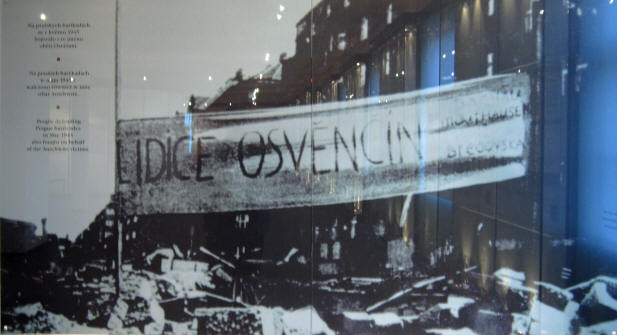
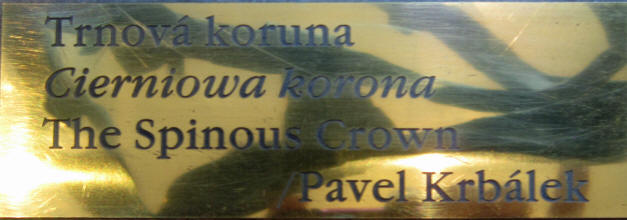
As you climb down the stairs of the Block (above left), you see the sculpture by Pavel Krb�lek (1928-2015) titled "The Spinous Crown" (below). The sculptor (below, with some of his works) died this past month in August. He won a prize for his piece, "Nike 89" (below, far right).
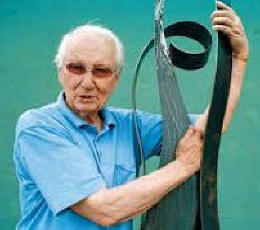
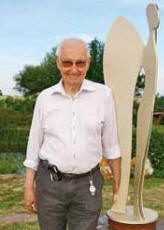
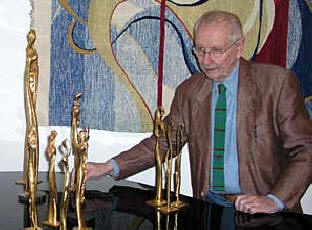

Block 17 has exhibits about the prisoners sent to Auschwitz from Yugoslavia and
Austria. Elie
Wiesel (1928) (right) and his father stayed in the barracks in Block 17 for three weeks
before being sent to work in the factories at Auschwitz
III. He became very famous for speaking out loudly on the horrors of
the Holocaust. His famous quotes are: "We must always take sides.
Neutrality helps the oppressor, never the victim.", "Silence encourages the
tormentor, never the tormented.", "The opposite of love is not hate, it's
indifference." and "There may be times when we are powerless to prevent
injustice, but there must never be a time when we fail to protest." [He
died on July 2, 2016.]
All of the prisoners were kept in quarantine for a few weeks to make sure they were not suffering from any communicable diseases.
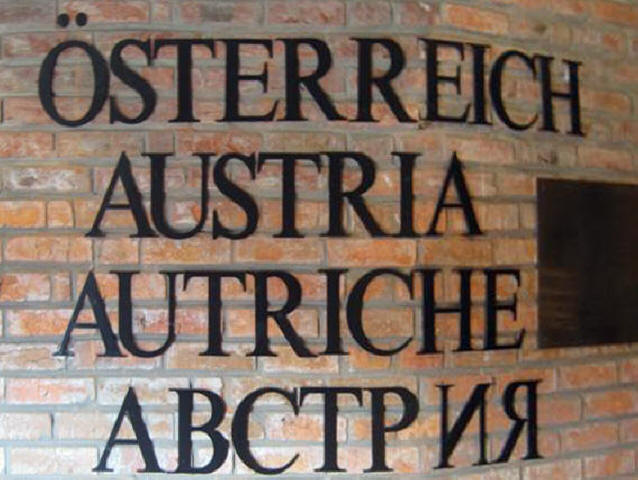
The exhibits here were extremely well done.
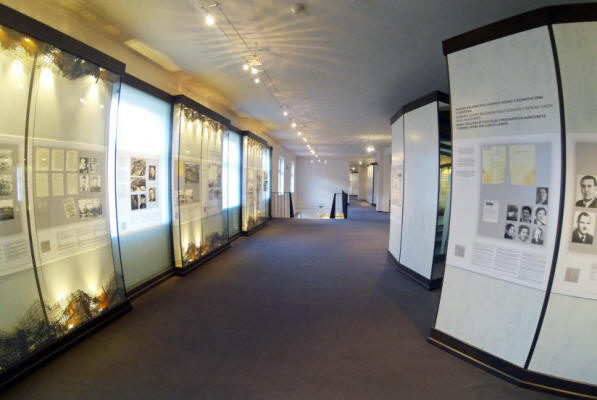
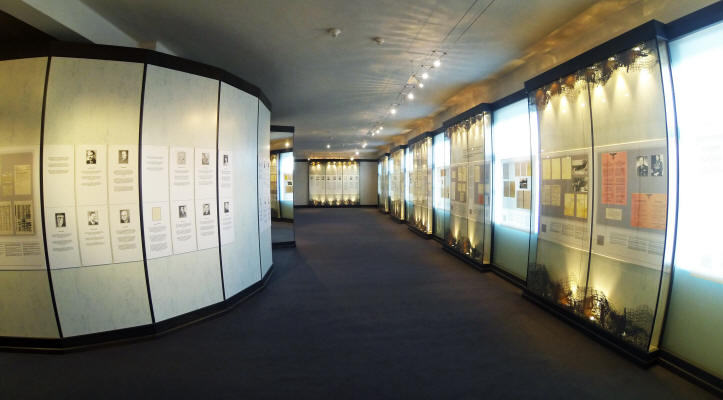

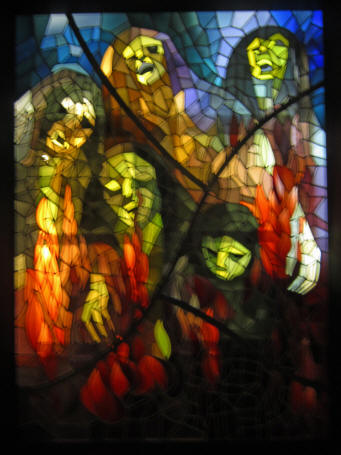
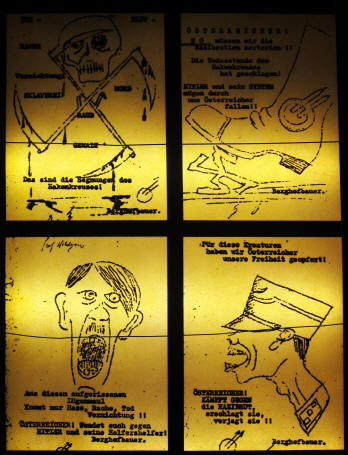
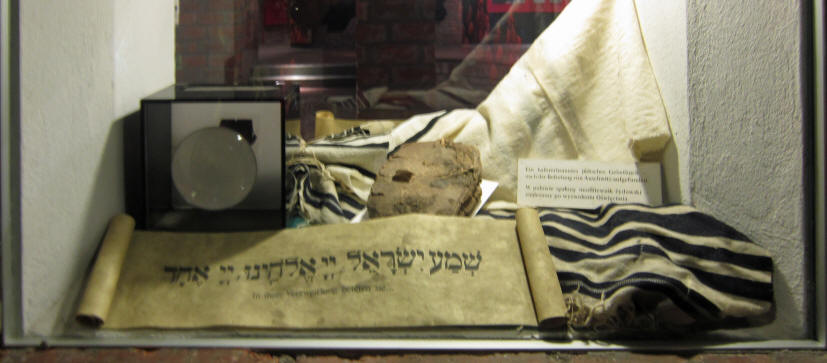
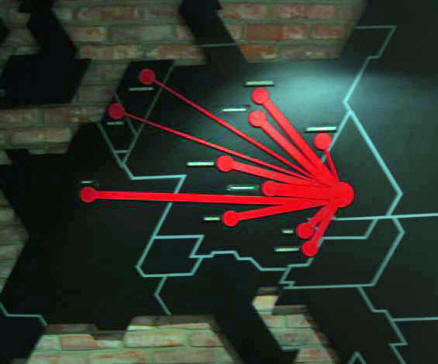
I then entered Block 14 which is simply titled "Tragedia Męstwo Wyzwolenie" meaning "Tragedy Valour Liberation" and states "This exhibit has been organized by the Russian Federation".
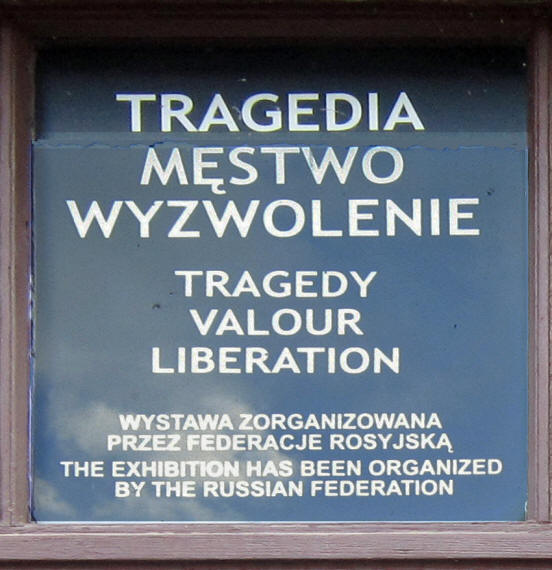
I assumed the exhibit was about Russians who were imprisoned here or the liberation of the camp by the Red Army.
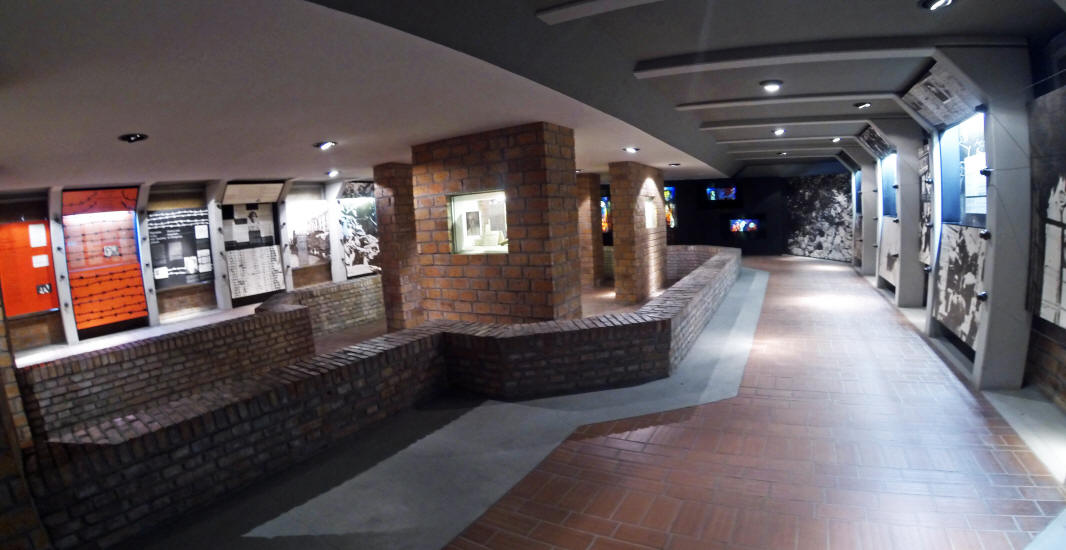
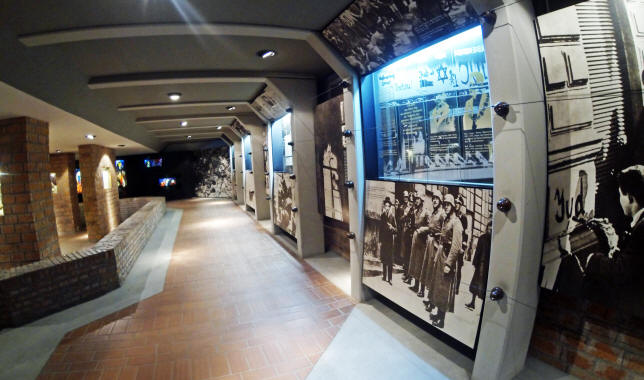
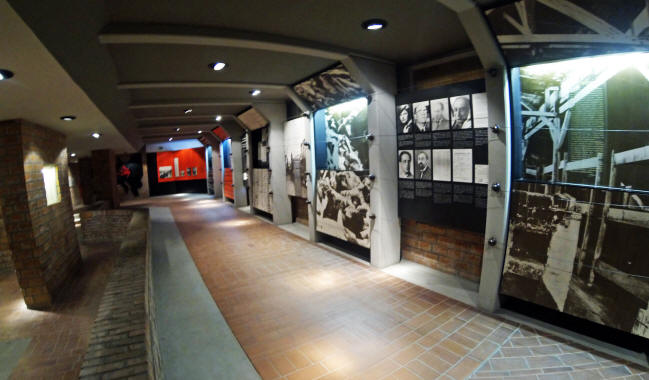
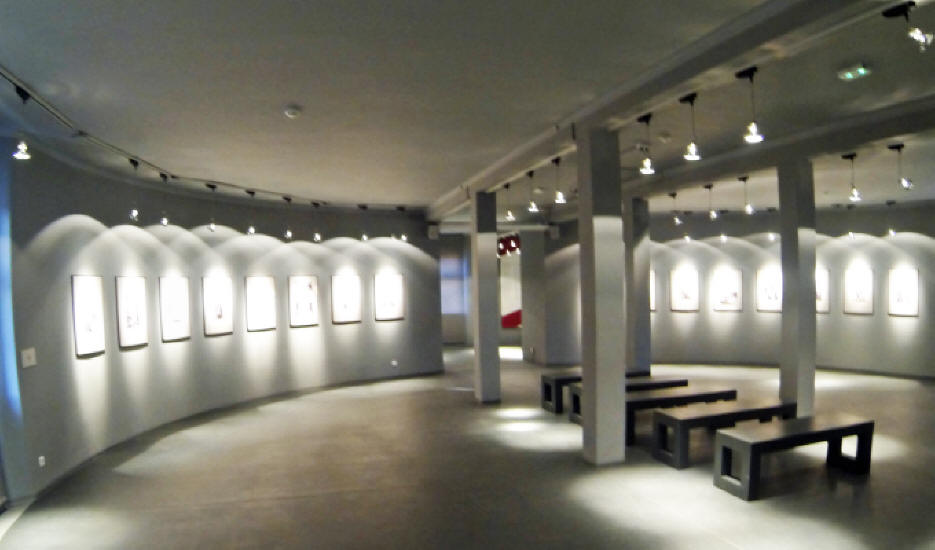
They had many displays of murals found when this was a concentration camp.
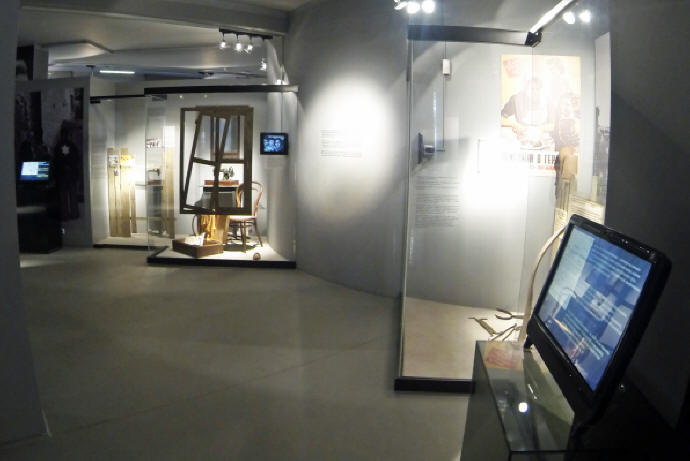
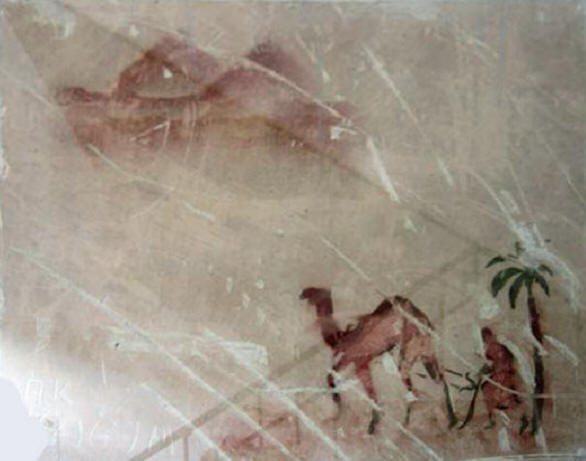
During renovations of the barracks in 1956, they found this cache of tools that were probably hidden there by a prisoner planning an escape.
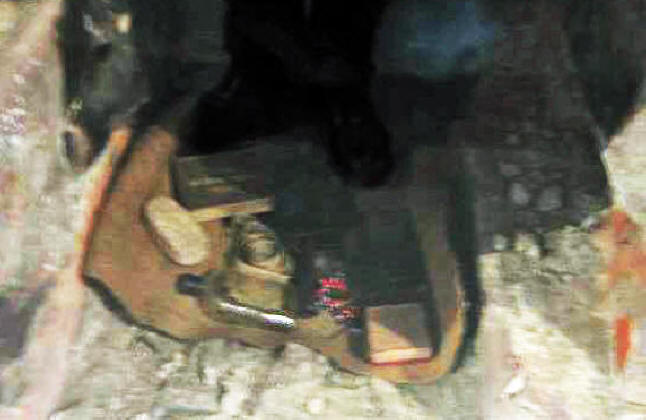

Before the fall of Communism the plight of the Jews was not really accentuated. After 1999, the Polish made more point to describe what happened to the them more specifically. Block 27 has a section regarding the Jewish resistance and the partisans that fought with the Polish Home Army (Armia Krajowa). It is hard to believe but the only memorial specifically to the Jews who died here is in front of Block 27.
I then came upon the Gestapo headquarters (below).
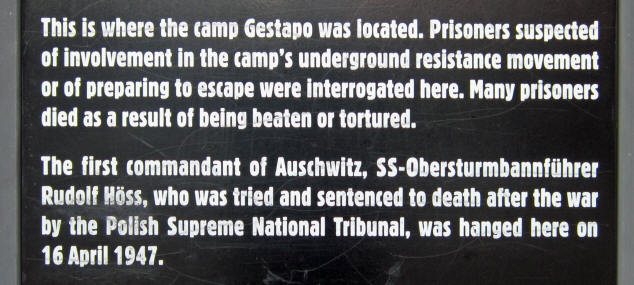
You remember Rudolf H�ss from earlier. He was the commandant of the camp and after the war was tried and was hanged here April 16, 1947. Below is the gallows where he was hung (L mine, R Marcia's).
I then arrived at the most heart-wrenching part of this visit; the area of the crematorium where all the bodies were incinerated. It lies under this mound of ground. I thought it auspicious to come across this dead bird nearby.
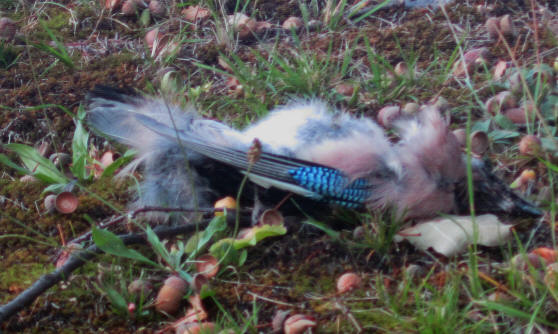

Below left is Marcia's photo of the reconstructed chimney above the mound. As you come around the front of the mound you are facing the entrance to the crematorium.
Here are stock photos of the mound to the crematorium.
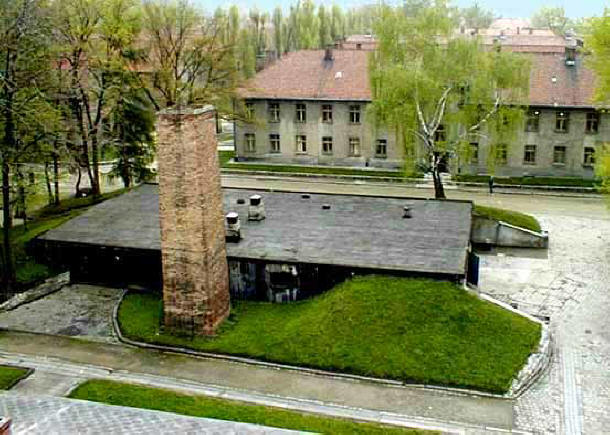
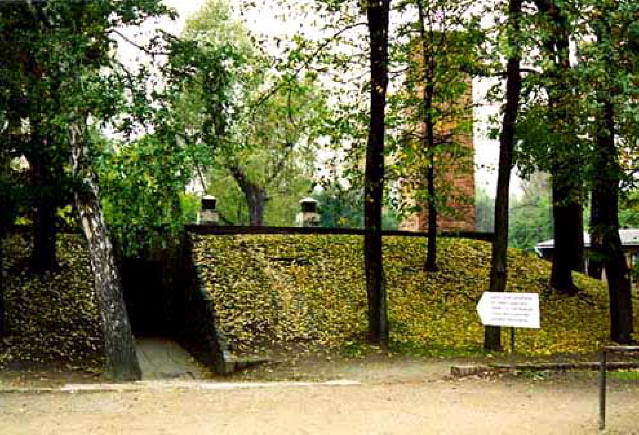
Above are stock photos of it. Nearby there is a large sign showing the layout of the building.
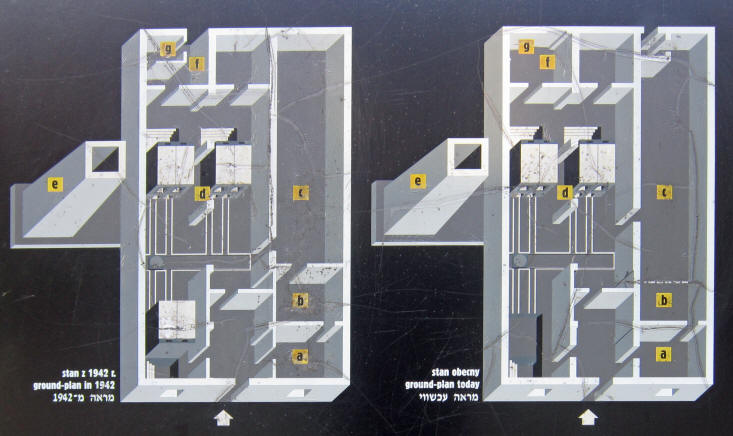

As you enter the building, there is a request for respectful silence.
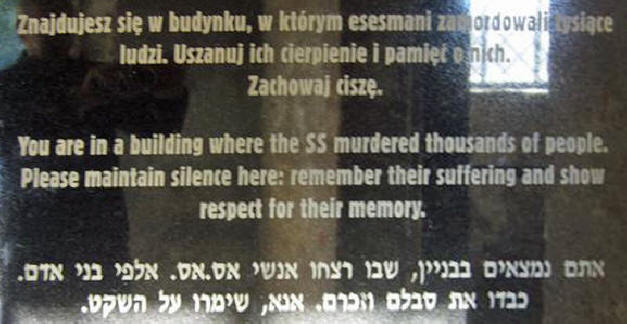
At the end of the long hallway is a flame with flowers, just before you enter the room with the gas ovens.
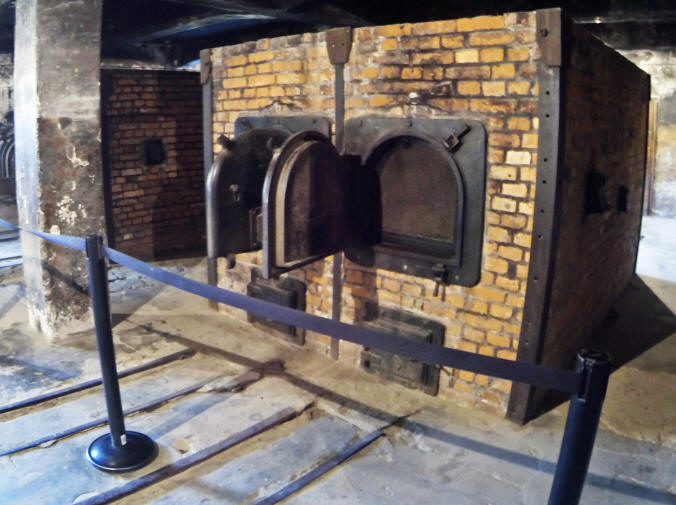
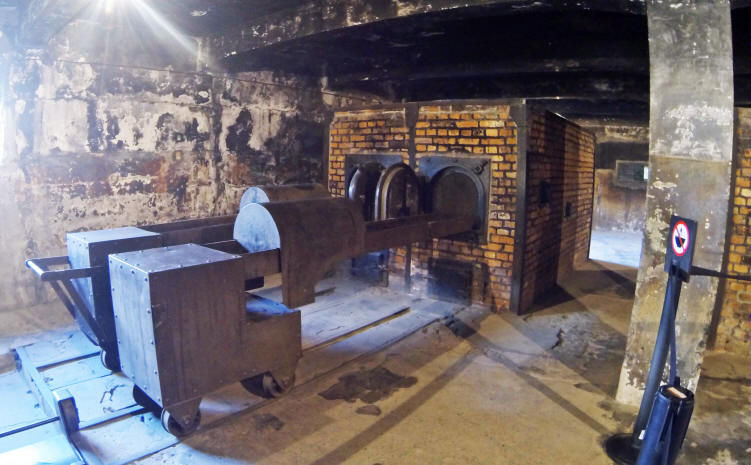
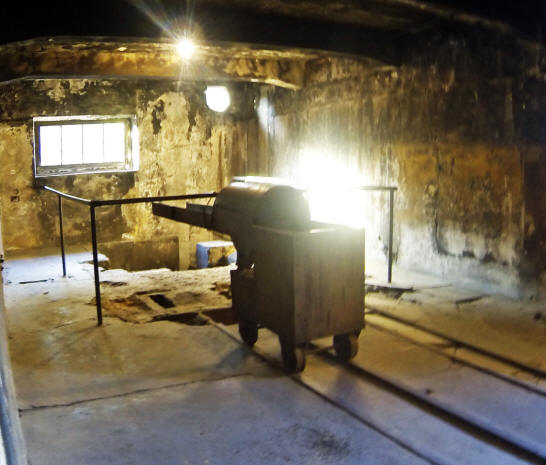
Above and below left are my photos of the ovens and on the right is a stock photo of George W and Laura Bush's visit here.

This last part was quite hard to take, imaging what took place here.
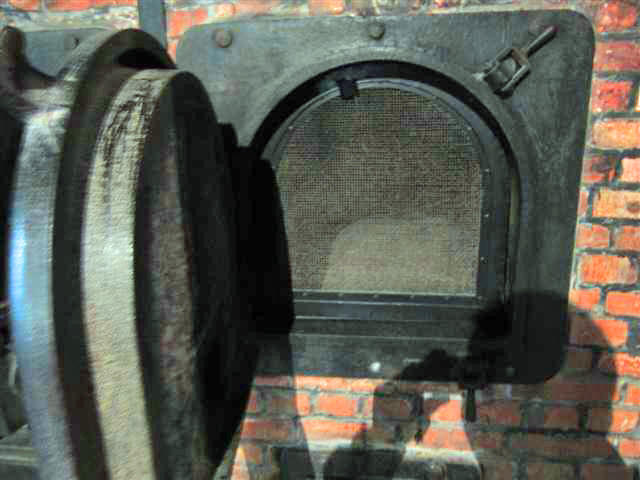
Nearby is the famous Auschwitz "swimming" pool supposedly used by Nazi officers (stock photo).
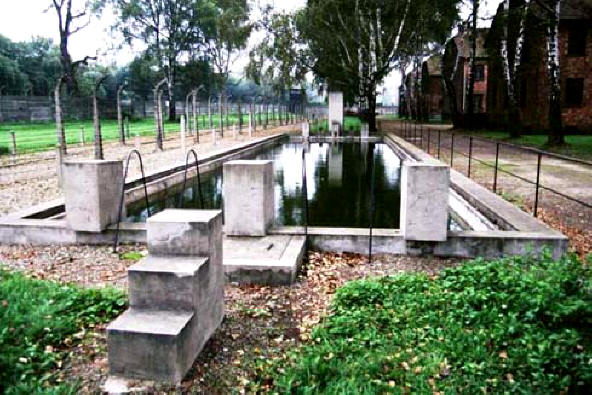
Marcia and I wound up meeting up here. We somberly left and started our walk toward the entrance.
We finally got to the "Arbeit" entrance sign (below) and exited the camp.
At 5:50 PM we went into the Visitor's Center and Marcia bought books at Ksiegarnia "Zak" bookstore for 263 zł. We saw the sign for the shuttle bus that would take us to the Birkenau camp and then saw this sign discussing the "Death March."
We wended our way out front and waited for the bus and got on it at 6:00 PM. The bus turned out to be free.
It was quite comfortable and the driver was adamant to let us know that the last time it would bring us back here was 6:45 PM. They had added two later buses than the 5:45 time.
It didn't take long to get there and as we get off the bus we see the edifice that has been stuck in our memory.
There was a large map of the layout of the main buildings here in Birkenau.
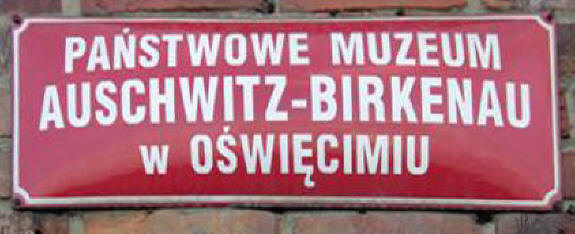
We went through the entrance and saw the size of the place. I found this stock photo of St. John Paul II during his visit here in 1979 (below right).
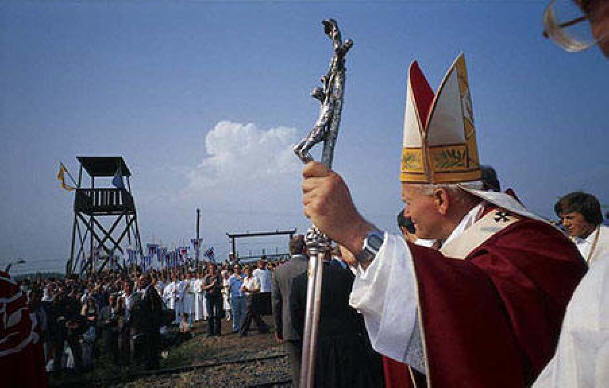
We went into the building and there they had many displays.
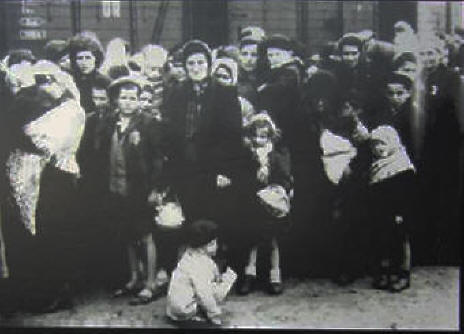
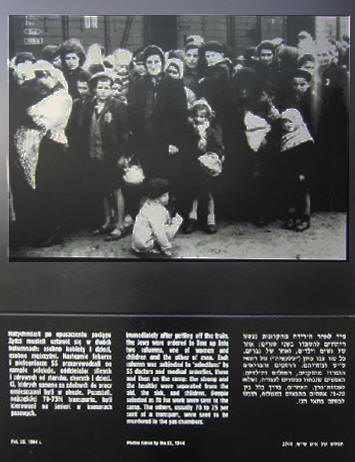
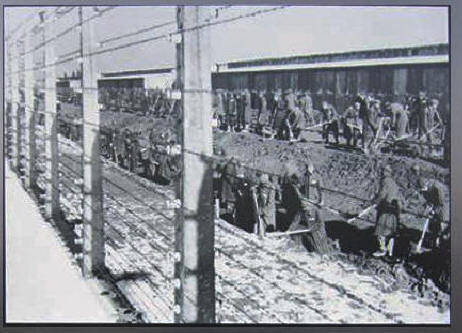
This camp here seems much larger than the one at Auschwitz.
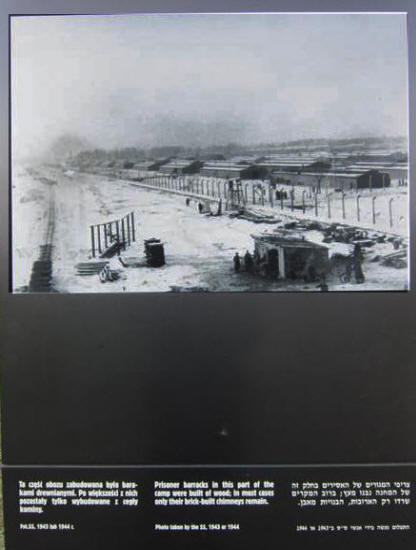
They had this aerial map of the Birkenau compound.
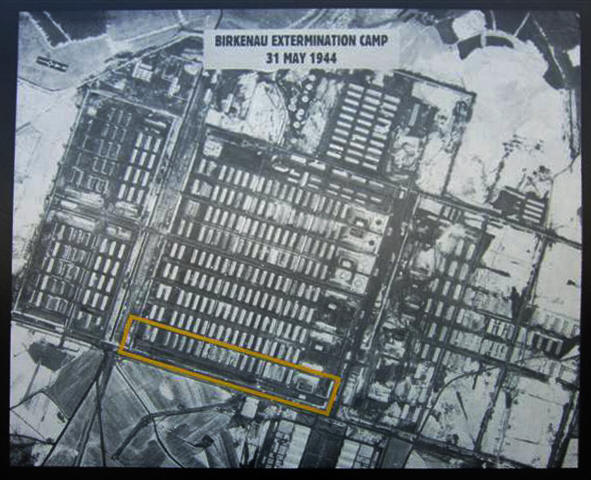
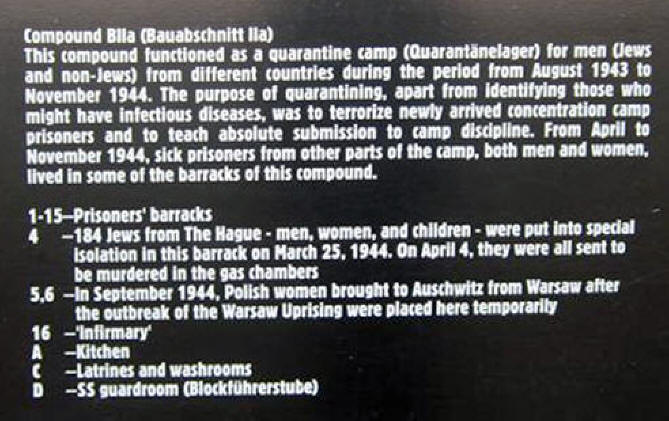
Here (below) is a PhotoStitch of the long line of barracks on the property.
We entered the first one we saw and this one was pretty empty of bunks, but walking all the way to the end of the building we got to the long toilet facility (below right).
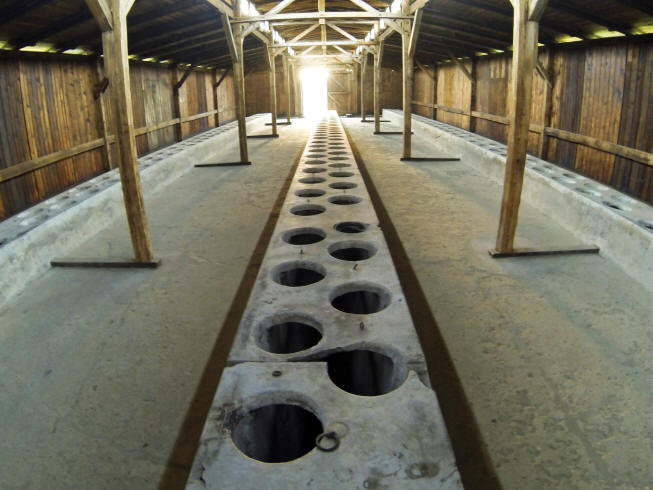
We then went into the next barracks that had a furnace and many bunk beds.
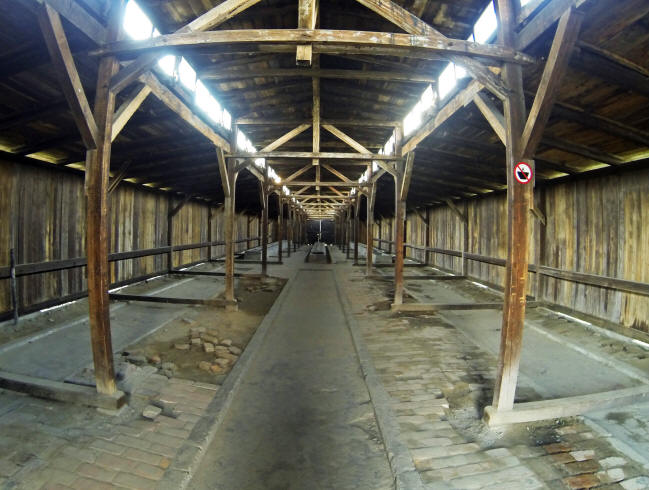
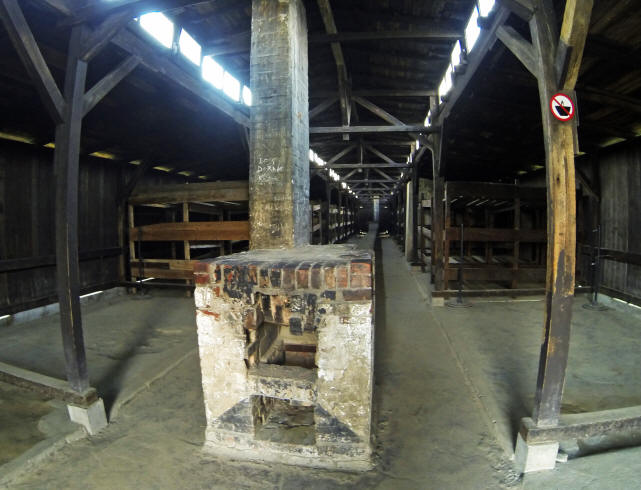
I walked further down to the middle and got this using GoPro and PhotoStitch.
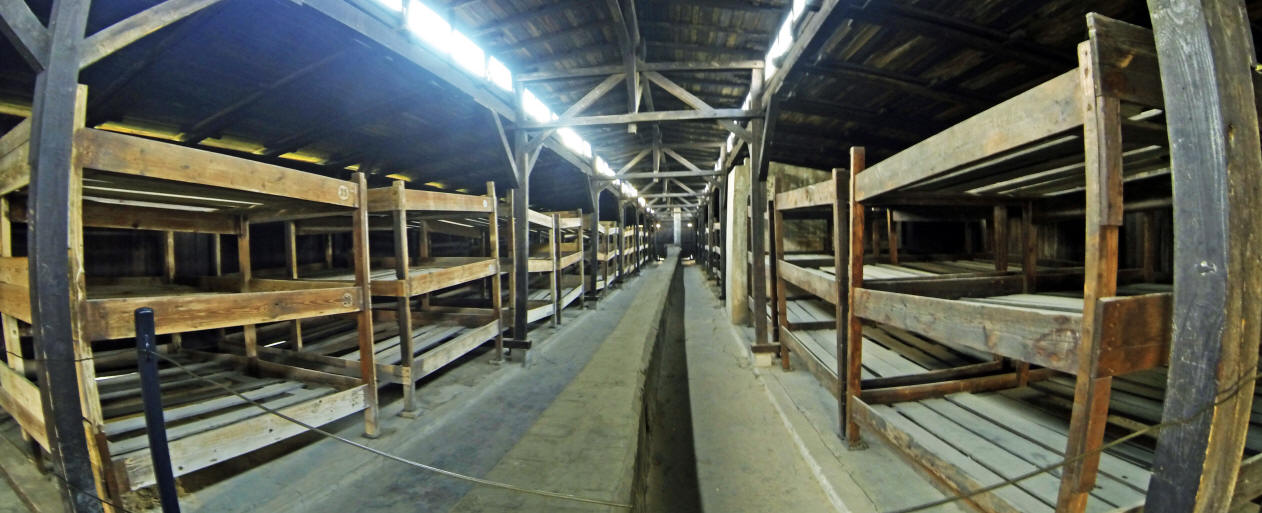
They had photos displayed of how it looked when it was occupied.
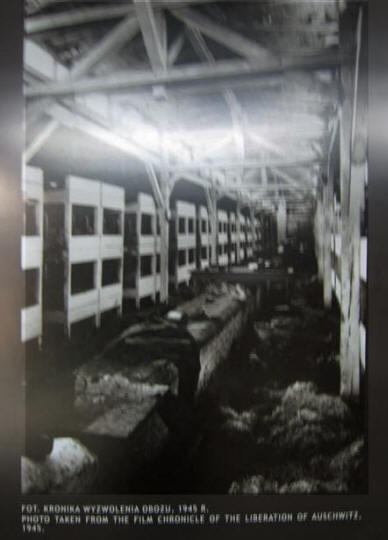

When going out of the back of the barracks you can see the wire fences and the remnant chimneys from the many other barracks that are no longer there (PhotoStitch).
When you get a closer look at them, you can see all that is left is the base concrete frame and the furnace with the chimney.
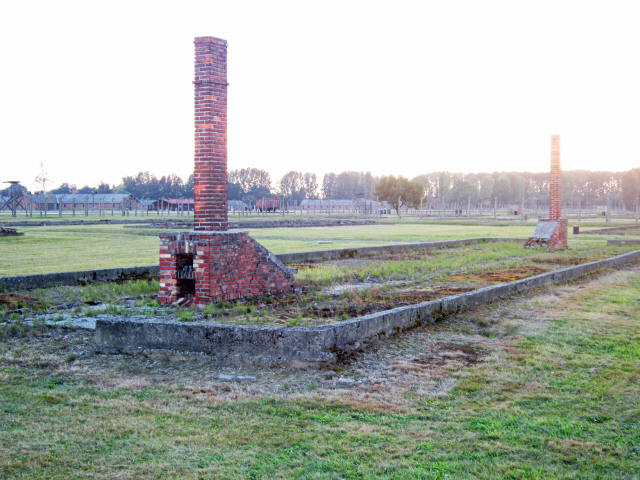
We finally wended our way back past all the barracks to the main structure, where we started.
I was compelled to take more photos of it.
The sun was setting and we finally had to call it quits before we miss the last bus. At 6:35 PM we went into their Tourist shop and we bought a book about Auschwitz for 13 zł.
We went outside and after waiting a few minutes, at 6:45 PM we caught the last bus back to Auschwitz I, where we started. As I got off the bus, I noted a sign stating the bus was donated by Volkswagen of Germany in June 2013, just a couple of months ago. Guess we were lucky.
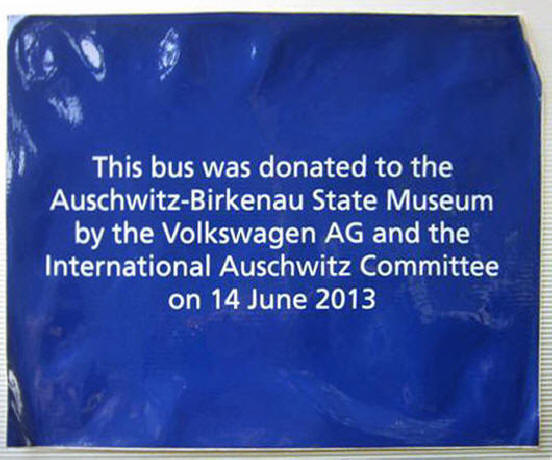
We arrived back at the parking lot at 6:50 PM and paid the parking of 8 zł. Then I drove the 42 miles (68 Km) back to Krakow. We got off the Autostrada at 7:35 PM and had to pay a toll of 9 zł. As we got into the city, we came to the heavily trafficked Grodzka street where we have to cross to get to our hotel and I noticed this make-shift memorial that was set up which was not here yesterday.
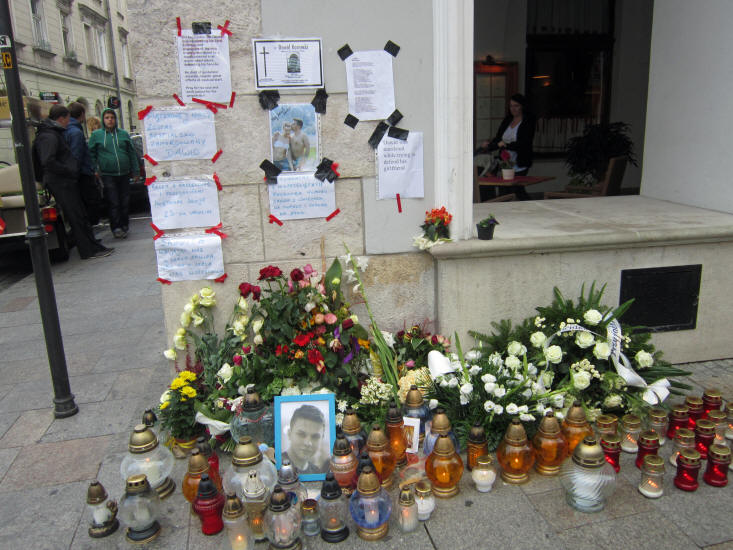
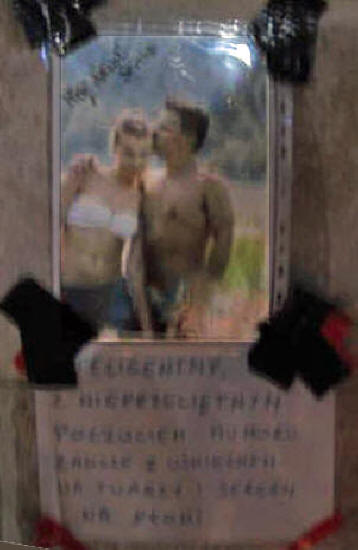
.jpg)
I later found out what happened. This young couple was celebrating his 23rd birthday and their engagement and while walking down Grodzka street last night the girl was accosted by a drunken vagrant. The guy attempted to protect his girl and the vagrant stabbed and killed him. What a terrible tragedy.
.jpg)
.jpg)
.jpg)
.jpg)
We arrive at our hotel at 8:05 PM; it took an hour and ten minutes to drive back. We headed out and I went across the street to finally see the inside of the church across the street (Dominican Basilica of the Holy Trinity) which I showed photos of way earlier in the day. There was a Mass going on when I was there.

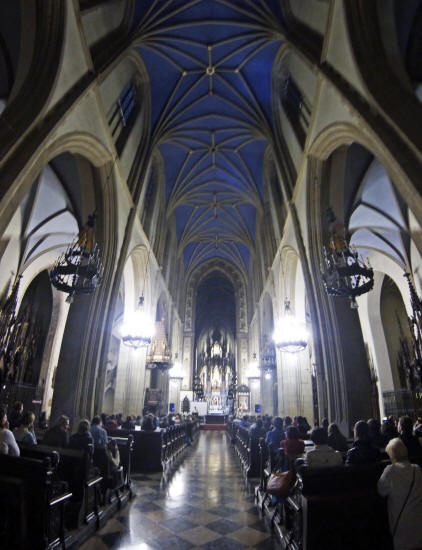
As we walked around, we saw some other churches.
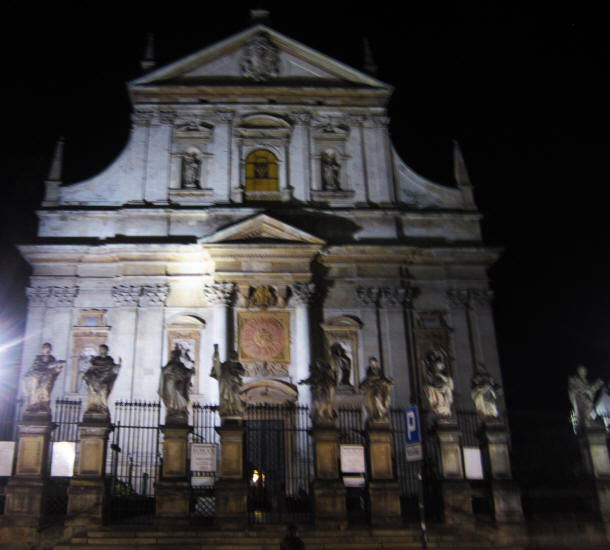
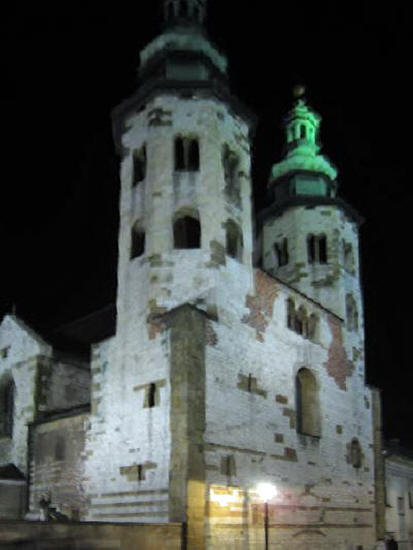
At 9:00 PM, we went into Hotel Senacki [Grodzka 51,
![]() +48-12-422-7686]
and We had a
Źywiec
beer and glass of red wine for 21
zł.
+48-12-422-7686]
and We had a
Źywiec
beer and glass of red wine for 21
zł.
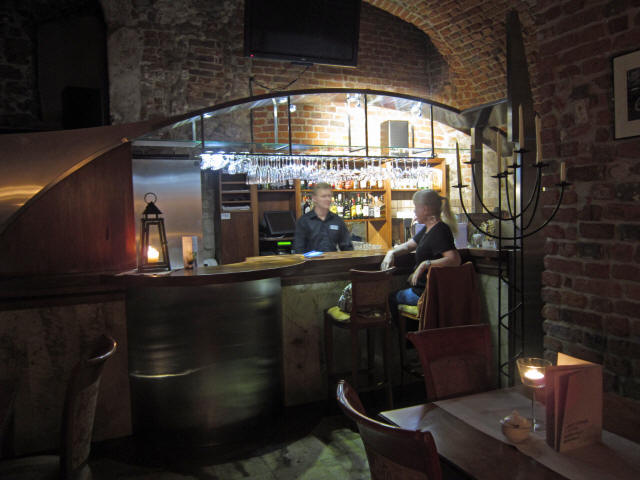
Our bartender was Tomasz (below left) and he was a very nice kid. We enjoyed our time there.
I took pictures of the maps of Krakow they had on the wall. You can see that sometimes it is spelled Cracovia.
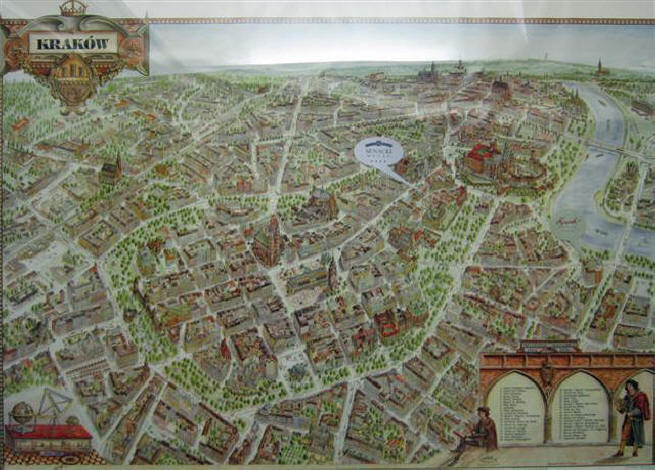
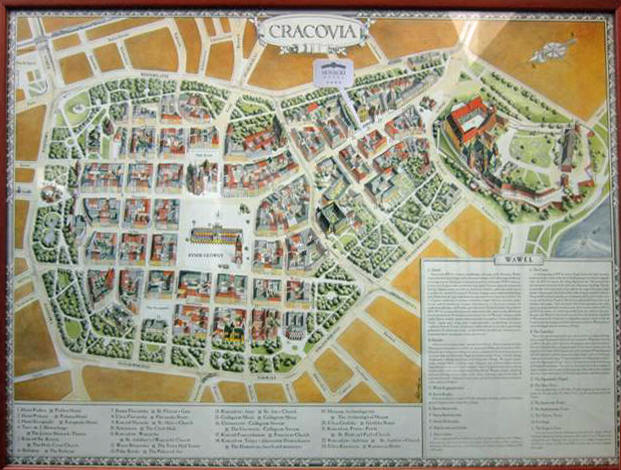
We got back to the hotel at 9:40 PM and Lukasz (below) recommended and made reservations for us and told us the cab ride should be no more than 15 zł. We appreciated his kindness.
So at 9:55 PM, we took a cab to the area known as Kazimierz. We arrived there at 10:05 PM and the cab only cost us 12 zł. Here some maps of this Jewish region of the city showing where our restaurant was located (below right).
.jpg)
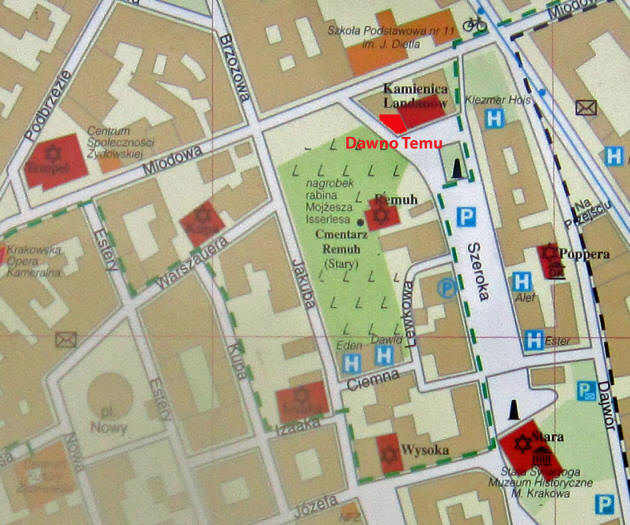
We had reservations at a classical Jewish restaurant in this area known as
Dawno Temu na Kazimierzu [Szeroka 1,
![]() +48-12-421-2117.]
The name means "Once Upon a Time in
Kazimierz." We sat down for dinner at 10:10 PM
and I went outside to take some photos of the area.
+48-12-421-2117.]
The name means "Once Upon a Time in
Kazimierz." We sat down for dinner at 10:10 PM
and I went outside to take some photos of the area.
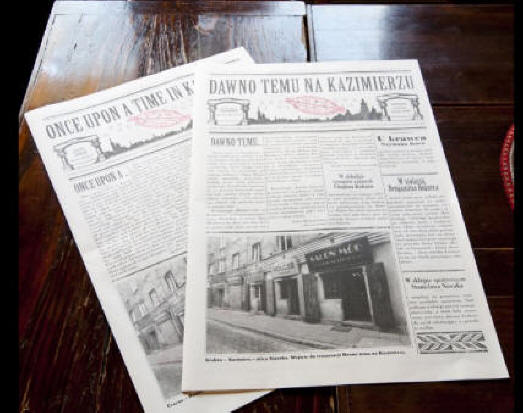
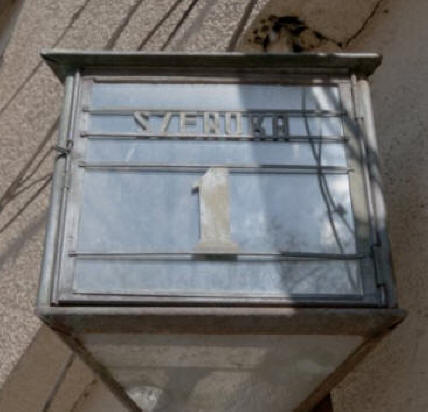
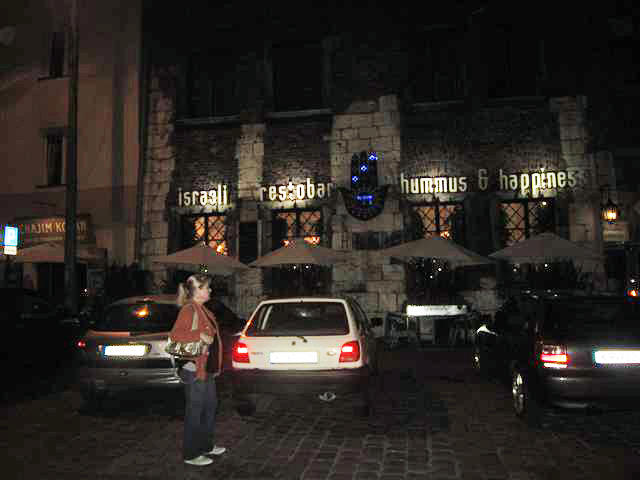
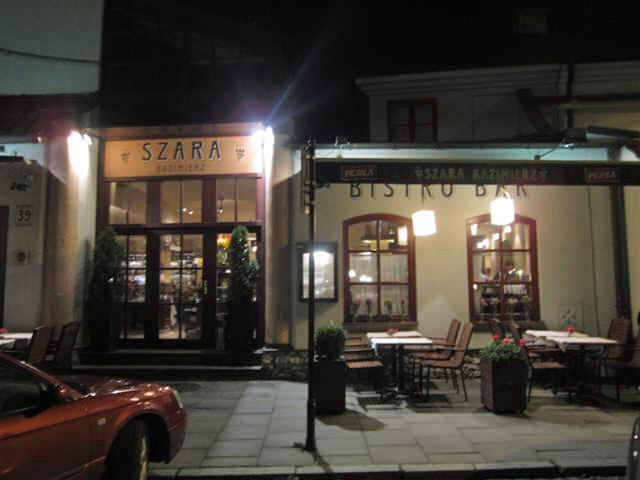
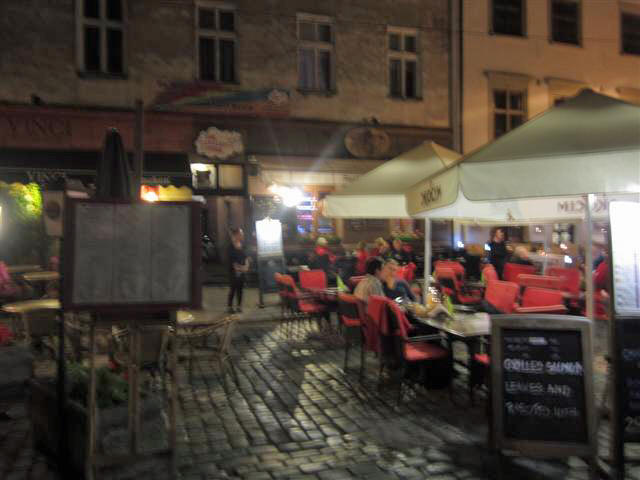
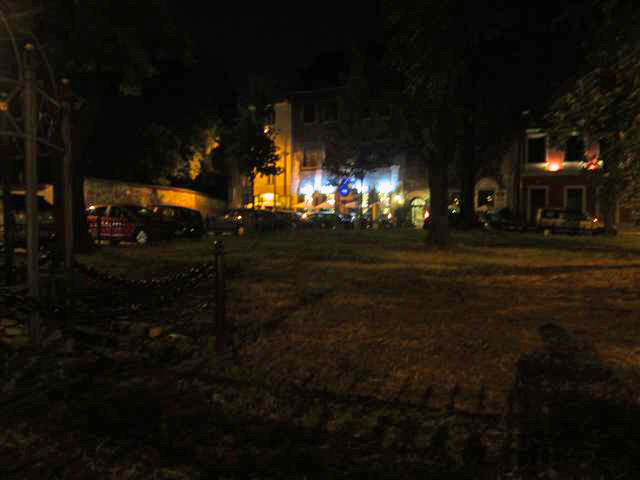
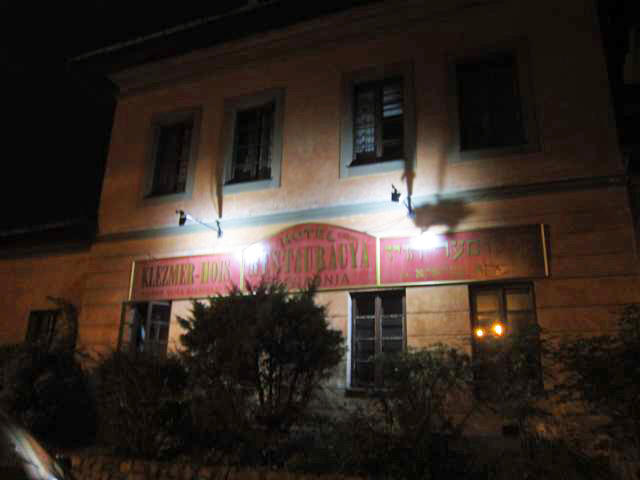
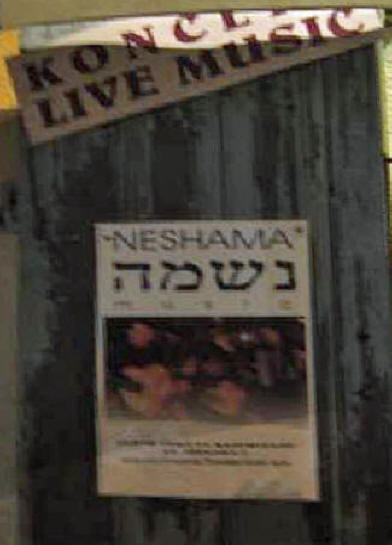
It is so very dark in the restaurant all my photos are underexposed because the flash would not have worked in here. Because of that I have found some stock photos just to show what it looks like.
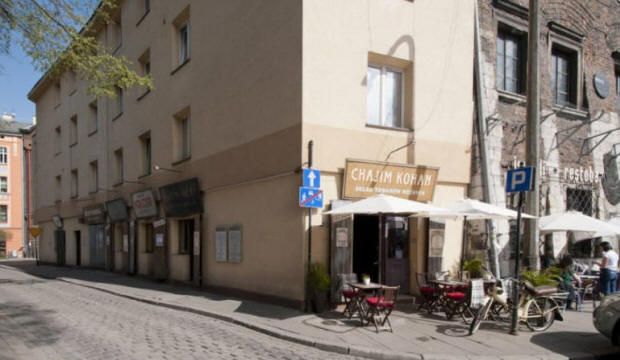
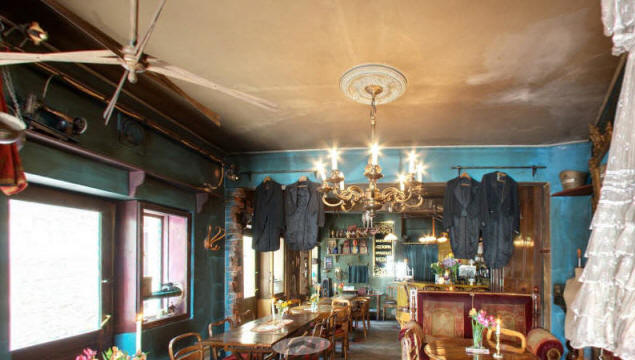
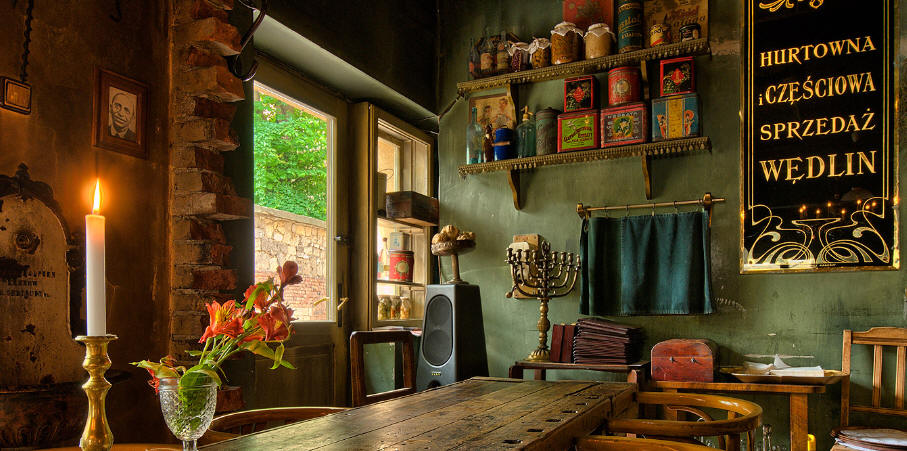
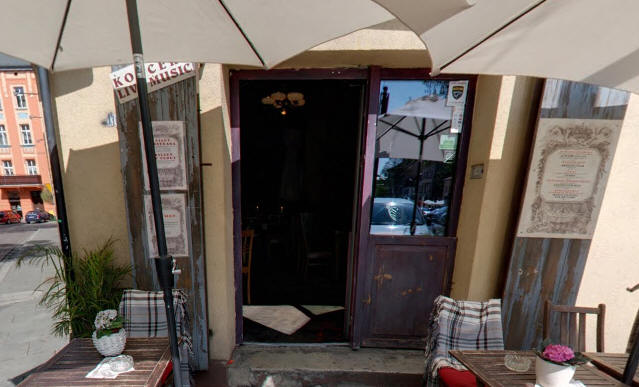
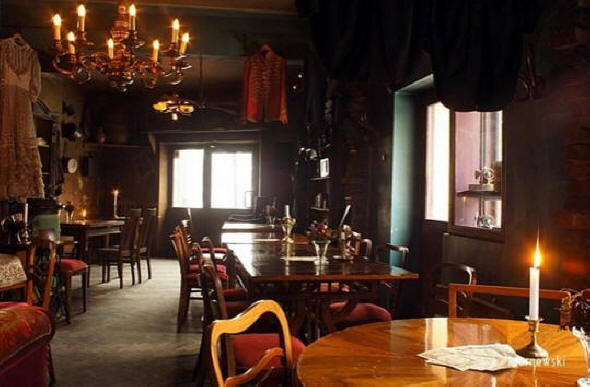

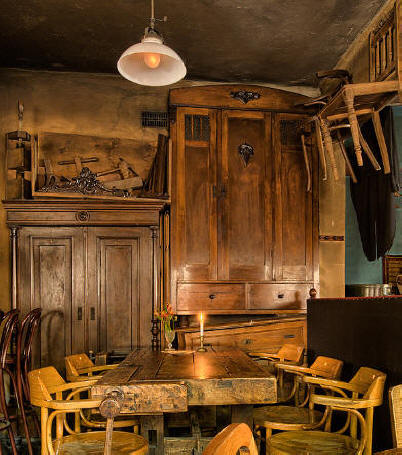
Here stock photos of the food they serve.
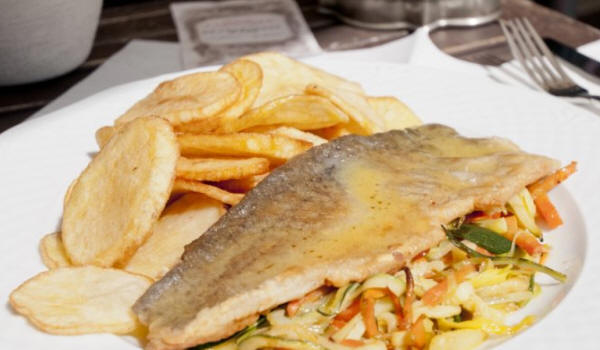
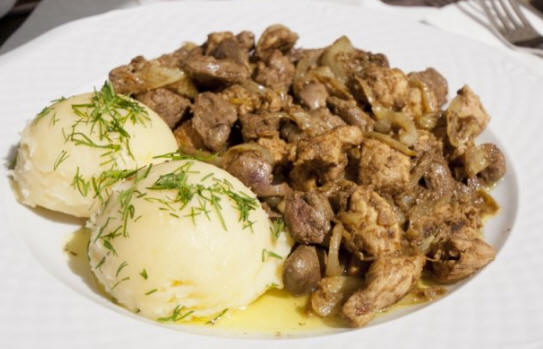
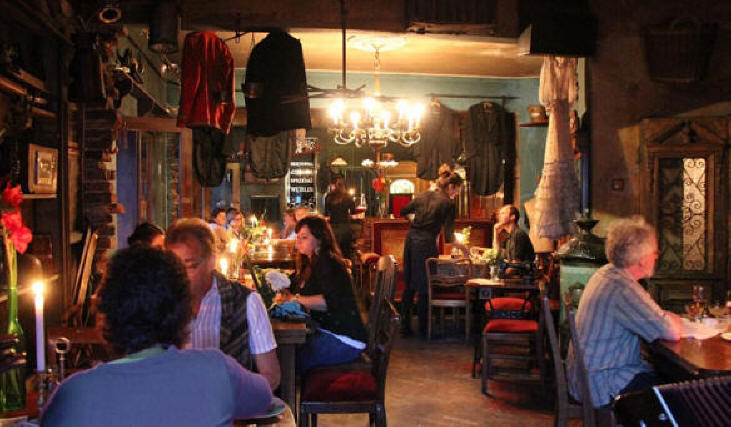
We looked at their unique menu which came in English (left side) and in Polish. It resembled a newspaper.
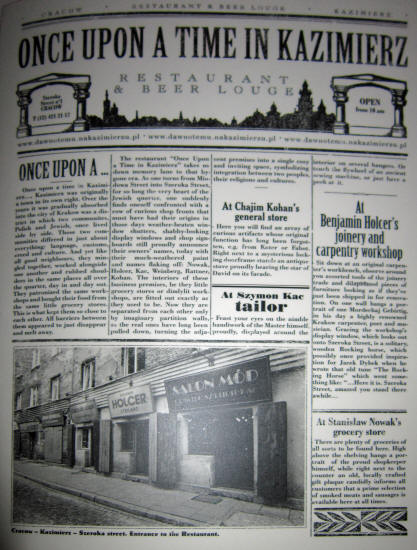
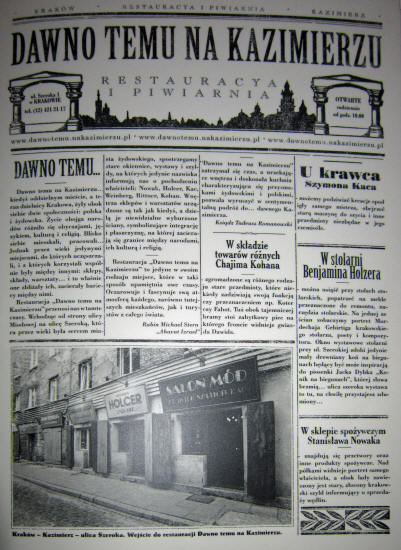
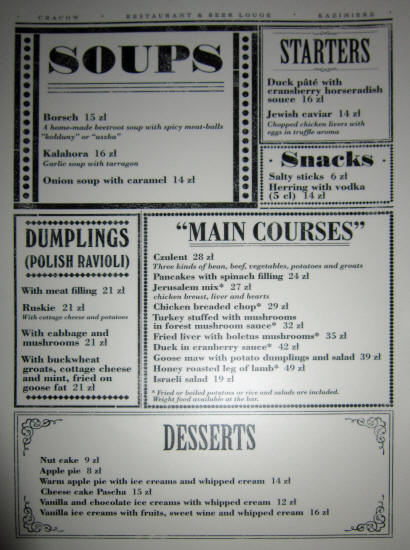
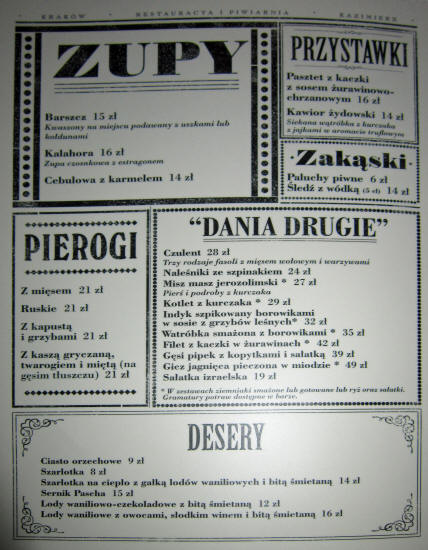
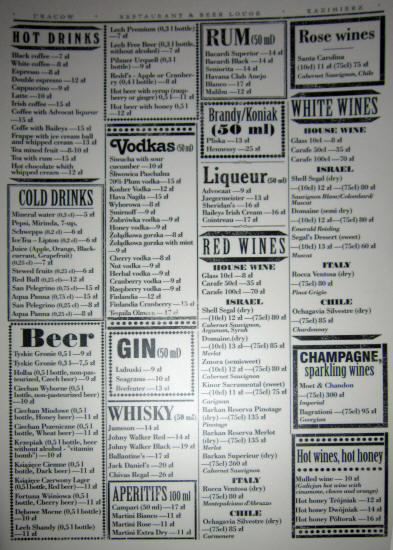
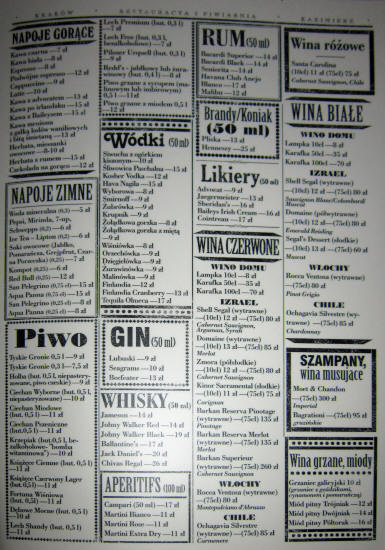
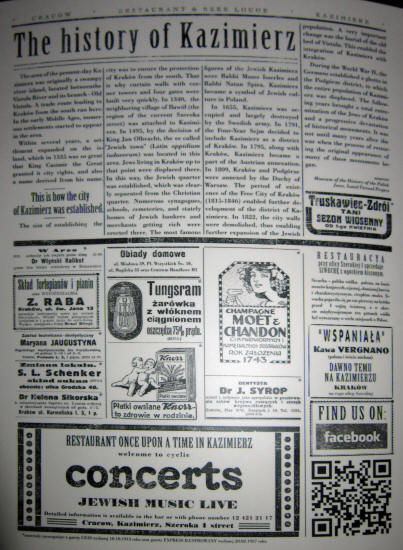
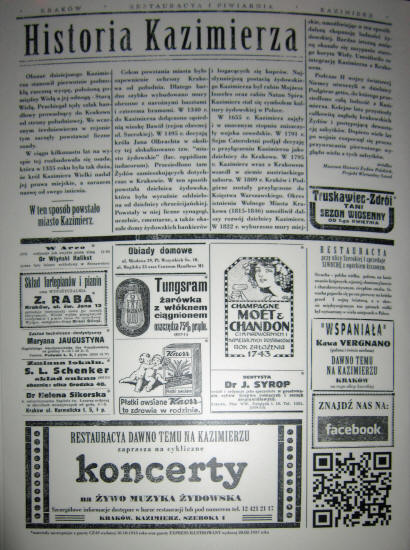
As I mentioned, the below photos are hard to make out.
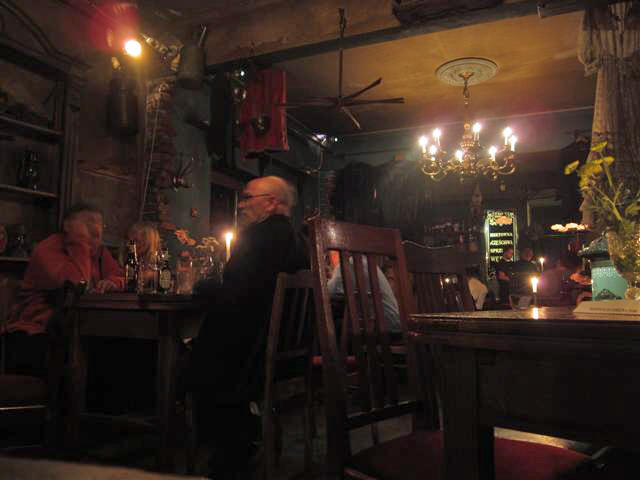
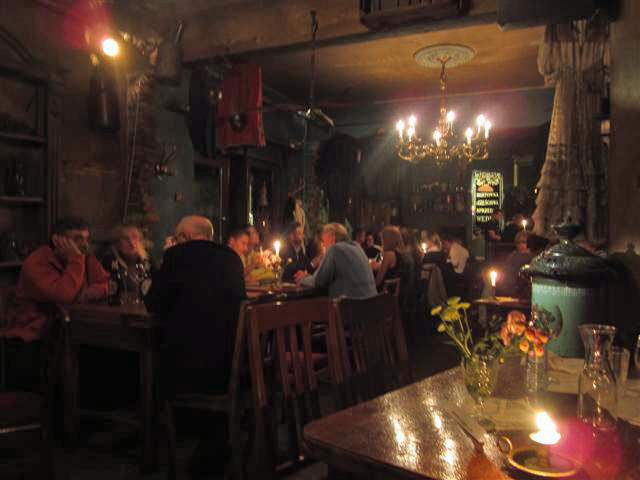
Marcia ordered a carafe of local wine (Wino domu) and I had a Tyskie beer.
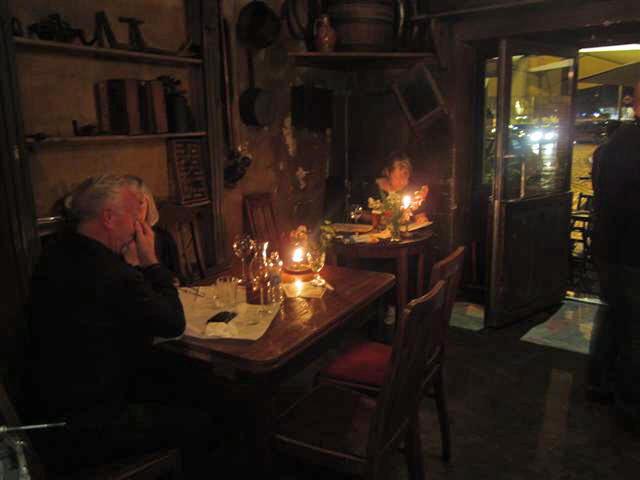
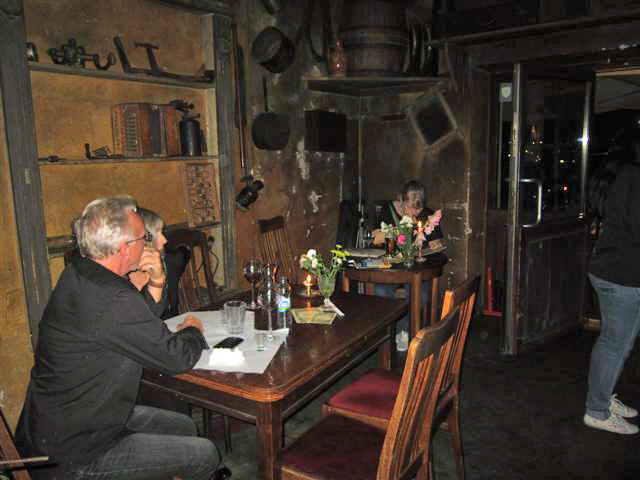
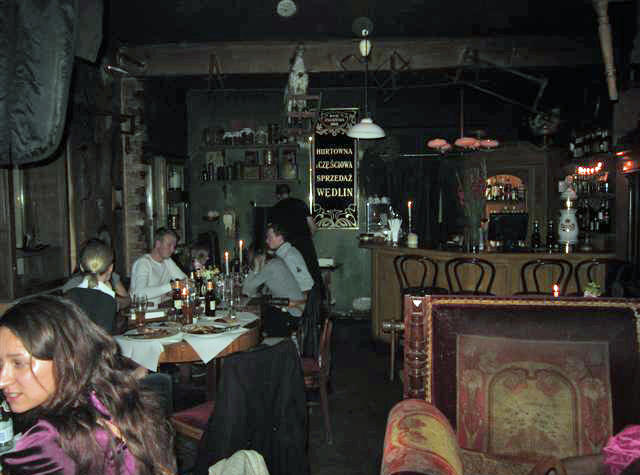
We both started with dry matza with yogurt and a jelly of hot peppers and garlic (below left.) I then decided to have herring with vodka (śiedź z w�dka) (below right.)
Then for an entree, I had filet z Kaczki (duck with crisp potatoes) (below left) that came with a cabbage dish and red cabbage (below right.) They were all very tasty.
Marcia started with their special tonight; pumpkin soup with aniseed and noodles (Krem z Dyni z anyźem I wstąźkami naleśnikowymi.)
This was followed by the famous Polish boiled pierogi (pierogi z miese) of which I tried a few.
Our waiter was Simon and we rated our meal as Good-Excellent. The whole evening cost us 133.5zł ($43.28) plus tip. Then at 11:00 PM we met Sean and Andy McCarthy, a couple from Bristol (UK) and he bought me a beer. They were fun. For such a funky place, I thought the restroom very very clean and modern.
At 11:40 PM
we took a taxi back to our hotel for 14
zł and when we got back we decided to walk around and see some of the
Krakow nightlife. They were playing good music at Restauracja Marta
Burzynska Action Group [Grodzka 1,
![]() +48-66-370-0204]
so at 12:00 we went inside, found a seat in the corner and had a Tyskie and white wine
which only cost 16 zł. As you can see on Marcia's face, we are a
little worn out.
+48-66-370-0204]
so at 12:00 we went inside, found a seat in the corner and had a Tyskie and white wine
which only cost 16 zł. As you can see on Marcia's face, we are a
little worn out.
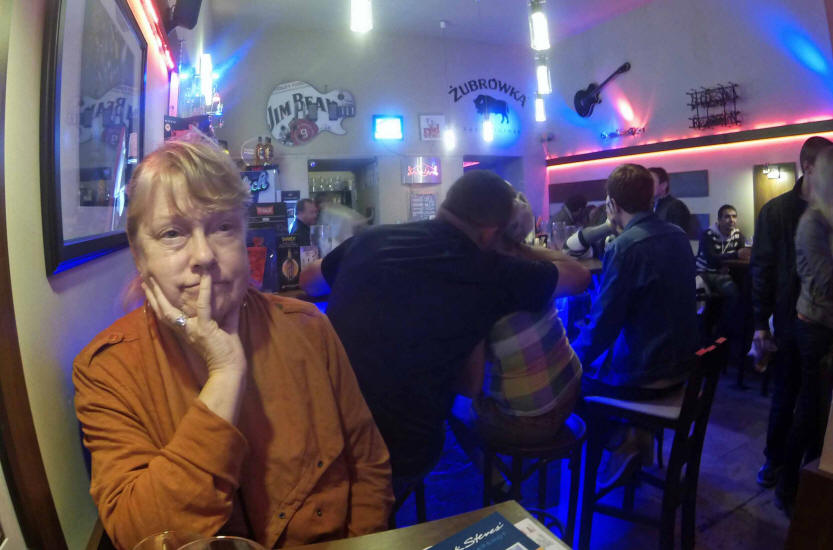
The live band was pretty loud and raucous.
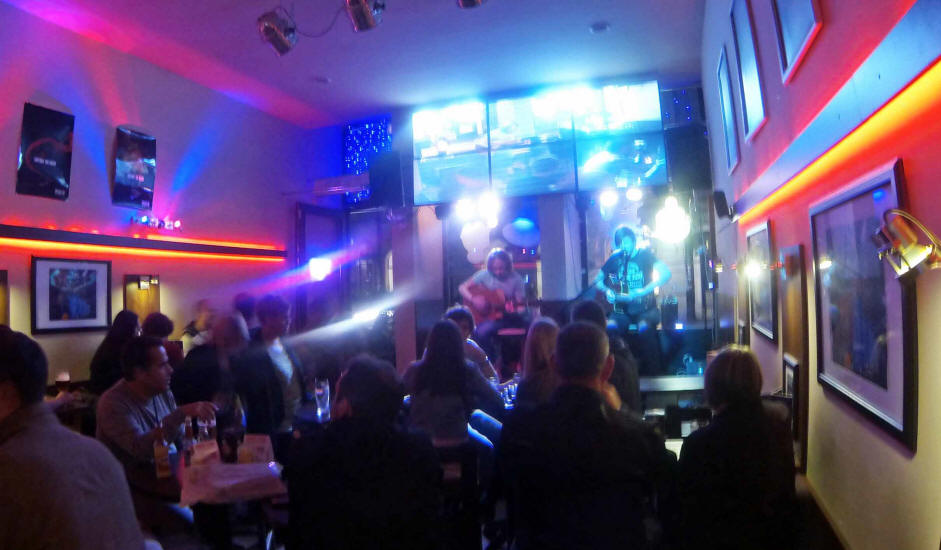
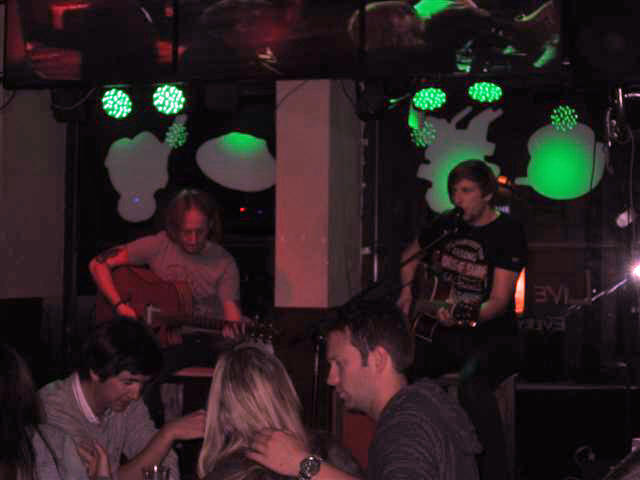
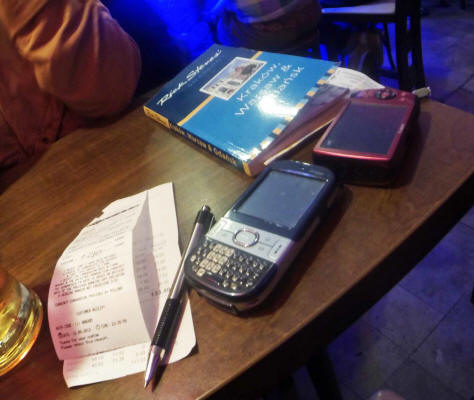
This was a very long and emotionally draining day for the both of us. The memories of today will haunt me for the rest of my life. What a beautiful city.

We got back to the hotel and went to bed at 1:30 AM.
Kenneth J. Hoffer, MD
Krakow, Poland
Sent 7-20-2016
If you enjoyed these travels or wish to add comments on the places we visited
Please Leave Me a Message by clicking the spinning @ sign below.

